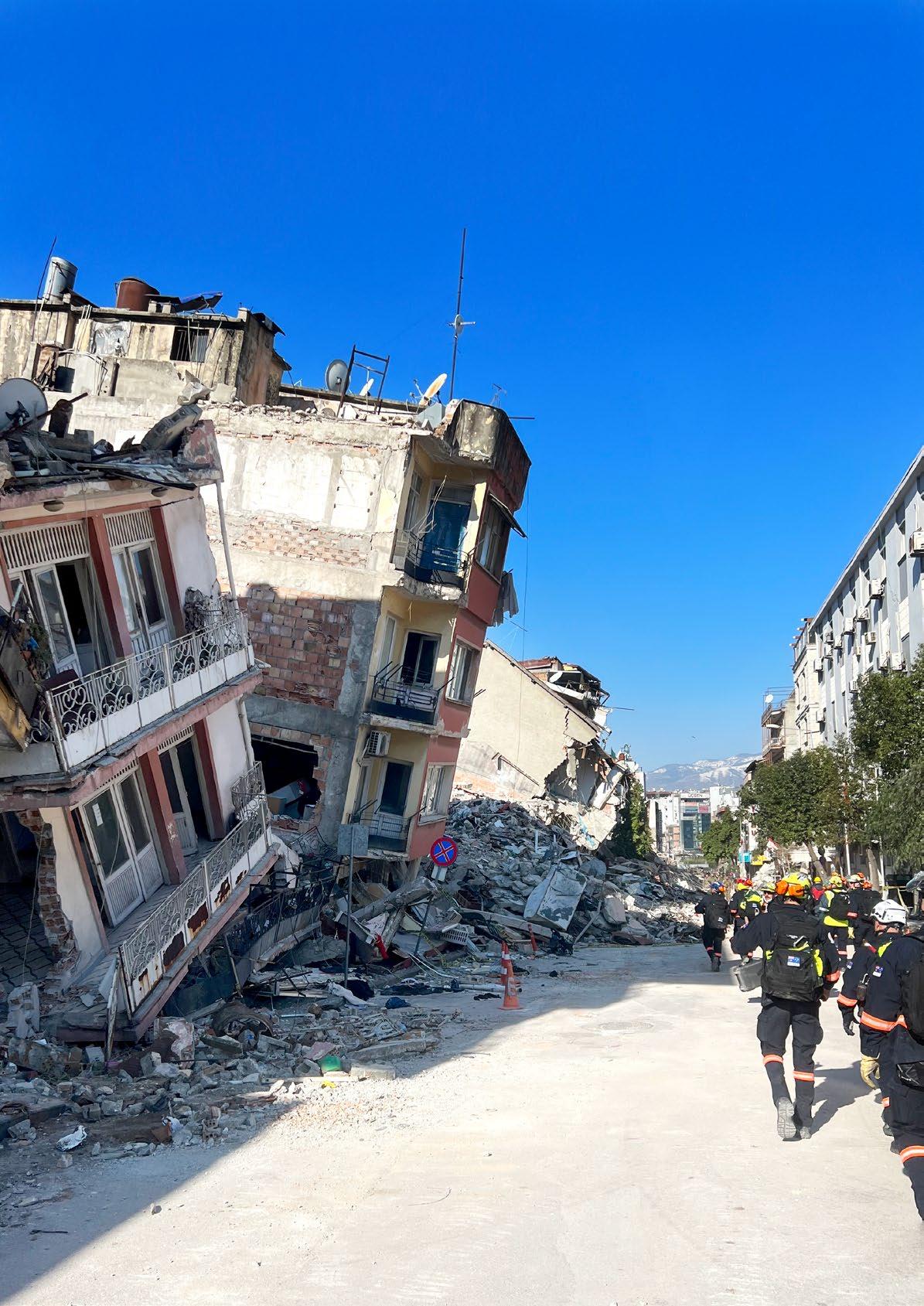
Bulletin Australian and New Zealand College of Anaesthetists & Faculty of Pain Medicine AUTUMN 2023 On the disaster relief frontline Reconciliation Action Plan: ANZCA launch a first Sugammadex: An update on perioperative anaphylaxis

1 The Doctors’ Health Fund Member Satisfaction Research Report 2022. IMPORTANT: Private health insurance products are issued by The Doctors’ Health Fund Pty Limited ABN 68 001 417 527, a member of the Avant Mutual Group. Cover is subject to the terms & conditions (incl. waiting periods, limitations & exclusions) of the individual policy, available at www.doctorshealthfund.com.au/our-cover. DHF 370_3/23 Health cover designed for doctors Join now 1800 226 126 doctorshealthfund.com.au SWITCH IN 2 EASY STEPS Choose the hospital and extras to suit your needs – we can provide a comparison with your existing fund 1 Apply online in 5 minutes or apply over the phone 2 Benefits up to the AMA list for Top Cover Gold hospital You choose your healthcare providers Exceptional member service 95% satisfaction1 91% of calls answered within 30 seconds ADVERTISEMENT
Dr Dominic Barnes Member since 1993
ANZCA Bulletin
The Australian and New Zealand College of Anaesthetists (ANZCA) is the professional medical body in Australia and New Zealand that conducts education, training and continuing professional development of anaesthetists and specialist pain medicine physicians. ANZCA comprises about 7500 fellows and 1700 trainees mainly in Australia and New Zealand. It serves the community by upholding the highest standards of patient safety.
Medical editor: Dr Tanya Selak
Editor: Clea Hincks
Production editor: Liane Reynolds
Feature writer: Carolyn Jones
Advertising manager: Vivienne Forbes
Designer: Michelle Nightingale
We encourage the submission of letters, news and feature stories. Please contact Bulletin editor Clea Hincks at chincks@anzca.edu.au if you would like to contribute. Letters should be no more than 300 words and must contain your full name, address and telephone number. They may be edited for clarity and length. To advertise please contact communications@anzca.edu.au.
Copyright Copyright © 2022 by the Australian and New Zealand College of Anaesthetists, all rights reserved. None of the contents of this publication may be reproduced, stored in a retrieval system or transmitted in any form, by any means without the prior written permission of the publisher. Please note that any views or opinions expressed in this publication are solely those of the author and do not necessarily represent those of ANZCA.
ISSN: 1038-0981 (print) 2206-5423 (online). ANZCA may promote articles that appear in the Bulletin
SECTION GOES HERE 1
in other
and ANZCA social media platforms. Contact us ANZCA, 630 St Kilda Road, Melbourne Victoria 3004, Australia +61 3 9510 6299 communications@anzca.edu.au www.anzca.edu.au Faculty of Pain Medicine +61 3 8517 5337 fpm@anzca.edu.au The ANZCA Bulletin has been printed on FSC certified paper using vegetable-based inks by Southern Impact under ISO14001environmental certification. It is fully recyclable. President’s message 2 Australia Day honours 3 Chief executive officer’s message 4 Letters to the editor 5 ANZCA and FPM in the news 6 Advocacy at ANZCA 8 ANZCA’s professional documents 12 Fellow profile – Dr Rajdeep Basu Roy 16 College reaccreditation 18 Perioperative medicine 20 Indigenous health 24 Anaesthetists on the frontline 28 Safety and quality 34 Continuing professional development 44 Pride at Mardi Gras 50 Doctors’ health and wellbeing 52 Environmental sustainability 58 Faculty of Pain Medicine 64 Training and education 70 ANZCA Clinical Trials Network 73 ANZCA Foundation 74 Library news 76 Obituaries 80 Contents Indigenous health PAGE 24 Cover image: A scene of devastation in the destroyed Turkish city of Antakya. (Photograph: supplied.)
forums such as the ANZCA website
Big year ahead with new college offerings
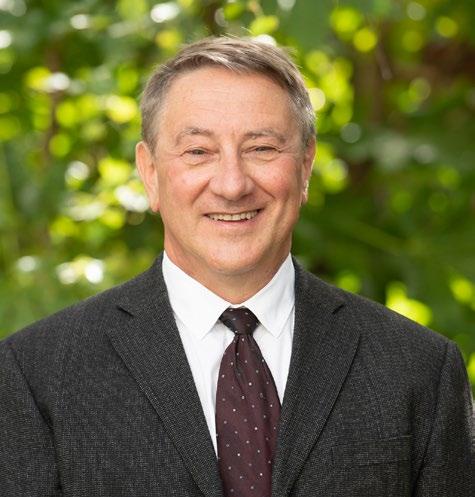
This is an eventful year for our college with, among many other things, the introduction of two new diplomas and a Reconciliation Action Plan. The ANZCA Annual Scientific Meeting in Sydney will also be an educational event not to be missed.
NEW DIPLOMAS
This year we will be launching two new educational offerings in the form of diplomas. They have completely different target audiences but are both aimed at addressing an essential requirement in the modern healthcare system.
The Diploma of Rural and Generalist Anaesthesia (DipRGA), a collaboration between ANZCA and the Australian College of Rural and Remote Medicine (ACRRM) and the Royal Australian College of General Practitioners (RACGP), has launched with an intake of trainees in February.
Congratulations to councillor Associate Professor Debbie Wilson and her team for bringing this project online to replace the Joint Consultative Committee on Anaesthesia qualification with a more contemporary, nationally consistent education model.
The new one-year training program is targeted at ACRRM and RACGP trainees and fellows seeking formal training and certification in anaesthesia.
The graduates will be certified to anaesthetise children to age five but we have partnered with the Society of Paediatric Anaesthetists of New Zealand and Australia (SPANZA) to create an advanced certificate that allows children aged between three and five years to be cared for.
ANZCA is the recognised standard setter for anaesthesia in Australia and New Zealand and I'm proud we have led this program.
Our second offering, to be released later this year, has the promise of being a gamechanger.
Perioperative medicine is the multidisciplinary, integrated care of patients from the moment they decide to have surgery until they achieve their optimal outcome.
We aim to produce perioperative medicine specialists who will coordinate the steps in the patient’s perioperative journey with shared decision making at the core.
Anaesthesia is now so safe the postoperative risk is 1000 times greater than the intraoperative risk. Prevention and management of postoperative complications will be one of the most obvious benefits of the widespread introduction of a perioperative medicine specialist into the care framework.
The Diploma in Perioperative Medicine (DipPOM) has been created in collaboration with the College of Intensive Care Medicine (CICM), the Royal Australasian College of Surgeons (RACS), the Royal Australasian College of Physicians (RACP), the Royal New Zealand College of General Practitioners (RNZCGP), RACGP and ACCRM.
The Perioperative Medicine Steering Committee, chaired by Dr Sean MacManus and councillor Dr Vanessa Beavis, is to be congratulated for creating such a collaborative environment for each college to engage and contribute so effectively.
Our clinical diploma, the first of its kind, will consist of six online modules, clinical immersions and workshops undertaken over one to two years.
2 ANZCA Bulletin | Autumn 2023
This is a major undertaking of the college and has placed us at the forefront of this evolving and developing specialty.
It's interesting to compare these two offerings. The DipRGA has a predominant focus on the intraoperative care of relatively well patients requiring minor surgery in rural and remote locations whereas the DipPOM is targeted at the perioperative period of higher acuity patients with complex comorbidities requiring major surgery.
While at opposite ends of the clinical spectrum both are important in our contemporary healthcare model. Many of you may also be aware of the recent challenge with specialty medical colleges using the term “diploma" which remains unresolved.
I am pleased to report at our recent meeting of the Council of Presidents of the Medical Colleges (CPMC), unanimous support for allowing accredited medical education providers such as ANZCA to continue to award diplomas. The CPMC is calling for changes to the relevant Australian federal legislation so colleges can continue to award diplomas. Watch this space.
RAP

We finally have our RAP in place thanks to the efforts of the RAP Working Group chaired by FPM Board member Dr Susie Lord. This is an important step for the college and I encourage you to check out the details at www.anzca.edu.au/safetyadvocacy/indigenous-health/reconciliation-action-plan, including the fantastic artwork created for us.
Australia Day honours
The two main aims are to provide the best culturally appropriate care for our patients and to promote and encourage Aboriginal and Torres Strait Islanders to choose ANZCA as their specialist college.
Across the Tasman, our New Zealand colleagues recently attended the launch of the Cultural Safety Training Plan for Vocational Medicine in Aotearoa.
It’s the first plan of its kind worldwide to be implemented into the curriculum of specialist medical training and will help achieve equity and the aspirations of Māori towards reaching their full health potential (see page 27).
I hope this is the beginning of a journey that will eventually see our college membership reflective of the communities we serve.
Finally, I'm looking forward to meeting many of you at the ASM and FPM Symposium in Sydney from 5-9 May. This promises to be one of the most impressive educational events we have ever created with a fantastic social program as well.
I am particularly excited about the welcome function at the newly opened wing of the Art Gallery of NSW. Congratulations to the co-convenors, councillor Dr Tanya Selak, and Dr Shanel Cameron and the organising committee for putting together such a marvellous event.
Dr Chris Cokis ANZCA President
Two fellows have been recognised in the 2023 honours list:
MEMBER OF THE ORDER OF AUSTRALIA (AM)
Dr Geoffrey Dobb (WA)
Dr Dobb, who is also a fellow of the College of Intensive Care Medicine, was recognised for significant service to intensive care medicine and professional associations. Dr Dobb is head of the intensive care unit at Royal Perth Hospital and a board member of the Australian Council on Healthcare Standards and the WA Child and Adolescent Health Service.
MEDAL OF THE ORDER OF AUSTRALIA (OAM)

Dr Vernon Moo (Qld)
Dr Moo has been honoured for service to medicine as an anaesthetist and is based in Brisbane. He works as a senior visiting specialist at the Princess Alexandra Hospital and privately through Gabba Anaesthesia. He has practised in Australia, the UK and Antarctica and has volunteered for more than 50 missions with Interplast Australia and New Zealand, Operation Smile and other charities. He has also served in the Royal Australian Navy on peacekeeping and humanitarian operations.
PRESIDENT'S MESSAGE 3
ANZCA’s new strategic drivers map our priorities
Our objectives reflect our intent and focus as we work to achieve what is expressed in our strategic priorities. In formulating the projects that will deliver against these objectives, we will consider what to take forward from our existing work, what to stop doing and where we can direct energy towards new initiatives.
The four pillars of our plan are:
• Lead: Anaesthesia, pain medicine and perioperative medicine
• Engage: Workforce, wellbeing, equity and diversity
• Support: Fellows, trainees, SIMGs, graduate experience
• Sustain: Leading specialist medical college
In recent weeks, we have been focusing on the college’s strategic drivers which are based on three important documents that have been developed to help guide the college’s way forward in 2023 and beyond.
These strategic drivers are captured in the ANZCA Strategic Plan 2023-2025, our Australian Medical Council (AMC)/ Medical Council of New Zealand (MCNZ) reaccreditation report and our Reconciliation Action Plan (RAP).
We are now in the process of finalising operational plans for our strategic plan and the conditions outlines in the reaccreditation report. Operational plans for the RAP are already complete.
We plan to undertake ongoing engagement with ANZCA and FPM committees and other key stakeholders on relevant actions and activities, with committee workplans and initiatives to be mapped back to our strategic drivers.
STRATEGIC PLAN
As described in the Summer edition of the Bulletin, the ANZCA Strategic Plan 2023-2025 was developed in the context of recognising the rapidly changing global environment created by the COVID-19 pandemic. Council, the FPM Board, the Executive Leadership Team and senior staff collaborated on the development of the strategic plan that was also informed by recent fellowship and trainee surveys.
Our strategic priorities were formed from an objective view of the strategic opportunities and risks present in the immediate and emerging conditions, and ensure we will be aligned and equipped to generate long term sustainable value.
During last year’s review of the ANZCA strategic plan, we identified that the mission statement of the college was outdated and could be improved. Following an ANZCA Council discussions, the mission ("to serve the community by fostering safety and high-quality patient care in anaesthesia, perioperative medicine and pain medicine") was replaced with a new purpose statement:
"Our purpose is to serve our communities by leading high quality care in anaesthesia, perioperative and pain medicine, optimising health and reducing the burden of pain."
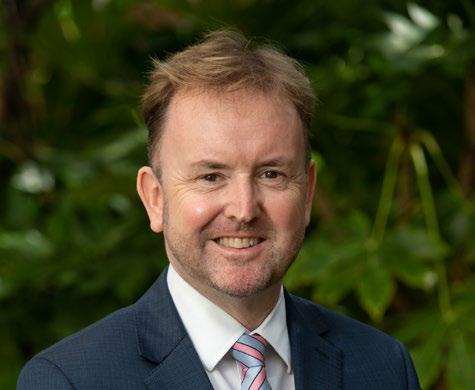
Our strategic plan can be found at:
www.anzca.edu.au/about-us/our-culture/strategic-plan
AMC MCNZ RE-ACCREDITATION
Last year the college received advice that it would be reaccredited by the Australian Medical Council (AMC) and the Medical Council of New Zealand (MCNZ) to continue delivering training programs for anaesthesia and pain medicine.
We received the final report in March which assured us that all standards against which the college is measured have been met and the college will be accredited for at least another six years.
Under the AMC/MCNZ re-accreditation process our anaesthesia and pain medicine training programs were assessed alongside our continuing professional development (CPD) program as well as our assessment of specialist international medical graduates.
The college received 27 commendations from the assessors and must meet 31 conditions to retain accreditation. Another 22 recommendations will also be considered.
The AMC report can be found at: www.anzca.edu.au/about-us/amc-and-mcnz-accreditation
RECONCILIATION ACTION PLAN (RAP)
Late last year, Reconciliation Australia approved the college’s first Reconciliation Action Plan (RAP). You can see details about our RAP on page 25.
4 ANZCA Bulletin | Autumn 2023
Although this is our first RAP, it is in fact a continuation of the work from our 2018-2022 Indigenous Health Strategy. In the development of the RAP, the working group met four times a year throughout 2021 and 2022. Business units were consulted during the development. The working group included two Aboriginal and one Aboriginal and Torres Strait Islander fellowof the college, one Aboriginal trainee of the college; two non-Indigenous fellows; and five staff members, one of whom identifies as an Aboriginal person.
After four rounds of feedback, Reconciliation Australia approved ANZCA’s Reconciliation Action Plan. There are three core pillars to our RAP – relationships, respect and opportunities – underpinned by governance and reporting practices.
There are 19 actions for staff and members across areas such areas as cultural safety, cultural celebration, recruitment and retention, participation, relationship building procurement and professional development.
There are 91 deliverables (including 54 mandatory Reconciliation Australia deliverables) to be completed from 2023 to 2024.
Towards the end of 2024 work will commence on a new RAP for implementation in 2025.
While the RAP is Australia-focused, across the Tasman, a plan is being developed to progress a Tiriti o Waitangi (Treaty of Waitangi) strategy for the college. The strategy will consider what actions ANZCA can take under each of the principles set out by the Waitangi Tribunal Health Services and Outcomes Inquiry and endorsed by the Ministry of Health in its “Whakamaua: Māori health plan 2020-2025”.
The action plan will also set out proposed New Zealandspecific actions that address our commitment statement, such as fostering the college’s relationship with Māori, supporting Māori fellows and trainees and striving to improve the health of Māori.
Our New Zealand colleagues recently attended the launch of the Cultural Safety Training Plan for Vocational Medicine in Aotearoa.
It’s the first plan of its kind worldwide to be implemented into the curriculum of specialist medical training, and will help achieve equity and the aspirations of Māori towards reaching their full health potential (see page 27).
Nigel Fidgeon ANZCA Chief Executive Officer
Letters to the editor
NO ABSOLUTION FOR SINNERS
I was disappointed to read the piece “A sinner’s prayer” in the letters section of the Summer ANZCA Bulletin.
The publication of this submission was problematic on many levels. Firstly, it propagates the myth that there is still debate about the legitimacy of climate change. The science of climate change is established and validated with endorsement from the leading governing structures in our society from the United Nations and World Health Organization to the Climate Council of Australia, to the British Journal of Anaesthesia and ANZCA.
Continuing to entertain the notion that the existence of climate change and the contribution of anaesthetic gases is up for debate is analogous to entertaining debate about the safety and efficacy of vaccines.
What about free speech I hear the denialist shout? There is no obligation for respectable publications to misrepresent the factually inaccurate view of the minority as valid counter opinion. When 9/10 weather presenters say “it is raining outside” a responsible editor doesn’t give credence to the one presenter insisting it is 30 degrees and sunny − they open the door and check the evidence. It is this false representation of counter culture opinions as though they have equal validity which undermines the sincere efforts of those tirelessly working through the Green Theatres Groups and ANZCA Environmental Sustainability Network to make environmental sustainability the cultural norm in our health care facilities.
Publishing submissions which muddy the waters damage the clear messaging required to influence and empower the ambivalent but well-meaning practitioner and give fuel to
the small but vocal and destructive minority. Sustainability education and messaging needs to be clear, concise and consistent to be effective and meaningful. Secondly, the assertion that the decision to use propofol over desflurane is some sort of ethical quagmire.
There is no evidence base to suggest that total intravenous anaesthesia is somehow an inferior anaesthetic choice. If the author of “A sinner’s prayer” is unable to deliver an effective and safe TIVA anaesthetic there are many options available to develop this component of their practice. Alternatively, sevoflurane offers a more environmentally sustainable option. If you are looking to care for your fellow man I suggest you educate yourself on the growing health impacts of climate change.
Dr Alexandra Reid FANZCA Staff Specialist Anaesthetist Green Theatres Group, Royal Adelaide Hospital
EDITOR’S RESPONSE
Environmental sustainability is important to ANZCA (see www.anzca.edu.au/about-us/our-culture/environmentalsustainability) and it is a core focus of our strategic plan. We have played a leading role in establishing the Environmental Sustainability Network, have an environmental sustainability library guide and we have publicly stated our commitment to minimising the impact of climate change. The Bulletin letters section is a space in which fellows can put forward their views and opinions, even when they are contrary to those of the college.
CEO'S MESSAGE 5
ANZCA and FPM media coverage
Highlights since the Autumn ANZCA Bulletin include:
Dr
(STUFF.CO.NZ, 4 JANUARY)


(ABC RADIO PERTH, 3 FEBRUARY)
Dr Cokis was interviewed on ABC Radio Perth's afternoons program on 3 February about the safety of anaesthesia. The 20-minute segment followed the distribution of an ANZCA media release reassuring the community of the safety of anaesthesia, following recent high-profile deaths of Australians after undergoing hip surgery. Dr Cokis explained to listeners that postoperative infections were extremely rare and described the different types of anaesthesia. He said anaesthetists were leading practitioners of the sub-specialty of perioperative medicine in Australia and New Zealand.
Christchurch FANZCA Dr Wayne Morriss was profiled as the first New Zealand president of the World Federation of Societies of Anaesthesiologists, the global organisation that represents 300,000 clinicians. He told senior health reporter Rachel Thomas what it’s like working in environments where safe surgery is not a given and how he’s working to change that. He explained how most of the world’s population don’t have access to safe anaesthesia and surgical care.
(ABC RADIO PM , 31 JANUARY)
FPM's Director of Professional Affairs and Immediate Past Dean Associate Professor Mick Vagg was interviewed for a five-minute segment on ABC Radio's top-rating PM program that explored issues surrounding calls to legalise marijuana in Australia. The segment reached more than 200,000 people and was syndicated to ABC stations in metropolitan, regional and rural Australia. The segment was prompted by a call from the Australian Greens who released costings showing the legalisation of marijuana could generate billions of dollars for government coffers. Associate Professor Vagg explained the importance of having a "very clear-eyed evidence-based debate".
(ABC.NET.AU, 31 DECEMBER)
Melbourne FANZCA Professor Paul Myles hit the headlines after he carried a struggling shark back into the ocean at a Great Ocean Road beach in Victoria. Professor Myles told abc.net.au that he had been surfing at Eastern View beach for more than 40 years but rarely saw sharks there. He said picking up the shark was a quick decision. "I just thought I'd give it a chance, I wasn't sure if it was just disorientated or sick or whatever…I thought I'd get it out in the water a bit further out, see if it would swim out to sea but it didn't seem too well."
A comprehensive media digest can be found in each edition of the monthly ANZCA E-Newsletter and on the college website.

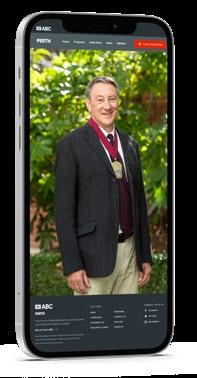
6 ANZCA Bulletin | Autumn 2023
“ANZCA President
Chris Cokis discusses anaesthesia and hip and joint surgery”
“Should Australia legalise marijuana?”
“What happens when life-saving healthcare isn’t available?”
“Surfer carries a shark back out to sea at a beach on Victoria’s Great Ocean Road”
Of all the life insurance providers we looked at, only 4
made our LIST.
Finding the right life insurance can be time consuming, full of fine print, confusion and uncertainty. So, to make life easier, Avant looked at leading life insurance providers and came up with a list of 4 whose life policies, features and benefits we think doctors will value.
The LIST makes Life easy for doctors.
Dr Sofia Ambreen General practitioner, NSW


The LIST, designed for doctors, is an Avant comparison tool that puts a curated list of life insurance providers at your fingertips. Simply compare policies and consider whether one is right for you.
It’s fast, easy and you can apply by phone – we take care of the rest.
IMPORTANT: The information provided in this material is general advice only and has been prepared without taking into account your objectives, financial situation and needs. You should consider these, having regard to the appropriateness of this advice as well as the Product Disclosure Statement and Target Market Determination before making a decision to acquire a financial product. You should also read our Financial Services Guide for detail about who we are, how we are remunerated and how our Avant Life Insurance Selection Tool (LIST) works. For further important information please visit avant.org.au/life. The LIST is provided by Avant
SECTION GOES HERE 7
Life Insurance.
Life Insurance”
of Doctors Financial Services Pty Ltd ABN 56 610 510 328 AFS Licence Number 487758
MJN966 10/22
“Avant
is a registered business name
(DFS).
(DT-2786)
Call for the LIST on 1800 128 268 or visit avant.org.au/life Compare, select, apply. Avant Life Insurance ADVERTISEMENT
ANZCA & Government
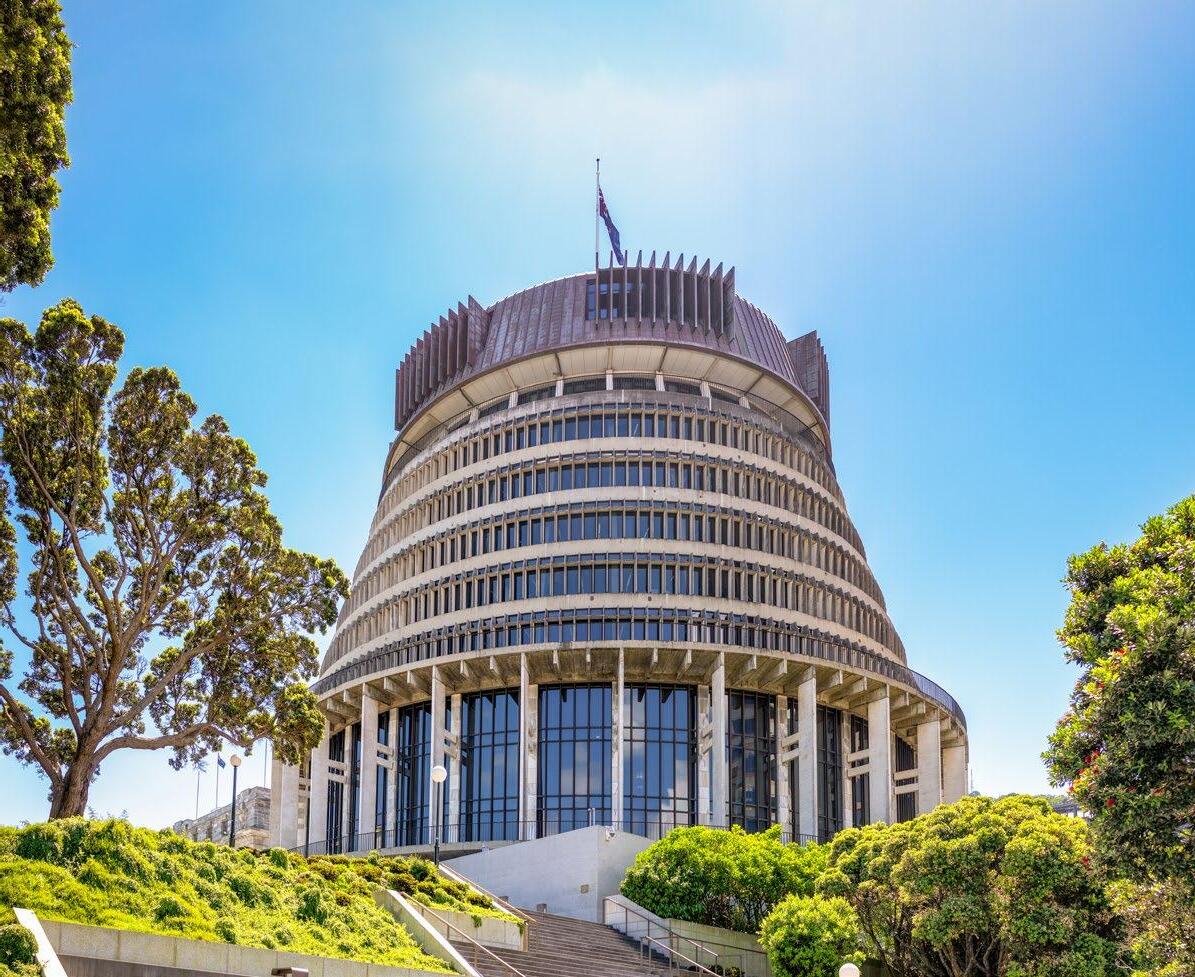

ANZCA and FPM continue to build strong relationships
AUSTRALIA Continuing work with the Medical Benefits Schedule (MBS) Taskforce
In line with our focus on increasing engagement with government, the college has been working with key federal and state departments and ministerial offices to advance the importance of anaesthesia, perioperative and pain medicine in Australia and New Zealand.
To that end, the college has been in regular discussions with Health Minister Mark Butler’s office, as well as the federal Department of Health and Aged Care. The Faculty of Pain Medicine and ANZCA has established a close working relationship with the Medical Benefits Schedule Taskforce within the department and received a positive response from the federal minister, in which he committed to working closely with the FPM and ANZCA on specific recommendations towards restoring funding for some chronic pain services in Australia.
ANZCA and FPM have been working to build stronger relationships with key stakeholders, such as in allied health and rural and remote health, so that further representations to government are presented in the best possible terms. This follows meetings with the ministers for health and rural and regional health in the previous quarter.
Ahead of the federal budget, ANZCA’s representatives are meeting with key ministerial and departmental representatives at the federal level, with particular focus on maintaining best practices in safety and quality, the role of specialist international medical graduates, and the emphasis that ANZCA places on multi-disciplinary approaches to medicine, including in pain and perioperative medicine.
Such representations have been made at state and territorial levels as well. The importance of pain and perioperative medicine to long-term best practice is increasingly well received in departmental and political offices. In addition to meeting with the federal minister’s office, ANZCA had regular discussions with the state offices, and wrote to – and had been in regular contact with – the NSW health minister ahead of the March 2023 election.
Key issues raised to government at state, territorial and federal levels have included the funding of key positions for anaesthetists (particularly in rural and remote settings), the importance of multi-disciplinary and perioperative approaches to medicine, and the importance of maintaining a strong healthcare system, which ultimately benefits the economy, and well-being of all. The college is increasingly being recognised in state and federal governments as being dedicated to those goals.
NEW ZEALAND
A new prime minister and health minister
The upcoming election in New Zealand has been turned on its head by the resignation of now-former prime minister Jacinda Ardern, and her replacement by Chris Hipkins. Until his elevation to the prime ministership, Mr Hipkins had undertaken a variety of roles including COVID-19 Response Minister, and a short period as Minister of Health.
On assuming the leadership, Mr Hipkins unveiled a newlook cabinet, including a new health minister, ahead of the election set down for October 14. Former Health Minister Andrew Little was replaced by Dr Ayesha Verrall, an infectious diseases expert who rose quickly through the ranks in her first term in parliament, including serving as Associate Health Minister and COVID-19 Response Minister. While the impact of storms in Auckland at the end of January and Cyclone Gabrielle across the North Island at the start of February largely delayed the start of the political year, the college office met with the new Health Minister in April, with issues raised including training and workforce retention.
The college has also been engaged in discussions with the Royal Australasian College of Surgeons (RACS) over the ongoing issue of growing waiting lists for elective surgery. RACS has highlighted a lack of anaesthetic technicians as a contributing factor to the delay, noting that the issue is long-standing and expected to continue for some years. Specifically, one of the contributing factors is a change in training away from an on-site apprentice-style system to the requirement for a three-year degree. Many anaesthetic technicians are also being attracted to the private sector and to smaller regional centres which offer a cheaper, more relaxed lifestyle. Wages are also another factor that are likely impacting.
After meeting to discuss the issue, the two medical colleges consulted with Dr Andrew Connolly, Te Whatu Ora Counties Manukau Chief Medical Officer and Chair of the New Zealand government’s Planned Care Taskforce. The Planned Care Taskforce was established in May to cut national surgical waiting lists. At that time there were reportedly about 27,500 people waiting longer than the four-month target for their planned surgery. Updated figures released by Te Whatu Ora/ Health NZ showed that figure had grown to 30,000 by the end of October.
ANZCA & GOVERNMENT 9
SUBMISSIONS
The college prepares submissions and makes representations to government and other stakeholders on a range of policy initiatives and inquiries, many of these in response to requests for college feedback and input. Our submissions to public inquiries are available on the college website following the inquiry closing date. Note that some inquiries and requests for college input are confidential. For a listing of recent submissions visit www.anzca.edu.au/safety-advocacy/advocacy.
AUSTRALIA
• Ahpra: Draft data strategy.
• Ahpra: Review of accreditation arrangements to prepare for 2024-2029 cycle.
• Australian Commission on Safety and Quality in Health Care: Sustainable healthcare module.
• Medical Board of Australia: Draft revised guidelines for telehealth consultation with patients.
• Queensland Health: Mandatory checking of Q script and monitored medicines standard compliance requirements.
• Royal Australasian College of Physicians: Rehabilitation medicine advanced training curriculum.
Auckland fellow named as 2022 Ray Hader Award for Pastoral Care recipient
New Zealand specialist anaesthetist Dr Janet Liang is the recipient of the 2022 Dr Ray Hader Award for Pastoral Care.

Dr Liang, who works at North Shore Hospital in Auckland, has been recognised for her tireless commitment to coaching and mentoring anaesthesia trainees over the past 25 years, mostly in her own time.
Many of the trainees she has mentored and supported through exam failures are now ANZCA fellows and respected colleagues who in turn are mentoring a younger generation of trainees. She continues to guide and support them as their careers have advanced and many say the impact she has had on their lives is profound.
Dr Liang is referred trainees by their supervisors of training, or approached by trainees directly, who know of her by reputation. She takes them under her wing and works with them to achieve success and colleagues say she is incredibly generous with her time.
When mentoring a trainee in preparation for an exam, she devotes four to five hours a week to each trainee, for about 12 months. Closer to the exam, the hours will increase to more than 10 hours a week – about 300 hours a year for each trainee. She sometimes coaches up to four trainees at a time and coaching is often conducted in her own home.
Welcoming trainees, getting to know them, providing meals and caring for the whole person is second nature to her. Her sessions are interactive and engaging and one trainee even noted that she “took me to a boxing session with her personal trainer to do viva practise!”
When she is on holiday or at a conference, she will even assign “homework” to trainees to email back to her and she continues face-to-face mentoring with Skype and Zoom.
Dr Liang is kind, honest and constructive with her feedback. She shows great determination never to give up on a trainee and tailors her support to the individual’s needs and strengths. Even when trainees have attained their FANZCA she will continue to mentor them, giving advice and guidance on obtaining positions, and ongoing career advice.
Dr Liang’s mentoring is not limited to ANZCA trainees and she has also mentored trainees in other specialties. She provides guidance and support to experienced colleagues in various stages of their career.
According to colleagues, Dr Liang pays close attention to the holistic needs of the people she mentors. She encourages resilience by considering each trainee’s social, emotional, psychological and physical health and prioritises people and relationships. She leads by example, maintaining her professional roles while supporting trainees.
*This article is based on information provided by Dr Liang’s award nominators.
10 ANZCA Bulletin | Autumn 2023
Applications for the 2023 Ray Hader Award will open in July with applications due in September. For more information visit the college website.
A sensor designed with your most precious patients in mind.
Introducing the Nellcor™ OxySoft™ neonatal-adult SpO2 sensor
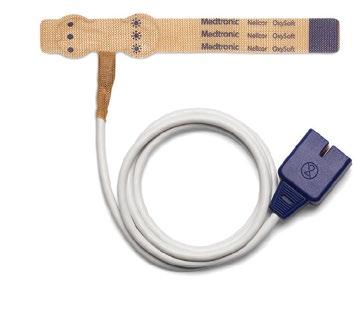
Discover the first available pulse oximetry sensor to use a silicone adhesive. Built to perform with your everyday realities in mind, the Nellcor™ OxySoft™ SpO2 sensor repositions with ease while helping to protect fragile skin.1
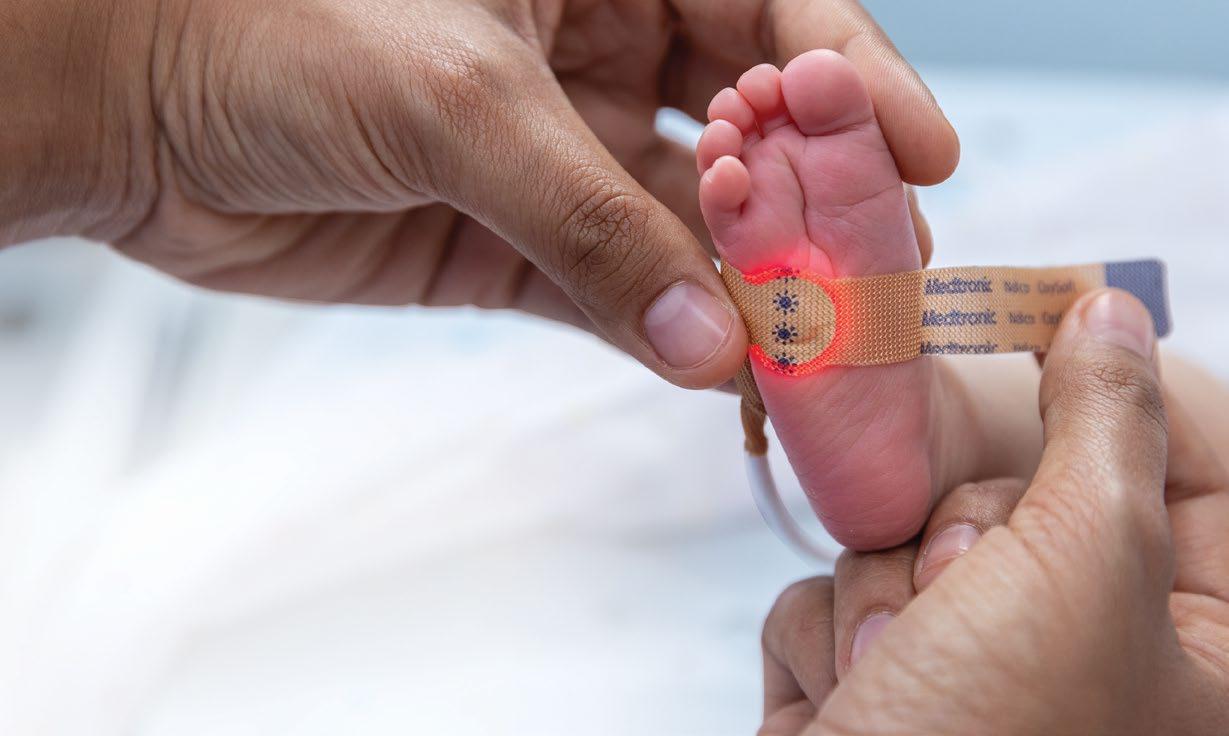
Its innovative silicone adhesive combines with brighter LEDs and a lower profile on a flexible circuit† — allowing you to remain connected to patient readings,2,3 and more time to connect with each patient.
1. Internal test report CSR 2021 03 12 v.1.0 - CyberDERM S20-12.
2. MDT20028OXYLOV, Rev 2 - SpO2 Accuracy Validation of OxySoft.
3. RE00301248, RevA - System compatibility verification report. † Compared to Max-N-I during internal head-to-head bench testing.
Medtronic Australasia Pty Ltd
2 Alma Road, Macquarie Park, NSW 2113 Australia.
Toll Free: 1800 668 670 | Fax: +61 2 9889 5167
Medtronic New Zealand Ltd
Level 3 - Building 5, Central Park Corporate Centre, 666 Great South Road, Penrose, Auckland 1051 New Zealand.
Toll Free: 0800 377 807 | Fax: +64 9 918 3742
© Medtronic 2023 All Rights Reserved. PM 663-02-23 ANZ. #12222-022023
medtronic.com.au medtronic.co.nz
SECTION GOES HERE 11
with Nellcor Digital™ pulse oximetry never miss a beat.
ADVERTISEMENT
What would you do?
Dr Peter Roessler explains professional documents using practical examples. In this edition he examines the issue of respecting and acceding to patient’s wishes even though they may not align with our own beliefs and core values.
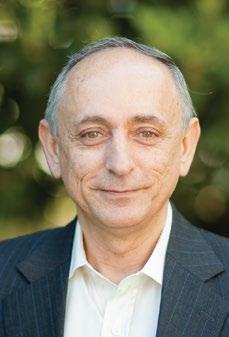
“By the way doc, if anything goes wrong, I don’t want to be resuscitated. I don’t want to end up a vegetable or suffer like my wife did when she was resuscitated during her operation and then died two weeks later.”
I was met with this “by-theway” comment at the end of a recent pre-anaesthesia assessment and consultation with an 84-year-old man of ASA 2 status scheduled for a non-major urological procedure.
Having thanked him for letting me know, I enquired whether he had an advanced care directive (ACD) or power of attorney documenting his not for resuscitation (NFR) instruction. He wasn’t even aware of any such needs but insisted on maintaining his NFR position.
On pursuing this further to seek clarification of his understanding in the context of his instruction it became evident that he had no clear idea of what circumstances should or should not be included and no informed insight into limitations of treatment. Further discussion ensued after which the ward staff as well as theatre team were made aware of the patient’s wishes.
WHAT WOULD YOU HAVE DONE IN THIS SITUATION?
This segues into the next dilemma. What if it turns out that he did have an ACD with strict NFR and he arrested under anaesthesia? Would you resuscitate?
Our individual views and beliefs can deter us from refusing to implement resuscitative measures and comply with patient wishes. A set of competing issues surface – that of respecting and acceding to patient’s wishes versus acting according to our own beliefs and core values. Which takes precedence –patient wellbeing or our own wellbeing?
Adding to the stress of this potential conflict are considerations of the potential medicolegal ramifications for whichever actions we take − whether they be resuscitation contrary to strict instructions, or failure to initiate resuscitation for an event deemed to be the result of management.
Informed consent entails shared decision-making, which is the process whereby information is provided bi-directionally between physician and patient. Advice based on best available evidence is then issued with consideration of the individual patient’s circumstances.
However, in providing advice, how much influence do individual values based on religious, spiritual, cultural, ethical, and moral perspectives have in deciding on the advice? The embodiment of these was witnessed in the debates in Australia on voluntary assisted dying. Voluntary assisted dying legislation provides a safe legal framework for people who are suffering and dying to choose the manner and timing of their death.
The college’s library of professional documents include guidelines and statements that may be of assistance in the context of the NFR scenario.
Given that this matter arose during the pre-anaesthesia consultation, a good place to start would be PG07(A) Guideline on pre-anaesthesia consultation and patient preparation (2017). Indeed, the scenario referred to demonstrates the importance of the pre-anaesthesia consultation, the elements of which are contained in the
12
Bulletin | Autumn
ANZCA
2023
“Let me go” − acting on a patient’s wishes
guideline. Special mention is made of informed consent and preparing a plan of management, which in this case might include a plan to implement should cardiac arrest occur.
Clearly, informed consent is a key issue here and this is addressed in PG26(A) Position statement on informed consent for anaesthesia or sedation (2021). It includes drawing attention to regulatory and jurisdictional requirements with particular reference to the laws in both New Zealand and Australia. Item 5.4 in the document serves to provide awareness of, and implications of advanced care directives and end-of-life directives, which are the subject of PG67(G) Guideline for the care of patients at the end-of-life who are considered for surgery or interventional procedures (2022).
Ethical and legal considerations are presented including implementation of limitations on medical treatment aimed at averting escalation of any treatment trajectory, as may be relevant in this scenario. It should be noted that medicolegal obligations vary by country, state or territory thereby placing the responsibility on doctors to be aware of their local obligations.
Although these are critical considerations and discussions they cannot be adequately addressed in the setting of the day of admission pre-anaesthesia consultation. It raises the question in the context of an elective procedure whether to proceed or to defer until the matter is properly considered.
Another key point is to act in a culturally safe manner, which not only respects the rights of the individual in the context of their background and culture, but also to be aware of
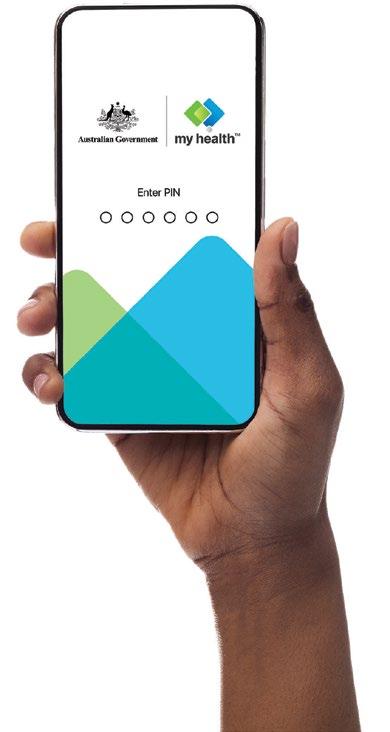
one’s own cultural influence and possible bias in drawing conclusions. Voicing an opinion does not necessarily infringe on people’s rights, however, attempting to impose personal views demonstrates a failure to respect people and cultures. PS62(G) Position statement on cultural competence (2017) articulates the college’s expectations with regard to cultural competence and cultural safety. Item 5.1.2 highlights the need to acknowledge patient beliefs and values that at times may not align with the medical model. This is further amplified on page 18 of the Supporting Anaesthetists’ Professionalism and Performance – A guide for clinicians (2017).
A final component of the jigsaw and possibly the ultimate one that governs one’s final decision is the regard with respect to their wellbeing. Questions such as “Am I capable of allowing this patient to die without any attempt at rescue?” or “How will it affect me …?” are reflections of the importance individuals place on mental wellbeing. What are the ethics regarding priorities – patient care or doctor wellbeing? Having a pre-determined position on this subject and formulating a plan may circumvent any potential wellbeing sequelae. Nonetheless, PG49(G) Guideline on the health of specialists, specialist international medical graduates and trainees (2022) is a good resource reference as a guide to wellbeing.
NFR! Everyone has a right to make a choice for themselves. But in doing so, if it competes with your choice, what would you do?
Dr Peter Roessler FANZCA Director of Professional Affairs, Professional Documents
PROFESSIONAL DOCUMENTS 13
SCAN TO DOWNLOAD ADVERTISEMENT
Following a successful six-month pilot, we’ve approved PG18(A) Appendix 1 in our professional document on anaesthesia monitoring.
To ensure these revised guidelines are effectively communicated to both practitioners and patients, we’ve produced a new patient information fact sheet that we are sharing with relevant colleges and allied healthcare agencies.
The fact sheet explains that patients who have undergone axillary clearance, usually after breast surgery, have traditionally been advised to avoid having the arm on the affected side used for medical procedures. It had been thought that this might contribute to the occurrence of lymphoedema.
However, clinical evidence shows that the arm on the affected side can usually be safely used for medical procedures and, in many circumstances, can be better for patient comfort and safety.
We would like to acknowledge the contributions of the following clinicians in developing this appendix and patient information:
Associate Professor Victoria Eley, PhD, FANZCA (expert group lead); Professor Christobel Saunders, AO, FRCS, FRACS; Associate Professor Pierre Bradley, FANZCA; Ms Joanne Lovelock, Breast Care Nurse Clinical Lead TAS VIC; Ms Rebecca James, Consumer representative; and Dr Peter Roessler, FANZCA, Director of Professional Affairs (Professional Documents).
The final version of the newly developed PG18(A) Appendix 1: Intravenous access and blood pressure monitoring in patients with a prior history of axillary nodal dissection is now available to download as a standalone document and as part of the full PG18(A).
The fact sheet can be found at www.anzca.edu.au/resources/ patient-information-fact-sheets/anaesthesia-factsheets/ breast-surgery-factsheet_v2.pdf

14 ANZCA Bulletin | Autumn 2023 Information
clearance FACT SHEET Have you had axillary lymph nodes removed during breast surgery? Background Patients who have undergone this surgery have traditionally been advised to avoid having the arm on the affected side used for medical procedures because it was thought this might contribute to the occurrence of swelling known as lymphoedema. This is a complication that may arise following axillary surgery, including sentinel lymph node biopsy, targeted axillary dissection, and axillary clearance. However, clinical evidence shows this is not the case and that the arm on the affected side can usually be safely used for medical procedures. In fact, in many circumstances, using the arm on the affected side can be better for patient comfort and safety, because: Relying solely on the blood vessels in unaffected arms can result in damage through overuse, and cause discomfort. While using lower limbs for the procedures listed below may be an option, this can result in a less accurate measurement of blood pressure. As the leading authority on anaesthesia in Australia and New Zealand, ANZCA provides accessible, evidence-based information designed to help you make informed decisions. Scan the QR code to visit our website anzca.edu.au This information is guide only and should not replace information supplied by your anaesthetist. ANZCA acknowledges the contribution of: Associate Professor Victoria Eley – PhD, FANZCA (Expert group lead); Professor Christobel Saunders, AO, FRCS, FRACS; Associate Professor Pierre Bradley, FANZCA; Ms Joanne Lovelock, Breast Care Nurse Clinical Lead TAS VIC; Ms Rebecca James, Consumer representative; and Dr Peter Roessler, FANZCA, Director of Professional Affairs (Professional Documents). What procedures does this advice cover? It applies to common medical procedures performed by anaesthetists and other health care professionals on patients’ arms, including: Taking blood. Administering and delivering medication via an intravenous (IV) drip. Performing anaesthesia monitoring such as invasive and non-invasive blood pressure monitoring. I don’t have lymphoedema (swelling) in my arm. Is it safe to use for medical procedures? If you have had your axillary lymph nodes removed and do not have lymphoedema, the arm(s) may be safely used for the medical procedures listed above. Your health care professional will discuss this with you. I have lymphoedema in my arm. Is it safe to use for medical procedures? If you have pre-existing swelling, your arm can still be used. Any decisions in this regard will be guided by your healthcare professional, who will discuss any other options and advise on the most suitable one for you. Where can I find more details? Appendix A in ANZCA’s professional document on anaesthesia monitoring, PG18 (A): Guideline on monitoring during anaesthesia, includes more detail about the safety and comfort of using arms affected by axillary surgery.
campaign on IV access and BP monitoring after axillary
“Clinical evidence shows that the arm on the affected side can usually be safely used for medical procedures.”
A New Era in Anaesthesia Workstation

New
innovative combination of traditional features and advanced technologies
your 2023 ANZCA ASM silver sponsor, Mindray at booth 37 on 5-8 May to see the A9 in action, including the launch of the TE Air Ultrasound. ADVERTISEMENT
An
Visit
Vulnerable and exposed: When the physician becomes the patient
NSW fellow, anaesthetist Dr Rajdeep Basu Roy, describes how her own cancer diagnosis prompted her to reconsider the patient medical journey.
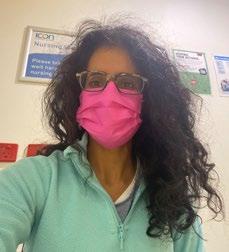
Dear Body thank you. I love you. Thank you for carrying me through this life.
Earlier this year I received an unexpected morning phone call from my GP outside working hours. A phone call that upended my world and sent my life into a spin. I was no longer in charge of my own life, let alone the lives of my patients
“The pathology doesn’t look good Raj, you better come and see me today…”
At the age of 46, I looked at a printout of my own pathology report to see the words “invasive cancer”. I read the report over and over, stunned and unable to comprehend the gravity of the situation.

“I’m going to die.”
“Who’s going to look after my baby girl?”
“I’m too young, this can’t be right.”
The modern take on the Hippocratic Oath states:
• I swear to fulfill, to the best of my ability and judgment, this covenant.
• I will prevent disease whenever I can, for prevention is preferable to cure.
• I will remember that I remain a member of society, with special obligations to all my fellow human beings, those sound of mind and body as well as the infirm.
How does this apply, though, when we the physician become the patient? What impact does becoming a patient ourselves have on our own ability to provide care?
In these times of increased understanding regarding wellbeing and mindfulness, how many of us actually provide beneficial care and treatment to our own bodies? These were considerations I faced when I unexpectedly became the patient.
Hospitals are a strange and abnormal environment to most. The aural background a cacophony of hums and beeps pierced by the occasional high-pitched squeal of an alarm. As I lay on a cold metal slab in the lymphoscintigraphy room, on my own, in a far corner of the hospital, I wondered if this was what the loneliness of a morgue trolley might feel like.
Next came the agonising wait for further results. Those two days were unbelievably long, worrying if the cancer had spread and what my prognosis and treatment options might be. Once the results came through, a decision was made for surgery.
16 ANZCA Bulletin | Autumn 2023
“Take a minute to chat, smile, introduce yourselves and ask permission. These are simple gestures that can completely change a person’s experience of their medical journey.”
Above: A screenshot of Dr Basu Roy's breast scan
The operating theatre, my home away from home, suddenly became foreign and alien, when I was the one in the bed staring at the stark paintwork. Strangers rushing in and out, hiding behind their personal protective equipment (PPE) and avoiding eye contact. Having no concept of how I was moved around and manhandled whilst under the anaesthetic is a surprisingly humbling experience.
Post-op I experienced postoperative nausea and vomiting (PONV) despite TIVA, and visual hallucinations from cyclizine, a drug we all prescribe almost daily to our patients. As a physician I understood why this was happening to me, yet the dismissive nature of the staff, although warranted (as frankly I was just afraid) filled me with a sense of vulnerability.
The general level of all types of cancers has also been proven time and again to be higher in healthcare workers. (The Night shift work and risk of breast cancer in women: The Generations Study cohort 2019 concluded that “it is plausible that night shift work could affect breast cancer risk, possibly by melatonin suppression or circadian clock disruption, but epidemiological evidence is inconclusive.”1)
Are there risk factors within our hospital environments making us prone to cancers or is it all related to stress?
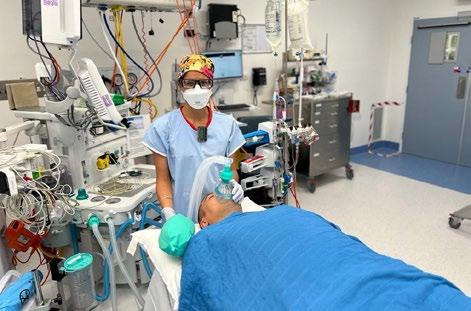
A few very important lessons have emerged for me from my recent experience:
Firstly, where did our Hippocratic Oath go? In delivering patient care, we are in an incredibly privileged position. This is easy to forget when we are tired or unwell ourselves.
How many other professions out there are granted access to someone’s life and livelihoods in the way that we are in medicine? It’s our duty to look after our patients without judgement and with empathy. Empathy comes across in both verbal and non-verbal communication.
This is important, particularly in days wearing full PPE where we all blur into one another. Take a minute to chat, smile, introduce yourselves and ask permission. These are simple gestures that can completely change a person’s experience of their medical journey.
Secondly, we spend so many years training to become doctors, striving to do the best for the health of others, yet perhaps many of us are guilty of sacrificing our own health in the process.
Mindfulness and well-being are constantly being touted in the broader healthcare system, yet the long working hours are almost a given, the lack of sleep and chronic levels of high stress both well-acknowledged and almost accepted facts. Reference
The recent pandemic has added to these woes in a system that’s under-resourced and under-staffed. Our profession is also known for having more mental health issues and higher suicide rates than others.
At some stage in our lives nearly all of us will become patients. I’m now a patient and patients feel vulnerable and exposed, apprehensive and confused.
Even as a healthcare professional treated with expediency, I struggled to negotiate a system that I’ve worked in for over 20 years. How must our patients feel when trying to understand this system and who do they turn to guide them?
Ultimately, my lesson is to be mindful. Mindful of my privilege, my patients, of my environment and my own body. After all we only have the one.
One in eight Australian women will be diagnosed with breast cancer. I was the one in eight this time, and I was lucky. The next patient in the operating theatre might very well be you on your own health journey.
Dear Body, thank you. You found my cancer early. I will treat you with respect. I will look after you because you looked after me. I love you.
Dr Rajdeep Basu Roy, FANZCA Westmead Hospital, NSW
FELLOW PROFILE 17
“Even as a healthcare professional treated with expediency, I struggled to negotiate a system that I’ve worked in for over 20 years.”
Dr Basu Roy with one of her patients in theatre
1. British Journal of Cancer 2019
https://anzca.on.worldcat.org/search/detail/8178759086?queryString=Risk%20of%20cancer%20in%20 doctors&clusterResults=false&groupVariantRecords=false&stickyFacetsChecked=false
College reaccredited for a further six years
This is a testament to the hard work of the many fellows, trainees, SIMGs, staff and others who were involved in the full reaccreditation process completed in 2022 –developing our written submission, responding to surveys, and participating in hospital visits and the college visit by the AMC/MCNZ reaccreditation assessment team chaired by Professor Tony Lawler, an emergency medicine Physician and the Chief Medical Officer with the Tasmanian Department of Health. Thank you all!

CONDITIONS TO BE MET FROM 2023 TO 2026
We received 31 reaccreditation conditions to be addressed over the next four years. These are important areas for our further evolution towards educational excellence. We’re excited to share some of the themes with you, as they point to some important (and significant) work ahead:
• Strengthen systemic relationships and partnerships with important stakeholders including Aboriginal, Torres Strait Islander and Māori organisations and communities. Ensure that our mission and educational purpose, as well as graduate outcomes, learning outcomes, resources and assessments address Aboriginal, Torres Strait Islander and Māori peoples and their health. Embed mandatory and regular cultural safety training across training, CPD, SIMG assessment, and college staff training. Increase the recruitment, selection and retention of Aboriginal, Torres Strait Islander and Māori trainees.
• Embed the need for rural, regional, and remote workforce within our key purpose.
The college is accredited by the Australian Medical Council (AMC) and Medical Council of New Zealand (MCNZ) to deliver anaesthesia and pain medicine training and assess Specialist International Medical Graduates (SIMGs).
In Australia we’re also accredited as a continuing professional development (CPD) home and in New Zealand as the recertification program for anaesthesia and pain medicine. We submit yearly reports on our work under all the accreditation standards and undergo a full reaccreditation every 10 years.
ACCREDITATION OUTCOME
Early this year, we received confirmation that the college is reaccredited for the maximum period of six years. The college “substantially met” all standards and received commendations, recommendations, and conditions against each standard. The final report was made public in March and can be found via our website.In 2029, we can request a four-year extension to take the reaccreditation period up to the full 10 years.
• Increase the involvement of FPM trainees in governance at all levels.
• Review our training program governance to ensure clear accountability for workplace-based assessments (WBAs) as part of our program of assessments.
• Develop systematic curriculum review mechanisms that allow the training programs to respond to evolving anaesthesia and pain medicine practice and community needs and review the role of subspecialty areas in the anaesthesia training program.
• Improve our assessments by increased focus on competency based medical education, enhanced blueprinting, publicly available standard setting procedures (for pass-fail decisions), improved feedback to all trainees on their examination performance, increased standardisation reaccredited of the IAAC, and evaluation of assessor training. We’re also required to address variation in WBA and progress decision-making and analyse differences in exam outcomes across trainee subgroups.
18 ANZCA Bulletin | Autumn 2023
• Introduce a monitoring and evaluation plan across college activities, so that we can close the loop and ensure continuous improvement shaped by quantitative and qualitative data. This includes reactivating the graduate outcome survey of those who have recently completed each training program. We are required to systematically consult with internal and external stakeholders on this plan and report evaluation outcomes to them.
• Address inequities for some trainees and SIMGs. The conditions ask us to resolve issues with independent trainees, and address variability in access to resources, teaching delivery, and selection across different training sites and units. This includes developing centralised teaching and examination preparation resources.
• Develop safe pathways for trainees to provide feedback on their individual supervisors and provide collated feedback to supervisors to inform their professional development. Allied to this are formal safe mechanisms for trainees to raise any concerns about their training, supervision, and assessment. This will include a college-wide special consideration in assessment policy.
• Strengthen processes for and monitoring of supervisor selection and introduce mandatory orientation and training for these important roles.
• Enhance accreditation of training sites and units through systematic monitoring between accreditation cycles, increased trainee input, explicit criteria for promoting trainee wellbeing, monitoring cultural safety training and ensuring consistent training experiences.
• Implement processes for FPM fellow return to practice (after prolonged absence) and performance remediation and introduce multisource feedback in the SIMG assessment process.
NEXT STEPS
Led by the college’s Learning and Innovation team, planning is under way to address the 31 conditions. Conditions are being considered in the context of wider college strategic drivers, including the ANZCA Strategic Plan 2023-2025 and our Innovate Reconciliation Action Plan 2023-2025. Fellows, trainees, SIMGs and others on committees and staff across the college will progress work on conditions within their remit. We’re also reviewing the resourcing and structures necessary to deliver on a roadmap of meeting conditions progressively across the years they are due. Initial focus is on the four conditions to be met in 2023. We’ll provide regular updates on this work, and we’ll need your input – watch this space!
Celebrate National Anaesthesia Day on 16 October
• Mark Monday 16 October in your diaries.
• Book your hospital foyer space.
National Anaesthesia Day is held each year to raise awareness of the crucial role anaesthetists play in healthcare. An ANZCA initiative, National Anaesthesia Day is usually held each year on 16 October to mark the anniversary of the day in 1846 that ether anaesthesia was first publicly demonstrated. This year our theme is perioperative medicine.
ANZCA will send posters and other material to hospitals in September. Please contact communications@anzca.edu.au for more information.
REACCREDITATION 19
Perioperative Medicine
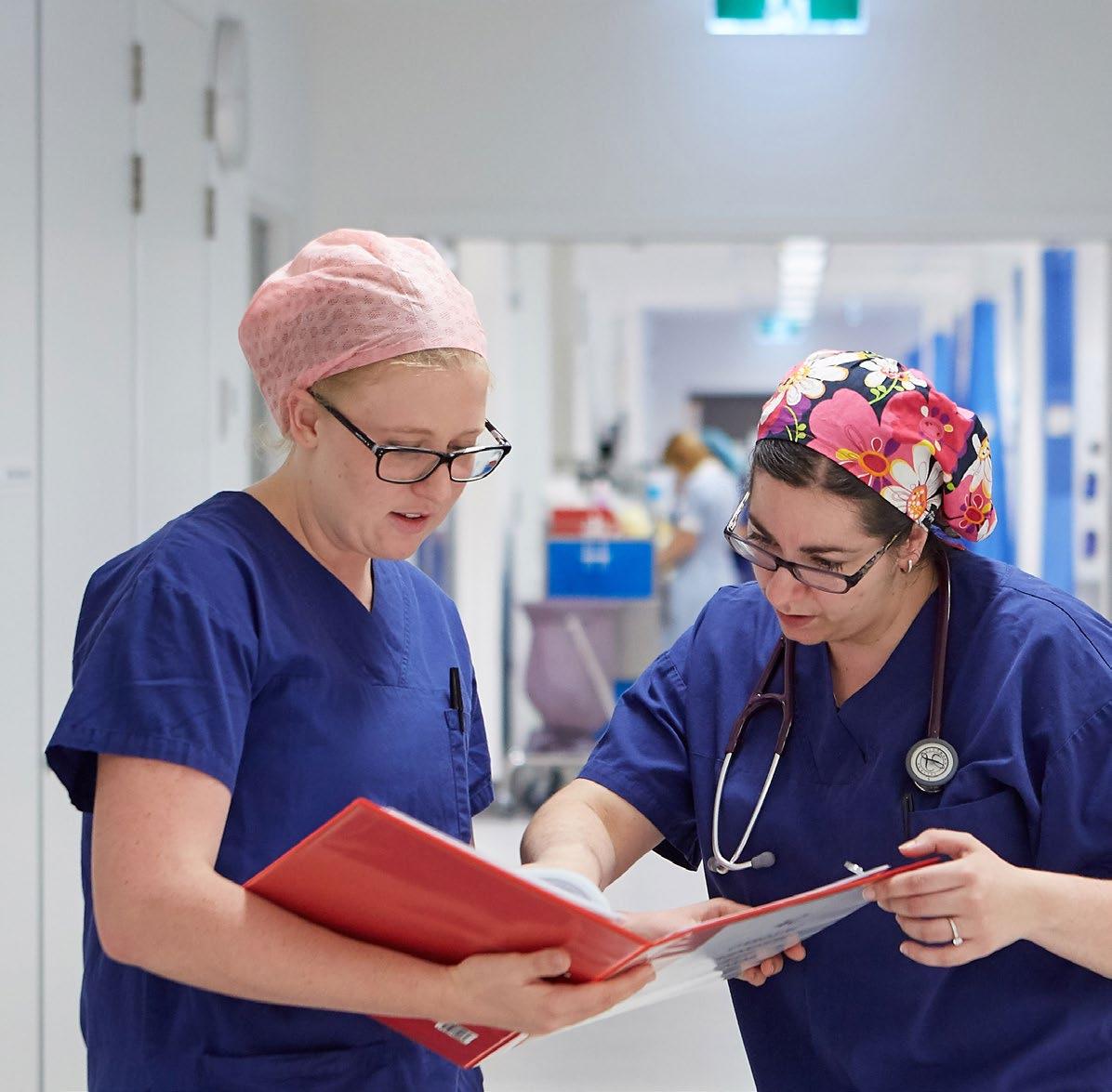
DipPOM pilot to commence later this year
As the year progresses, so too does the development of our Diploma of Perioperative Medicine (DipPOM) which we will launch at the ANZCA Annual Scientific Meeting in May and pilot at 10 hospitals in Australia and New Zealand later this year.
OUR FIRST DIPLOMA HOLDERS
We’ve had more than 170 fellows from our college and faculty as well as the colleges of physicians, intensive care medicine, surgeons and general practitioners apply for the DipPOM by the recognition pathways (or “grandparenting”) process.
From this group we have awarded the DipPOM to our first 66-plus leaders in perioperative medicine and are busily working on the remaining applicants.
These leaders in perioperative medicine will be essential in providing the teaching and supervision of DipPOM candidates as we take on our first full fee-paying candidates from 2024.
PILOTING THE DIPLOMA
We have nominated eight hospitals in Australia and two in New Zealand who will host participants when our pilot begins in the last quarter of 2023.
Initial meetings with these sites are under way so that sites can prepare to provide a clinical setting for the pilot delivery between September and November 2023, ahead of the full six-topic course commencing in January 2024.
FEES
We are now in the process of modelling our fees based on the significant resources required to support our candidates and educators.
Offering the DipPOM is certainly not a commercial exercise for the college which has invested an enormous amount already in developing the diploma in the interests of better outcomes for our patients and improving our healthcare systems.
ANZCA Council will consider the fee structure ahead of first enrolments being taken later this year.
COURSE CONTENT
Course content for the first two topics has been completed and e-learning content is now being written so it can be uploaded ANZCA learning management system.
The Content and Assessment Working Group, chaired by Dr Joel Symons, is holding a mid-April workshop to progress the development of content.
In order to keep content current and evidence-based, a Content and Resource Review Working Group is being established. It is being led by Perioperative Medicine Special Interest Group Chair, Dr Jill Van Acker, Perioperative Care Working Group Chair Dr Jeremy Fernando and Dr Joel Symons.
In 2023, this working group will review content relating to the first two topics: “Pre-operative assessment” and “Pre-operative planning”.
RECOGNITION OF PRIOR LEARNING
As we develop our course content, there have been recent discussions around recognition of prior learning (RPL).
Following lengthy discussion, the March Perioperative Medicine Steering Committee meeting unanimously agreed that there will be no RPL offered for the DipPOM during the pilot delivery and initial full rollout.
Being required to do all six topics provides candidates with the opportunity to view/participate in their standard activities through the lens of a perioperative medicine clinician. The importance of a “shared mental model”, as well as the wide variation of practice even within the same speciality were also key considerations.
An RPL process is both highly complex and difficult to administer, so the potential for inequality is significant.
PERIOPERATIVE MEDICINE INITIATIVE
Finally, we are eager to hear from clinicians about any successful perioperative initiatives they are involved with, especially where there is strong data that supports activities. Please contact us via periop@anzca.edu.au
Dr Vanessa Beavis and Dr Sean McManus Co-Chairs, Perioperative Medicine Steering Committee
PERIOPERATIVE MEDICINE 21
Anaesthetists lead project to cut “short surgery, long wait” delays

In August 2022, Gold Coast University Hospital introduced a novel theatre list called the rapid discharge list. This new emergency operating theatre protocol aims to improve both healthcare efficiency and the patient journey. It targets emergency surgical patients who experience long delays in theatre access but are then rapidly discharged post operatively. This novel system combats hospital bed pressures while increasing emergency surgery capacity.
Everyone who works in theatres in a large hospital will know the sinking feeling of looking at an overflowing emergency board at the start or end of a shift. As anaesthetists we are all too aware of the impact this has on individual patients and their families.
In this sea of emergency cases, particular patient journeys stand out for the impact of delayed theatre access. Cases such as: a young woman waiting for a dilation and curettage for a miscarriage who has been bumped from one day to the next after a flurry of emergency caesareans; a single parent who considered self-discharge after waiting days for the 30 minute wash-out of an infected cat scratch; and all the self-employed patients whose income disruption weighs on them every day they are delayed.
As anaesthetists we often don’t see these patients each time they are delayed, but their stories resonate. It is easy to imagine their personal hardships and the stress of ward teams caring for them as their justified frustrations increase day after day.
There are many challenging aspects to these cases, but the knowledge that these patients are consuming finite hospital resources when they would much rather be at home spurred us into action.
Gold Coast University Hospital is a 900-plus bed, 21 theatre tertiary referral centre based in Southport on the Gold Coast. With local population increases it has become a bustling place; it houses the busiest emergency department and the second highest birth rate in the state.
Like many tertiary hospitals, the hospital has an emergency surgical caseload that can rapidly expand to the point of
being overwhelming. Over the past five years our emergency surgery caseload has consistently increased year on year by seven per cent. To cope with this demand, emergency surgery capacity has expanded from two emergency theatres (obstetrics and ‘other’) to include various extra sessions such as acute surgical unit (ASU), orthopaedic trauma, complex trauma and acute gynaecology. As the caseload of emergency surgery has increased so has the number of lower acuity emergency procedures. Due to our current triage guidelines, we often find them at the bottom of a large list, endlessly ‘bumped’ by a raft of higher priority patients.
In 2017 I was discussing this “short surgery, long wait” problem with one of the juniors in our department (Dr Tom English - soon to be consultant), and we proceeded to audit how many hospital bed days were ‘“wasted’” with these quick cases occupying hospital resources in order to agitate for increased emergency capacity.
The results were clear. We demonstrated we could both save money and vastly improve the individual patient journey through faster access to surgery. The audit data showed that specific procedure types consistently experienced delays to theatre access but were reliably discharged shortly after surgery. The cost savings were essentially equal to the cost of running five theatre sessions each week.
The results of the audit were presented to our anaesthetic department, at surgical grand rounds and at executive meetings. Not wanting to reinvent the wheel, we looked elsewhere around Australia for how these lower acuity emergency cases were managed. Again and again, we found that most places worked in a similar fashion to our health service.
22 ANZCA Bulletin | Autumn 2023
“…..the knowledge that these patients are consuming finite hospital resources when they would much rather be at home spurred us into action.”
We later presented a bold business case to our executive; to fund an extra five sessions a week of theatre time devoted just to the groups of patients that our audit identified. The working protocol we devised was driven by nurses and anaesthetists at the centre of coordinating theatre flow to ensure the flexibility required for real world success. While it had widespread support from the anaesthetic and theatre nursing department, with the typical challenges of hospital finance and the uncertainty of the pandemic, it wasn’t until 2022 that the proposal gained traction.
We were asked to update the underlying audit data set (compared to 2018). This was completed (with a mammoth effort) in only three weeks, thanks to the help of our data analytics team. This helped not only give us the most robust data set to date, but also to position our proposal with upcoming funding decisions.
We were able to tweak our original proposal to be a criterialed case selection which prioritised cases into three levels based on a combination of procedures that were reliably quick, experienced the most delays and who were rapidly discharged postoperatively. (Table 1). Interestingly, the effects of age and ASA were only a minor determinant in the overall outcome so were removed from our final protocol.
FIRST LINE
All specialties - simple wound washout or debridement (anticipated same day dischargeno tendon/nerve involvement).
Orthopaedic - nail bed repair/excision, manipulation under anaesthesia of radius/ulna (low risk conversion to open procedure).
Gynaecology - incision and drainage vulva/ perineum, dilation and curettage, Bartholin’s cyst.
General - perianal incision and drainage, incision and drainage skin/subcut tissue.
Urology - ureteric stent, exploration/repair of scrotum.
Maxillofacial - incision and drainage of mouth, palate, uvula (including simple dental extractions).
SECOND LINE
General - laparoscopic appendectomy.
Orthopaedics - removal of foreign bodie
THIRD LINE
Orthopaedics - repair of tendon/ligament or nerve (single), Open reduction internal fixation (ORIF) finger/hand (uncomplicated fracture).
Maxillofacial - ORIF mandible
With the current and repeated audit data showing the same issues as previous years, we were given the green light to trial a pilot project. Unfortunately due to COVID, senior anaesthetic staff were in very short supply to run an ‘extra list’. The only way to staff it was to ask for anaesthetic consultant volunteers to come in on their day off. Luckily, we have a fantastic department at Gold Coast and (helped by our clinical director coming in on his day off to ask for volunteers) we were able to staff enough lists to show its merit.
Notwithstanding the extensive groundwork, it was quite a challenge to develop a simple concept into something that worked efficiently in the real world. From the nurse unit managers, theatre co-ordinators, anaesthetists, surgeons, assistants, data analysts and bed managers, the project would not have been possible without the continuous input and feedback from literally hundreds of people throughout our hospital. Not to mention the executive and finance staff who gave it a chance and made it happen.
We are pleased to report a successful pilot project demonstrated that our plan did exactly what our audit data suggested it could do; targeted earlier surgical access producing expedited discharge (publication pending). This process reaffirmed to us how anaesthetists can lead change. Health advocacy combined with a little ingenuity can make a real difference to the patient experience as they navigate our health system.
We have since secured permanent funding to run these lists and look forward to re-auditing the results to continuously improve our service for our patients.
Patrick Glover, FANZCA Specialist Anaesthetist, Gold Coast University Hospital
Dr Thomas English, FANZCA Specialist Anaesthetist, The Tweed Hospital
PERIOPERATIVE MEDICINE 23
TABLE 1: LIST OF PROCEDURES TO BE PERFORMED IN THE RAPID DISCHARGE LIST
Dr
Indigenous Health

ANZCA launches Innovate Reconciliation Action Plan
The college has launched its first Reconciliation Action Plan (RAP).
While this is the college’s first RAP, we began our progress towards reconciliation in 2010 with the establishment of an Indigenous Health Working Party which became the ANZCA Indigenous Health Committee the following year.
A five-year Indigenous Health Strategy was launched in 2018 following 12 months’ engagement and consultation with Aboriginal, Torres Strait Islander and Māori health stakeholders. The strategy is accompanied by a comprehensive background paper and an action plan linking all college resources, support and activities.
Some recent initiatives include:
• Scholarships for Aboriginal and Torres Strait Islander medical students and pre-vocational doctors to attend our annual scientific meeting to learn about anaesthesia, pain medicine and perioperative medicine as a potential career and foster networks. At least three previous award recipients have gone on to join the ANZCA or FPM training program.
• A prevocational advice service to provide Aboriginal and Torres Strait Islander prevocational doctors with advice and tips about a career in anaesthesia and pain medicine.
• Financial support to Aboriginal and Torres Strait Islander trainees to cover registration costs of ANZCA exam preparation courses.
• An acknowledgment guide to recognising Aboriginal and Torres Strait Islander Peoples as the Traditional Custodians of the land, waters and seas in Australia and ngā iwi Māori as the Tangata Whenua of Aotearoa. In 2021, it became mandatory to make an acknowledgment at official college meetings and events in both Australia and Aotearoa.
• A new immersive exhibition - Djeembana Whakaora: First Nations medicine, healing and health at our Geoffrey Kaye Museum of Anaesthetic History, which celebrates First Nations medicine and healing practices in both Australia and Aotearoa New Zealand.
The work we have undertaken over the past five years included scoping the college’s capacity for reconciliation and informed the development of our new Innovate RAP. A working group consisting of fellows, trainees, myself and other college staff drafted a plan with 19 actions and over 90 deliverables to progress over the next two years across all areas of our operations.
These RAP deliverables are framed around three core pillars of relationships, respect and opportunities, underpinned by governance and reporting practices. Aboriginal or Torres Strait Islander people make up five of the 11 members of the RAP working group.
The 2021 fellowship survey identified that over 70 per cent of college fellows rated Indigenous health as either important
or essential to informing the college’s strategic planning. By developing a RAP the college will be in a better position to not only progress reconciliation within our organisation and fellowship, but through our leadership in anaesthesia, pain medicine, and perioperative medicine, influence Aboriginal and Torres Strait Islander health workforce development, patient safety, and research.
Our vision for reconciliation is to lead safe and high-quality patient care in anaesthesia, perioperative medicine, and pain medicine that’s culturally safe and equitable, and to empower Aboriginal and Torres Strait Islander peoples to train and have flourishing professional careers in these fields.
Aboriginal and Torres Strait Islander people represent 3.3 per cent of the Australian population, yet represent only 0.2 per cent of fellows and trainees across anaesthesia and pain medicine, with eight ANZCA fellows (0.15%), no FPM fellows, five ANZCA trainees (0.34%) and one FPM trainee (1.15%).
We recognise that a workforce that is more representative of First Nations communities is best placed to understand and be responsive to the needs of these communities, and to deliver culturally appropriate care.
The college is committed to working with Aboriginal and Torres Strait Islander organisations to progress reconciliation across all pillars. We will continue to work with the Australian Indigenous Doctors’ Association on a number of initiatives including a project to establish a multi-college support network for Aboriginal and Torres Strait Islander trainees, as well as developing cultural safety resources and other supports.
We will also work with colleges to develop tailored strategies to support Aboriginal and Torres Strait Islander trainee selection as part of the project. A further focus area for the future is raising the cultural awareness and cultural competency of college staff, trainees, supervisors of training, fellows and specialist international medical graduates and working to ensure hospitals are culturally safe spaces for both patients and doctors.
Our Innovate RAP lays out an ambitious plan of actions to achieve over the next two years. At the completion of this RAP, the college will develop a new plan with different goals, a process that will continue until such time as we don’t need committees, plans and strategies to ensure Aboriginal and Torres Strait Islander peoples enjoy equitable career opportunities and responsive health services.
I invite you to read through our RAP and consider how you can contribute to this journey as we work with, celebrate and discover more about the Traditional Owners of the lands across Australia.
Nigel Fidgeon ANZCA CEO and RAP Champion
INDIGENOUS HEALTH 25
OUR RAP ARTWORK
Artist: Bitja (Dixon Patten)
Tribes: Gunnai, Yorta Yorta, Gunditjmara, Dhudhuroa, Yuin, Djab Wurrung, Wemba Wemba, Wadi Wadi, Yuin.
The art honours the importance of stillness and to deep listen to our breathing. Mother earth provides everything in perfect balance so that life is possible through our ability to breathe. Stillness gives us the opportunity to sit in reflection, to listen to our thoughts; allowing us to take in the good and release the bad.
It also honours anaesthetists and pain medicine specialists and their role in our healing journeys. Whenever society needs operations and surgical procedures, an anaesthetist’s duty is to keep us alive and to monitor our breathing.
The centre circle and "U" symbols represent ANZCA coming together to learn about First Nations cultures and our collective values and wisdoms influencing their journey in connecting to our communities on a deeper level.
The river (blue path) represents cleansing and one’s journey.
The earth (red ochre path) represents being grounded and still. Both elements work symbiotically together and are the reason we can live, survive and thrive.
The patterns in the river and earth pathways represent breathing in and out, our heart rate going up and down and the electrocardiogram patterns. The black and white footprints and handprints represents ANZCA’s reconciliation journey. The gum leaves represent being welcome and growth. The stones represent healing.
The outer “U” shape symbols represent the wisdom holders, our old people (Elders and ancestors).
ANZCA RAP
WORKING GROUP
RAP Champion
Nigel Fidgeon, Chief Executive Officer, Working Group Chair
Susie Lord, FANZCA, FFPMANZCA
Working Group Members
Dash Newington, FANZCA
Paul Mills, FANZCA
Sharon McGregor, FANZCA
Angus McNally, ANZCA trainee
Matt Bryant, FANZCA, FFPMANZCA
Kate Davis, Policy Officer, ANZCA
Laura Foley, Operations Manager, Knowledge Resources, ANZCA
Helen Radford, Operations Manager, People and Culture, ANZCA
Katy Elliott, Education Standards & Projects Officer, ANZCA
OUR RAP
You can find ANZCA’s Reconciliation Action Plan (RAP) at www.anzca.edu.au/safety-advocacy/indigenous-health/reconciliation-action-plan
26 ANZCA Bulletin | Autumn 2023
World-first cultural safety training plan launched
The launch of New Zealand’s cultural safety training plan for specialist medical training – a global firsthas been welcomed by ANZCA’s New Zealand National Committee Chair Dr Graham Roper.

Cultural Safety Training Plan for Vocational Medicine in Aotearoa, launched by New Zealand’s Council of Medical Colleges and Te Ohu Rata O Aotearoa (Te ORA), is a key step towards achieving equity and the aspiration of New Zealand’s indigenous Māori population to reach their full health potential.
ANZCA was represented at the launch symposium by staff from the college’s Wellington and Melbourne offices, joining colleagues from medical colleges across New Zealand.
For doctors, cultural safety means:
• Examining the impact of their own culture on their work with patients.
• Committing to addressing any of their own biases, attitudes, assumptions, stereotypes and prejudices which may affect the care they provide to patients.
• Engaging in ongoing self-reflection and self-awareness to hold themselves accountable for providing culturally safe care, as defined by the patient and their communities. While cultural safety is applicable to all cultural, ethnic, religious and other social groups, the training plan has a deliberate focus on Māori health outcomes.
The cultural safety training plan was created in response to a 2019 statement from the Medical Council of New Zealand, that medical education in New Zealand should include a focus on cultural safety.
Dr Roper said the plan would lead to better health outcomes for patients.
“To deliver high-quality care we need to communicate with our community appropriately, understand specific requirements, recognise our personal biases and critically look for inequities. This will create an environment of trust, engagement and empathy, and will ultimately improve the health journey and outcomes of our patients.”
ANZCA Councillor and former New Zealand National Committee Chair Dr Sally Ure said the plan would provide a pathway for colleges to move from a cultural competence framework, to implementing cultural safety in training - including recruitment, growth and support of trainees in culturally safe working environments - and having practitioners undertake culturally safe practice.
“It will teach practitioners to think critically about their own culture, biases and assumptions, and reflect on how these impact on the care we provide to our patients. Phrased more provocatively - we need to get over the idea of being ‘competent’ in another culture and take a look at our own conduct, which is clearly linked to achieving health equity.”
Reon Suddaby Senior Communications Advisor New Zealand, ANZCA
CULTURAL SAFETY 27
“Cultural safety and cultural competence are so important in the delivery of healthcare to our community of Aotearoa New Zealand. Providing our medical workforce with the incentives and opportunities to become culturally safe practitioners has become an integral component of the ANZCA CPD program.”
Anaesthetists on the frontline in Turkey and New Zealand
Fellow Dr Rob Scott and specialist international medical graduate (SIMG) Dr Sujai Mohanadasan recount their first-hand experience of the recent natural earthquake and cyclone disasters in Turkey and New Zealand.
Forty-eight hours after a magnitude 7.8 earthquake struck southern and central Turkey ANZCA fellow Dr Rob Scott was preparing for his first deployment to the region as part of Australia’s disaster search and rescue team.
An anaesthetist at St George hospital in Sydney and a retrieval medicine specialist with NSW Ambulance, Dr Scott was one of two doctors and another 70-strong group of engineers, paramedics and search and rescue experts who flew to the country in the aftermath of the 6 February quake for a 10-day mission. More than 140,000 people from 94 countries joined the rescue effort in the days after the disaster.
Dr Scott and emergency medicine physician Dr Jimmy Bliss were deployed as two aeromedical specialist doctors for Australia's Disaster Assistance Response Team (DART).

“The reports started coming through on the Monday (6 February) and by the Wednesday we were being notified to prepare to leave Sydney. We left on the Thursday on a Royal Australian Air Force Flight on a C-17 plane with 22 tonnes of equipment on board.”
The long journey involved flying from Sydney to Perth followed by a stop in the United Arab Emirates and then onto the Incirlik Air Base near Adana in Turkey. From there, the team mobilised for a three-hour drive in buses and trucks to the Turkish province of Hatay and the devastated city of Antakya.
28 ANZCA Bulletin | Autumn 2023
The team was confronted by a city in ruins with multi-storey buildings turned into rubble within minutes of the quake and grieving locals desperately trying to search for their loved ones. As it was the middle of winter, daytime temperatures struggled to reach double figures and at night the mercury dropped to minus 10 degrees celsius.
Within hours of arriving the team had set up its own tent village. This base of operations − “the boo” − comes complete with tents, sleeping bags, ration packs, drinking water and generators. The team then got to work on “the pile” − the copious mounds of rubble left by the earthquake − to search for signs of life.
“We have to be self-reliant in these conditions and that means bringing everything over with us so we can get to work pretty much straight away once we arrive in country.”
The Australian base was located on the outskirts of Antakya alongside other international search and rescue teams from Indonesia, the Netherlands, Switzerland and Austria. Working in shifts the Australian team would work together in zones, combing the ruins and liaising regularly with the United Nations and international rescue and recovery teams.

“We were all very mindful of the gravity of what we were doing and respectful of the culture of the local Turkish community,” he told the ANZCA Bulletin as he prepared to return for his first day back at work at St George hospital.
“We knew that it would be difficult finding survivors given the time that had already passed. Family members would wait outside the ruins of their homes and tell us their loved ones were trapped under the rubble.
“We didn’t have our own search and rescue dogs due to the distance we had to travel, but we were able to use other

NATURAL DISASTERS 29
Images clockwise from left: The Disaster Assistance Response Team en-route to Turkey on board the RAAF C-17; The team outside the Base of Operations (BoO) on the outskirts of the city of Antakya; Dr Scott and team preparing to head out on to “the pile” for a day’s work in Antakya. Images supplied.
team’s dogs, combined with our skills and equipment as needed. Each day there were lots of reports of dogs who had a 'hit'. We then had to see if we could verify if there were any signs of life.
“While we could not find any survivors we were able to retrieve 34 deceased and return them to their families so they could give them a formal burial. (The formal death toll at publication is more than 50,000 and the UN estimates that about 1.5 million have been left homeless.) Most importantly, we were able to assist the local emergency services with a range of tasks that just needed to be done, when they were otherwise overwhelmed,” Dr Scott explains.
“My role as one of the two doctors in the team was twofold: to help treat survivors found under the rubble but also to look after the team itself. Many of the men and women in the team can find themselves faced with confronting, challenging and traumatic situations so emotional support and psychological safety are so important.”
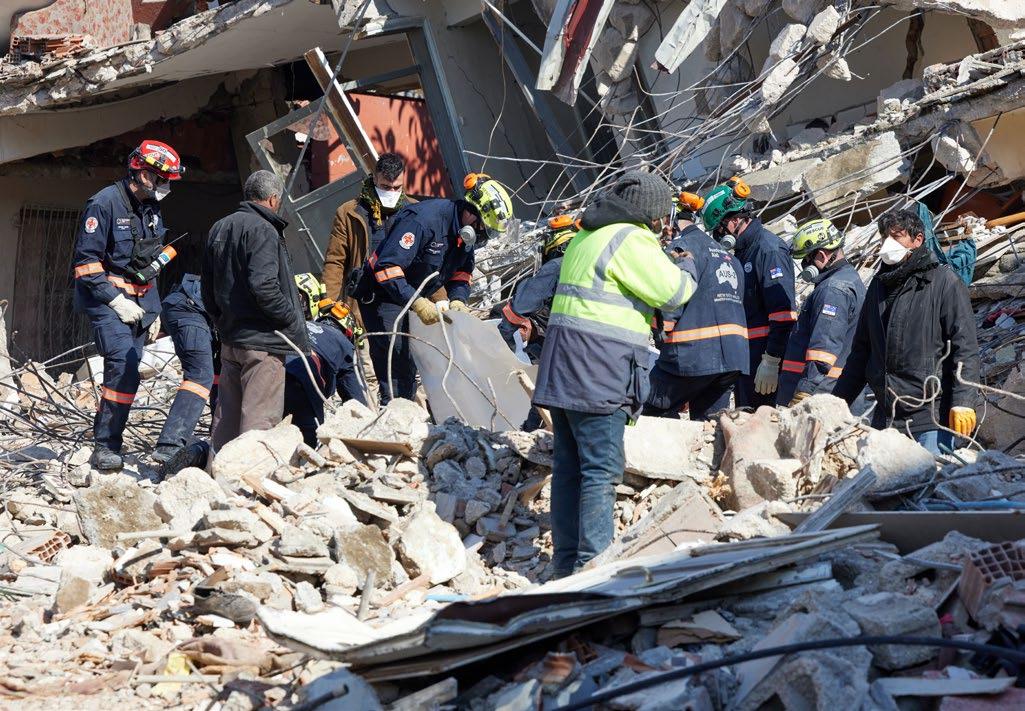
Dr Scott and Dr Bliss were also responsible for ensuring that health, hygiene and infection measures were followed through the mission. This included preparing and treating COVID-19 and gastro outbreaks.
“Thankfully we didn’t have to deal with anything serious but we have to be prepared just in case. ”
Dr Scott says the team worked in groups on search and rescue during daylight hours and always had one team on call at night ready to swing into action if needed.
30 ANZCA Bulletin | Autumn 2023
“We knew that it would be difficult finding survivors given the time that had already passed. Family members would wait outside the ruins of their homes and tell us their loved ones were trapped under the rubble.”
“Aftershocks were common during the time we were there but another 6.4 magnitude quake a few days after we arrived brought home to us just how fragile the situation there was.”

Dr Scott stressed that while he was just a small part of a large team he believes his training as an anaesthetist and as a retrieval medicine specialist gives him crucial transferable skills so he can be ready at a moment’s notice for deployment to disaster zones.

“Anaesthetists not only have to manage patients with acute injuries but because we’re used to working as part of a multidisciplinary team we also know how to communicate and negotiate with other members of a broader team.
“It was a very humbling experience. I played just a small part in the recue and retrieval operations and I need to emphasise that it really is a team effort.”
Before they left to return to Australia the team donated medical supplies and equipment to the local health services.
Dr Scott says NSW Ambulance provided extensive debriefing and a standing offer of welfare support to all team members and their families, including his wife Nikki and their three young daughters.
“It is still an ongoing process but the team know the support is there if we need it.”
Carolyn Jones Media Manager, ANZCA
NATURAL DISASTERS 31
Images clockwise from left: Australia’s Disaster Assistance Response Team working alongside local Turkish authorities; Dr Scott helping dress the wound of a young boy who had lost his family in the earthquake; One of the thousands of buildings that has been destroyed in the city of Antakya. Images supplied.
NZ cyclone fury hits home for anaesthetist
As New Zealand’s worst storm this century raged around him, Dr Sujai Mohanadasan’s phone rang.
Trapped in the tiny rural town of Kaitaia, with roads swamped by floodwaters and cyclonic winds cutting off air access, the 33-year-old anaesthetist was called about a patient suffering from Ludwig’s angina.
The patient’s mouth opening was restricted, and if his condition deteriorated, intubation was a possibility.
The following day, as Cyclone Gabrielle began to loosen its grip, Dr Mohanadasan was called on again. A child had swallowed a coin, which had become wedged in their oesophagus.
With communications erratic and confusion over whether air transport was available to take the child to Whangārei, the nearest city, the decision was made to prepare the child for theatre. Just as the final steps were being taken, the rhythmic thud of helicopter blades split the air. After days of isolation medical support had finally arrived.
Both patients had positive outcomes. The man with Ludwig’s angina stabilised, responded well to antibiotics and steroids, and was discharged after a couple of days’ monitoring, while the last-minute intervention of the helicopter transport allowed the child to be flown to Whangārei for treatment.
For Dr Mohanadasan, a specialist international medical graduate, the incidents underlined the challenges of working in Kaitaia, a town of only 6000 people at the top of New Zealand’s North Island.
“The cases were frightening in that…your best back-up is Whangārei, and you want to have all your ducks in a row before you start. Especially as an anaesthetist, you always want to make sure you have a plan A, plan B, plan C. It was challenging because you don’t want to compromise patient safety, but you also have to intervene, because if you don’t, there could be negative consequences.”
Dr Mohanadasan moved to New Zealand from South Africa a year ago, seeking a change after almost three years working as a consultant in Johannesburg.
But it was a holiday trip back to South Africa which led to his first experience of his adopted country’s wild weather in late January, just weeks before Cyclone Gabrielle made landfall.
Returning to New Zealand and flying into Auckland international airport on 27 January, Dr Mohanadasan’s flight touched down in a city already being hammered by unprecedented storms.
“I was stuck at the airport for pretty much a whole day, the whole night, I slept at the airport after almost 32 hours of flying. It was devastating. My suitcases were underwater, everything was soaked, I was soaked, it was a disaster.”
Just two weeks later, Cyclone Gabrielle slammed into the North Island.
Dr Mohanadasan said at the height of Gabrielle’s fury, he was most concerned about trees falling on his house, and power and water outages.

32 ANZCA Bulletin | Autumn 2023
“To be honest, it felt like an apocalyptic movie.”
“At one point I was pretty anxious because you don’t know what’s going to happen and how long it’s going to last – how long will the power be out, are my supplies going to be enough, is my food going to be enough?”
When the worst of the weather moved on, it left a shattered communications network in its wake.
“I woke up in the morning and there was no network, absolutely nothing, no telephones, no mobile network, no internet, no eftpos, no ATMs, nothing working. It was the first time in my life I’d ever seen a satellite phone.
“To be honest, it felt like an apocalyptic movie.”
While Dr Mohanadasan is full of praise for the rural doctors who kept medical services functioning in Kaitaia throughout the cyclone, he said Gabrielle’s impact reinforced the need for

better infrastructure to prevent regional areas being cut off during future weather events.
Although Cyclone Gabrielle wreaked havoc on the region’s roads, bridges and hillsides, the one thing Dr Mohanadasan said it couldn’t destroy was the spirit of the people living there.
“The community spirit, which I love about Northland, is that everyone works together, helping out, and that’s lovely to see and one of the best things about living in a place like this.”
Reon Suddaby Senior Communications Advisor New Zealand, ANZCA
Images clockwise from left:
Heavy rainfall from Cyclone Gabrielle left roads flooded. Image courtesy of the Northern Advocate.
Doug Maunsel stands outside the remains of a property he was renting to his granddaughter before it was destroyed by Cyclone Gabrielle. Image supplied.
Locals on boogie boards – The flooding forced creative residents to find a new way to get out and about. Image courtesy of the Northern Advocate.

Headshot – Kaitaia-based anaesthetist Dr Sujai Mohanadasan. Image supplied.
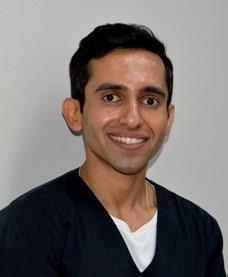
Picnic table – Popular outdoor areas were swamped by the unprecedented weather. Image courtesy of the Northern Advocate.

NATURAL DISASTERS 33
Safety & Quality

Anaphylaxis vigilance after sugammadex must be maintained
Perioperative anaphylaxis remains the most common cause of death directly attributable to anaesthesia and is classified under category 1 deaths by the ANZCA Safety of Anaesthesia report for the 2015-2017 triennium1
The recent New South Wales coroner’s findings2 of a death attributable to sugammadex highlights the need for anaesthetists to be aware of the risk of anaphylaxis to sugammadex. Sugammadex can produce profound anaphylaxis with both cardiovascular and respiratory signs. Orihara3 reported an incidence of anaphylaxis to sugammadex of 1:5000 in a Japanese population. In the UK, the 6th National Audit Project4 (NAP6) study found one confirmed case of sugammadex anaphylaxis in an estimated 64,121 administrations.
The incidence of anaphylaxis to sugammadex in the Australian and New Zealand populations is uncertain as not all episodes will be referred for testing, the number of procedures in which sugammadex is administered is unknown and there is no central database for positive results of allergy testing. Given these restrictions any estimate of the incidence is difficult, but it is likely that the rate of anaphylaxis to sugammadex in Australia and New Zealand is between 1:2500 and 1:10,000.
The difficulty in determining a precise figure for the rate of anaphylaxis to a particular agent is illustrated by the variable rates quoted for anaphylaxis to rocuronium in Australia and New Zealand ranging from 1: 25005 to 1:12,0006. NAP 64 found the rate in the UK to be 1:20,000.
The timing of delivery of sugammadex is particularly problematic. Sugammadex is typically delivered at the end of the anaesthetic when the patient may be being transferred from the operating table, monitoring may be in the process of being removed and airway devices may be being modified. These issues make the early identification and treatment of anaphylaxis more difficult, both major factors in the successful treatment of an episode of anaphylaxis.
Anaphylaxis may develop in transit to the post anaesthesia care unit (PACU) or in PACU itself. Thus, it is appropriate to maintain cardiovascular and respiratory monitoring of the patient while they are in theatre and in transit to PACU.
PACU staff should be made aware of the risk of the development of anaphylaxis and the need for prompt calls for assistance.
If anaphylaxis develops a cognitive aid such as the ANZCA/ Australian and New Zealand Anaesthetic Allergy Group Perioperative Anaphylaxis Management Guidelines7 should be used to aid treatment.
Dr Richard Scolaro FANZCA Chair, Perioperative Allergy Sub-Committee
References
1. Australian and New Zealand College of Anaesthetists (ANZCA), Mortality Sub-Committee. Safety of anaesthesia: A review of anaesthesia-related mortality reporting in Australia and New Zealand 2015-2017. Jenkins S, editor. Available from: https://www.anzca.edu.au/resources/incident-reportingdocs/safety-of-anaesthesia-(mortality)-reports/safety-ofanaesthesia-report-2015-2017.pdf Accessed 19 February 2023
2. Coroner’s Court of NSW Inquest into the death of Lucas Payret
3. Orihara M, Takazawa T, Horiuchi T, et al. Comparison of incidence of anaphylaxis between sugammadex and neostigmine: a retrospective multicentre observational study. Br J Anaesth 2020; 124: 154e63
4. Harper NJN, Cook TM, Garcez T, et al. Anaesthesia, surgery, and life-threatening allergic reactions: epidemiology and clinical features of perioperative anaphylaxis in the 6th National Audit Project (NAP6). Br J Anaesth 2018; 121:159e71
5. Reddy JI, Cooke PJ, van Schalkwyk JM: Anaphylaxis is more common with rocuronium and succinylcholine than with atracurium. Anaesthesiology 2014; 122: 39-45.
6. Sadlier PH, Clarke RC, Bunning DL, Platt PR: Anaphylaxis to neuromuscular blocking drugs: Incidence and cross reactivity in Western Australia from 2002 to 2011.Br J Anaesth 2013; 110: 981-7.
7. ANZCA/ANZAAG Perioperative Anaphylaxis Management Guidelines
SAFETY & QUALITY 35
Preventing and recognising oesophageal intubation
“Despite treatment for anaphylaxis and Mrs Logsdail’s failure to improve [the anaesthetist] persisted with this as the diagnosis …he was effectively blind to what needed to be done – to check the capnograph and to reintubate.”
(Inquest into the death of Glenda May Logsdail, Milton Keynes Coroner’s Court, UK)
Inadvertent intubation of the oesophagus happens infrequently. It is usually promptly identified, but if not identified and rectified, it inevitably leads to hypoxic cerebral injury or death in a paralysed patient.
Severe hypoxic brain injury or death from oesophageal intubation is estimated to occur in about one in 1,000,000 intubations for routine surgery and up to one in 10,000 in the emergency department.
Unrecognised oesophageal intubation can happen to both novice and experienced anaesthetists commonly due to stress or distraction from a complex clinical or emergency situation. In almost every coroners’ report into deaths due to a misplaced tube, a misdiagnosis and fixation on anaphylaxis was made and the position of the tube was left unchecked.
The question of how incorrectly placed tubes can be identified and rectified was recently addressed by an international, interprofessional panel of the Project for Universal Management of Airways (PUMA).
MONITORING
Capnography and pulse oximetry should be used for all episodes of airway management.
While this is perhaps self-evident to us as anaesthetists and clearly in keeping with our professional documents PG18(A) Guideline on monitoring during anaesthesia 2017 and PG09(G) Guideline on procedural sedation 2022 it must be remembered that these recommendations are intended for use by all clinicians managing airways including those in low- and middle-income countries.
Waveform capnography is the gold standard method to detect oesophageal intubation. The adage “if in doubt take it out”, or more recently “no trace, wrong place” is easy to remember, but real life is more complex. Correct positioning of the tube is likely if there is “sustained, exhaled carbon dioxide” with a steady or increasing amplitude for more than seven breaths.
EQUIPMENT
Perhaps the most controversial of the recommendations is that video laryngoscopy (VL) should be used for all intubations “whenever feasible”. In practice in Australia and New Zealand this means having the financial resources to provide equipment for every intubation.

However, this is not foolproof and even with a good view with VL, incorrect placement may still occur such as when
traction on the upper oesophagus resembles vocal cords –“glottic impersonation”.
While there is some emerging evidence for an improvement in first pass success rate of intubation with VL, perhaps the main benefit is in making airway management more of a "team sport". If the airway assistant can see the view they may be able to provide more effective help and speak up if there is concern about position of the tube. External laryngeal manipulation is also more effective if the airway assistant can visualise the effects of the pressure they are applying.
36 ANZCA Bulletin | Autumn 2023
“In almost every coroners’ report into deaths due to a misplaced tube, a misdiagnosis and fixation on anaphylaxis was made.”
“Glottic impersonation” during laryngoscopy is uncommon but if the upper part of this image was not visible it may potentially convince even experienced practitioners that the tube is correctly positioned. Image courtesy of Dr Laura Duggan
PROCESSES
The PUMA guidelines suggest two team processes to prevent unrecognised oesophageal intubation. First, that both the airway operator and airway assistant confirm passage of the tube between the vocal cords. Of course, as noted with the potential for “glottic impersonation” in the photo, this is not absolutely reliable.
The second suggestion in the guideline is for both the airway operator and assistant to independently confirm the presence of “sustained, exhaled carbon dioxide” on the capnograph.
If this cannot be confirmed, either because of low, or absent carbon dioxide levels, the default action must be to remove the tube and reattempt intubation. Removal might in some case seem like an extreme reaction to the lack of CO2 but is justified when balancing the risk against the almost certain hypoxaemia if the tube is malpositioned.
In some situations it may be dangerous to replace the tube, in which case one of the three methods listed in the article should be used in addition to repeat laryngoscopy.

If correctly positioned, fibreoptic inspection of tube position will show tracheal rings and a carina; ultrasound will show one, rather than two circular air spaces and; the bulb of the oesophageal detector device (rarely used outside of prehospital settings) will reinflate. If none of these devices is available, the tube must be changed.
EDUCATION
The final recommendation of the guidelines is to practice the management of oesophageal intubation with interprofessional training. An international, coordinated attempt to develop educational resources to support these guidelines is now under way and will be made freely available. Practicing the required communication and processes is key to the prevention of unrecognised oesophageal tubes. While this is not now an emergency response activity in the ANZCA continuing professional development program it may well be included in the future.

Associate Professor Stu Marshall FANZCA
Co-author, Preventing unrecognised oesophageal intubation: a consensus guideline from the Project for Universal Management of Airways and international airway societies
FURTHER READING
Inquest into the death of Glenda May Logsdail, Milton Keynes Coroner’s Court, UK https://www.judiciary.uk/ wp-content/uploads/2021/09/GlendaLogsdail-Prevention-of-future-deathsreport-2021-0295_Published.pdf
Preventing unrecognised oesophageal intubation: a consensus guideline from the Project for Universal Management of Airways and international airway societies https:// associationofanaesthetists-publications. onlinelibrary.wiley.com/doi/10.1111/anae.15817
SAFETY & QUALITY 37
Do your best work. Not paperwork. Join the largest group of independent anaesthetists. Get paid in industry-leading time Enjoy accurate and efficient practice management Simplify your life with our secure and compliant technology Have all aspects of your administration taken care of Gain the support of your own dedicated administration team Take advantage of our flexible, value-for-money pricing I Phone: 08 6333 2888 I Email: enquiries@zento.com.au More Benefits? Visit our website www.zento.com.au ADVERTISEMENT
Assessing perioperative allergy risk and the role of wristbands
Assessing perioperative allergy risk and the role of wristbands
Perioperative anaphylaxis remains the most common cause of death directly attributable to anaesthesia and is classified under category 1 deaths by the ANZCA Safety of Anaesthesia report for the 2015-2017 triennium1.
ANZCA and the Australian and New Zealand Anaesthetic Allergy Group (ANZAAG) have developed guidelines and emergency response modules to improve the treatment and investigation of perioperative anaphylaxis.
Prevention of perioperative anaphylaxis is an equally important aspect of patient care and is the responsibility of all those involved in the perioperative journey. The World Health Organization (WHO) Surgical Safety Checklist2 contains three elements, the “sign in”, the “time out” and the “sign out”.
The sign in specifically addresses allergy and this task is assigned to the anaesthetist and a nurse.
The sign in is the opportunity for the anaesthetist, or the receiving nurse if there is no anaesthetist in attendance, to take a comprehensive allergy history. If the receiving nurse is unable to take such a history this task needs to be delegated to another team member.
Information that should be obtained includes the causative allergen, the patient’s response to the allergen and any safe alternative/s to the allergen. A comprehensive allergy history should be taken from the patient or their carer before commencing care.
The hospital records should be checked for alerts, previous investigations or reactions. Previous anaesthetic and operative notes should be obtained if there are any concerns that an allergic reaction occurred during a previous procedure. Consideration should be given to allergy clinic referral if this has not occurred.
The results of previous allergy investigations must be carefully scrutinised and discussed with colleagues and allergy experts as necessary, to ensure that a treatment plan is developed that avoids known or suspected allergens as well as drugs and substances with known cross sensitivities.
The time out brings together all the members of the operative team. While the WHO time out does not specifically address allergies, the WHO recommends local modification of the time out.
Many institutions have modified the WHO time out to incorporate a discussion about allergies. This ensures that the allergy history obtained during the sign in is shared with all team members as any team member may deliver the allergen to the patient.
The use of a red patient identification band as an alert for allergies is a common practice but it is not universal practice across healthcare facilities in Australia and New Zealand. Those who work in institutions where they are used routinely likely believe that they clearly identify patients with allergies, but what are the risks?
The primary purpose of the patient identification band is a means of patient identification3. The use of the patient identification band as a clinical alert is a secondary purpose 3 It is important that the secondary purpose does not compromise the primary purpose.
Alert bands are used to identify a variety of alerts including allergy, do not resuscitate, procedure site, no blood products, falls risk, no IV access etcetera. The number of individual alerts and the fact that the colour used for a particular alert is not uniform across institutions4 leads to confusion amongst healthcare workers as to the nature of the alert.
This poses a very real risk to patient safety4,5. The number of different alerts may lead to alert fatigue with staff becoming desensitised to alerts resulting in a failure to respond appropriately to such warnings6
The Australian Council on Quality and Safety in Health Care specification for patient identification bands 3 states: “A single white band should be used for patient identification. It is recommended that no coloured alert bands be used. However, if it is considered necessary to have a system for identifying a known allergy or other known risk the patient identification band should be red only. No other colours should be used to indicate alerts.” This advice reflects the UK National Patient Safety Agency's advice on standardisation of wristbands7
38 ANZCA Bulletin | Autumn 2023
“The fact that the colour (of wrist bands) used for a particular alert is not uniform across institutions leads to confusion amongst healthcare workers … This poses a very real risk to patient safety.”
The issue of misidentification of alert type will persist if red is used for different alerts. If red alert bands were to be used only for allergy, issues still exist. A lack of alert band may falsely reassure staff that the patient does not have an allergy and an appropriate allergy history may not be taken.
An alert band may not be placed correctly either on admission or replaced at any time during the hospital stay. The alert wristband may not be visible to treating staff at the time of delivery of care due to a lack of contrast or it being obscured by bedding or clothing 5. An alert band may not be perceived by the treating clinician as an alert when it is seen, resulting in failure to alert5
The alert band is a visual extension of the medical record but can only ever convey a very small part of the medical record5
In the case of allergy, alert bands are not able to identify the allergen, the patient’s response to the allergen and any safe alternative to the allergen.
There is no substitute for the taking of a detailed allergy history from every patient and ensuring that this information is shared with all team members.
Dr Richard Scolaro FANZCA Chair, Perioperative Allergy Sub-Committee
References
1. Australian and New Zealand College of Anaesthetists (ANZCA), Mortality Sub-Committee. Safety of anaesthesia: A review of anaesthesia-related mortality reporting in Australia and New Zealand 2015-2017. Jenkins S, editor. Available from: https:// www.anzca.edu.au/resources/incident-reporting-docs/safetyof-anaesthesia-(mortality)-reports/safety-of-anaesthesiareport-2015-2017.pdf Accessed 19 February 2023
2. World Health Organisation https://www.who.int/teams/integratedhealth-services/patient-safety/research/safe-surgery/tool-andresources 2009. Accessed 30 December 2022
3. Australian Commission for Safety and Quality in Health Care https://www.safetyandquality.gov.au/our-work/communicatingsafety/patient-identification/specification-standard-patientidentification-band. Accessed 30 December 2022
4. Use of Color-Coded Patient Wristbands Creates Unnecessary Risk. PA PSRS Patient Saf Advis 2005; 2: Suppl. 2: 1-4.
5. Wood SD, Bagian JP. A Cognitive Analysis of Color-Coded Wristband Use in Health Care. Proceedings of the human factors and ergonomics society 55th annual meeting 2011; p281-5
6. Patient Safety Network. Agency for Healthcare Research and Quality. Alert Fatigue. https://psnet.ahrq.gov/primer/alert-fatigue Accessed 18 February 2023
7. NPSA. Standardising wristbands improves patient safety. https:// psnet.ahrq.gov/issue/standardising-wristbands-improves-patientsafety Accessed 30 December 2022

SAFETY & QUALITY 39
TGA cancels registration of medicines containing pholcodine
The decision by the Therapeutic Goods Administration (TGA)1 to recall cough medicines containing pholcodine has been welcomed by ANZCA and Australian and New Zealand Anaesthetic Allergy Group (ANZAAG) who have been lobbying both the TGA and Medsafe for this outcome for the past 10 years.

In New Zealand pholcodine is classified as a pharmacist-only medicine. ANZCA and the NZSA continue to correspond with Medsafe regarding the option of removing pholcodine from sale in New Zealand.
The European Medicines Agency (EMA) safety committee (PRAC) recommended the revocation of the European Union marketing authorisations for pholcodine containing medicines in December 20222
Both the TGA and the EMA have advised that healthcare professionals should check whether patients scheduled to undergo general anaesthesia with a neuromuscular blocking agent (NMBA) have used pholcodine-containing medicines in the past 12 months and that the health professional should maintain awareness about potential anaphylactic reactions related to NMBAs1,2
The ALPHO study3, a multicentre case-controlled study, found that patients who developed perioperative anaphylaxis (POA) to NMBA were four times more likely to have consumed pholcodine in the previous 12 months than those who received NMBAs and did not develop POA.
In 2021 Sadleir4 performed a blinded case-control study with a restricted control group that compared pholcodine exposure within the past 12 months in patients with POA to NMBAs versus those who had POA to cefazolin but who had also received a NMBA at the time of operation. Pholcodine consumption was significantly increased in those who developed POA due to a NMBA than those with POA to cefazolin (OR=14.0, P<0.001).
The explanatory mechanism for the role of pholcodine in producing NMBA POA remains elusive3
Baldo and Fisher5 first demonstrated the presence of IgE antibodies directed against the quaternary ammonium ion (QA) of alcuronium in the sera of patients with anaphylaxis to alcuronium and that the IgE showed cross reactivity to other NMBAs as well as to the QA and tertiary ammonium ions in cosmetics, disinfectants, and foods.
In 2005 Florvaag and Johansson6 proposed that the higher consumption of pholcodine in Norway versus Sweden could explain the much higher prevalence of IgE directed against morphine and also the higher incidence of anaphylactic reactions to NMBAs in Norway.
Later studies demonstrated that pholcodine consumption produced a marked increase in the production of IgE directed against pholcodine, morphine and suxamethonium7 all of which share the same QA epitope 8. Following the withdrawal from sale of pholcodine in Norway
40 ANZCA Bulletin | Autumn 2023
the prevalence of IgE directed against pholcodine and suxamethonium in the sera of patients investigated for allergy fell over a six-year period from 11% to 2.7% and 3.7% to 0% respectively9,10.
In 2013 Katelaris11 compared IgE levels in the serum of Australians, where pholcodine is freely available, versus Japan and Korea, where it is not.
Serum was collected from patients having investigation of their allergy. In Australia 10% of the serum samples had IgE to pholcodine, 8.6% to morphine and 4.3% to suxamethonium. In Japan the rates were 0.8%, 0.8% and 1.5% respectively. In Korea the rates were 1.0% to pholcodine and 0.5% to suxamethonium.
Pholcodine has been consumed by patients in Australia and New Zealand for decades. The wording of the TGA announcement should not be interpreted to mean that there has been a recent increase in risk. Following the withdrawal from sale of pholcodine the risk of POA to NMBAs is likely to remain at current levels for the next year or two and should then decline.
Pholcodine consumption alone is not the only risk factor for developing POA to NMBAs. Previous exposure to an NMBA can lead to sensitisation as can environmental agents other than pholcodine3. There also seems to be an increased risk of anaphylaxis in obese patients, independent of pholcodine consumption4
The positive predictive value of pholcodine specific IgE is low, so this is not a useful test to determine a high-risk population3
The UK Perioperative Allergy Network12 does not support the screening of patients for pholcodine consumption in the previous 12 months and advises anaesthetists to use an NMBA where it is clinically indicated.
ANZCA expects to release practical guidelines about a history of pholcodine consumption and safety of anaesthesia in the coming months. Until that advice is made available anaesthetists should continue to use a NMBA where it is clinically indicated.
Anaesthetists should be aware of the increased potential for anaphylaxis in pholcodine users. Anaesthetists should keep up to date with current management guidelines13 and be prepared to manage such a crisis.
A comprehensive list of pholcodine containing medicines can be found on the TGA website14
Dr Richard Scolaro Chair, Perioperative Allergy Sub-Committee
Safety alerts
References:
1. Pholcodine cough medicines cancelled by the TGA and recalled from pharmacies for safety reasons | Therapeutic Goods Administration (TGA)
2. https://www.ema.europa.eu/en/medicines/human/referrals/ medicines/human/referrals/pholcodine-containing-medicinal products#:~:text=On%201%20December%202022%2C%20 EMA’s%20safety%20committee%2C%20PRAC%2C,of%20 the%20EU%20marketing%20authorisations%20for%20these%20medicines
3. Mertes PM, Petitpain N, Tacquard C et al. Pholcodine consumption increases the risk of perioperative anaphylaxis to neuromuscular blocking agents: the ALPHO case-control study doi: https://doi.org/10.1101/2022.12.12.22283353
4. Sadleir PHM, Clarke RC, Goddard CE et al. Relationship of perioperative anaphylaxis to neuromuscular blocking agents, obesity, and pholcodine consumption: a case-control study. doi: https://doi.org/j.bja.2020.12.018
5. Baldo BA, Fisher MM. Substituted ammonium ions as allergenic determinants in drug allergy. Nature 1983; 306: 262–4.
6. Florvaag E, Johansson SG, Oman H, Venemalm L, Degerbeck F, Dybendal T, Lundberg M. Prevalence of IgE antibodies to morphine. Relation to the high and low incidences of NMBA anaphylaxis in Norway and Sweden, respectively. Acta Anaesthesiol Scand 2005; 49: 437–44.
7. Harboe T, Johansson SG, Florvaag E, Oman H. Pholcodine exposure raises serum IgE in patients with previous anaphylaxis to neuromuscular blocking agents. Allergy 2007; 62: 1445–50
8. Florvaag E, Johansson. The Pholcodine Case. Cough Medicines, IgE-Sensitization, and Anaphylaxis: A Devious Connection. WAO Journal 2012; July 73-789
9. De Pater GH, Florvaag E, Johansson SG. Six years without Pholcodine; Norwegians are significantly less IgEsensitized and clinically more tolerant to neuromuscular blocking agents. Allergy 2017; 72: 813-19
10. Florvaag E, Johansson SG, Irgens A, de Pater GH. IgE-sensitization to the cough suppressant pholcodine and the effects of its withdrawal from the Norwegian market. Allergy 2011; 66: 955–60.
11. Katelaris CH, Kurosawa M, Moon HB, Borres M, Florvaag E, Johansson SG. Pholcodine consumption and immunoglobulin E-sensitization in atopics from Australia, Korea, and Japan. Asia Pac Allergy 2014;4:86-90
12. https://www.bsaci.org/wp-content/uploads/2023/03/ Networkposition-statement-on-pholcodine-FINAL_logo_160323.pdf?mc_ cid=14071fe0ee&mc_eid=f59eecd952
13. ANZCA/ANZAAG Perioperative Anaphylaxis Management Guidelines
14. https://www.tga.gov.au/safety/information-about-specific-safetyalerts-and-recalls/about-pholcodine-cough-medicines-cancelledtga-and-recalled-pharmacies-safety-reasons
Safety alerts appear in the “Safety and quality news” section of the ANZCA E-newsletter each month. A full list is available on the ANZCA website: www.anzca.edu.au/safety-advocacy/safety-alerts.
Recent alerts:
• Getinge Flow Anaesthesia Systems product defect.
• Jannsen-Cilag CADD Infusions Systems Disposables product defect.
• Tranexamic acid labelling.
• Avoid prescription of pregabalin during pregnancy.
• Dantrolene supply shortage.
• High Flow Nasal Oxygen (HFNO) and Fire Risk – cautionary note on device usage.
SAFETY & QUALITY 41
WebAIRS: Medication errors and syringe driver programming
Infusion devices are programmed with algorithms that accommodate the use of a range of medications and pharmacokinetic models. Users have the option of selecting the program applicable to the medication to be administered. Inadvertent or unrecognised selection of the incorrect program for the medication to be administered will result in a medication error.
The consequences of the error will depend on the drug and dose that is administered compared with the drug and dose that was intended. There is also a possibility that the drug in the device might be the wrong drug or the wrong dilution, compounding the error.
In this article, an incident reported to webAIRS describes a patient in their 60s, with a history of ischaemic heart disease (IHD), presenting for an orthopaedic procedure on the shoulder. Remifentanil was diluted correctly, and the syringe was correctly labelled. However, the medication in the pump software was incorrectly selected by the user as propofol instead of remifentanil.
An unintentionally large dose of remifentanil was delivered during induction of anaesthesia, causing marked hypotension. The error was detected only when it became visibly apparent that too much volume of remifentanil solution had been delivered out of the syringe.
The interaction between the device and the user during the programming of the syringe driver led to the incident. It is possible that the potentially distracting environment in the operating theatre could have led to the anaesthetist functioning in "automatic" mode rather than "cross-checking" mode.
Other fail safes, such as bar code scanning of the medication, cross-checking the syringe with another person, or colour coded labels may not have prevented this error. A twoperson check of the device programs should have detected the error.
ANZCA’s professional document PG31(A) Guideline on checking anaesthesia delivery systems 20141 4.2.7.1 – 4.2.7.8 lists the recommended checking process for intravenous and local anaesthesia delivery devices to assist with the identification of similar errors:
4.2.7 Intravenous and local anaesthesia delivery devices These should be checked according to the manufacturer’s recommendation, and should verify that:
4.2.7.1 The device is appropriately powered by mains and/or batteries.
4.2.7.2 The device suits its intended function, especially in range of flow rate and occlusion pressure.
4.2.7.3 The anaesthetic drug container is correctly loaded and labelled.
4.2.7.4 The selected program is correct, with special attention to:
4.2.7.4.1 Syringe/container type and volume.
4.2.7.4.2 Anaesthetic drug concentration.
4.2.7.4.3 Flow rate and units.
4.2.7.4.4 Alarm parameters.
4.2.7.5 An anti-reflux valve is installed if an intravenous line is shared.
4.2.7.6 All connections to the device and to the patient are secure.
4.2.7.7 There is no leakage.
4.2.7.8 The device is functioning, and drug is being actively delivered.
This section is listed above for the reader’s convenience1 Hypotension during induction of anaesthesia as seen in this case occurs commonly as a side effect of general anaesthesia2. The list of differential diagnoses is extensive, and includes factors affecting preload, myocardial function and afterload,2,3. In this case it was the inadvertent excess dose of remifentanil that caused the hypotension. After the remifentanil was turned off the patient gradually became more stable and a metaraminol infusion was weaned. The remainder of the procedure was uneventful and there were no apparent adverse outcomes afterwards.
Detection of a device fault or programming error may be difficult and delayed and should be considered as part of a systematic approach to incident management.
For further information and examples of unusual medication errors, webAIRS has published a comprehensive analysis among the first 4000 webAIRS incident reports 4
ANZTADC Case Report Writing Group
References
1. PG31(A) https://www.anzca.edu.au/safety-advocacy/standardsof-practice/policies,-statements,-and-guidelines
2. Morris, R., et al., Crisis management during anaesthesia: hypotension. Qual Saf Health Care, 2005. 14(3): p. e11.
3. Borshoff D. The Anaesthetic Crisis Manual. Leeuwin Press. First published 2011. ISBN 978-0-646-90652-2.
4. Kim JY, Moore MR, Culwick MD, Hannam JA, Webster CS, Merry AF. Analysis of medication errors during anaesthesia in the first 4000 incidents reported to webAIRS. Anaesthesia and Intensive Care. December 2021. doi:10.1177/0310057X211027578
42 ANZCA Bulletin | Autumn 2023
Intubating without surprises.

T he new HEINE visionPRO video laryngoscope.


























For fast and reliable intubation, nothing is more important than the best view of the glottis. The new HEINE visionPRO video laryngoscope provides just that with the new and one of a kind HEINE allBRIGHT display – even in very bright ambient light.
At the same time, the new HEINE visionPRO is extremely robust, reliable and durable. To be as environmentally friendly as possible, we chose a rechargeable lithium battery and are the rst to provide a blade made from upcycled material. More on heine.com

SECTION GOES HERE 43
ADVERTISEMENT
Continuing Professional Development

Enhancing CPD program now our focus
We are updating the ANZCA and FPM Continuing Professional Development (CPD) Program to ensure fellows continue to meet Medical Board of Australia (MBA) and Medical Council of New Zealand (MCNZ) requirements. Following the launch of the 2023 CPD program the CPD review project is now in phase two, with project group and CPD committee members focusing on enhancing our CPD program to meet fellows’ needs.
2023 PROGRAM LAUNCH
The MBA are treating 2023 as a transition year and therefore will not conduct an audit or require CPD compliance reporting this year. This means we’ve been able to implement a staged transition process to the updated CPD program.
On 1 January 2023 we saw the successful transition of more than 3000 fellows and other CPD participants to the updated program. Transition was seamless, with participants’ CPD portfolios automatically changing to show the annual, hoursbased requirements once their triennium was complete. The CPD team are supporting the remaining 2020-2022 triennium participants to complete their requirements.
All remaining fellows and other CPD participants will begin the updated program on 1 January 2024.
CPD REVIEW PROJECT – PLANS FOR 2023
The CPD review project focus in 2023 will be on further enhancing our CPD program to meet your needs. Over the next few months, we’ll:

1. Review current CPD activities and consider development of new activities
This includes developing criteria for all CPD categories and consulting with fellows and other CPD participants regarding updates to current activities and potential new activities. We will particularly focus on expanding emergency response activities.
2. Consider recognition processes
We’ll look at our emergency response recognition process and consider whether this can be adapted to recognise other external educational resources. We’ll also consider how we could recognise other specialist medical colleges’ CPD programs.
3. Curate resources for those who practice without direct patient care (previously non-clinical practice type)
The newly renamed “practice without direct patient care” practice type better reflects the work of these practitioners. Under their revised CPD frameworks, the MBA and MCNZ have the same requirements for everyone holding specialist medical registration.
To assist participants in completing practice evaluation activities relevant to their roles and responsibilities without direct patient care, we’ve put together a reference group to curate measurement tools, guidelines, and benchmarks for each of the ANZCA and FPM roles in practice (see page 46).
4. Continue to support fellows and other CPD participants transition to the updated CPD requirements
Throughout the 2023 transition year, we’ll be sharing case studies and other resources to help you understand the new annual, hours based CPD requirements. The CPD team is always on hand to help.
CONTINUING PROFESSIONAL DEVELOPMENT 45
EMBEDDING CULTURAL SAFETY AND HEALTH EQUITY
Embedding cultural safety and a focus on health equity across the CPD program is a key element of the MCNZ revised requirements. The MBA also highlights the need for accredited CPD program providers to make sure doctors meet CPD standards, including for culturally safe practice, addressing health inequities, professionalism and ethical practice.
We’re working with Māori, Aboriginal and Torres Strait Islander consultants to develop a framework to guide the embedment of cultural safety and a focus on health equity across the CPD program. The group is considering other college initiatives which overlap with this work, including the Reconciliation Action Plan and ANZCA position statement on cultural competence.
The group will develop the framework in consultation with the wider Aboriginal, Torres Strait Islander and Māori communities.
HAVE YOUR SAY IN THE CPD REVIEW PROJECT
We want to ensure the CPD program is tailored to your needs. While the first phase of the project was driven by regulatory requirements, the work to enhance the CPD program is more flexible and focuses on fellows and other CPD participants’ needs.
Throughout phase two of the project, we’ll be looking to hear from you regarding what’s important in your CPD program. We’ll share surveys and connect with attendees at the ANZCA Annual Scientific Meeting, but we also welcome feedback via cpd@anzca.edu.au
DO YOU WORK IN PRIVATE PRACTICE?
We know fellows and other CPD participants working in private practice have a very specific context and need to tailor their CPD accordingly. If you work in private practice, we have several opportunities for you to provide feedback. Please send your expression of interest to cpd@anzca.edu.au
Practice without direct patient care – update
The college was fortunate to receive expressions of interest from experienced fellows with a diversity of backgrounds to help with this project.
The reference group met recently to make plans to complete its work in 2023. We’ve started by brainstorming roles and responsibilities of fellows who have no direct patient contact. We’ll map those to the seven roles of a specialist used for training (the ANZCA and FPM Roles in Practice). We’ll then identify measurement tools, guidance and benchmarks for each role to make sure all scopes of practice are covered.
Whether by choice or circumstance, some ANZCA and FPM fellows practise without direct patient care. The very broad definitions of “practice” used by both the Medical Board of Australia and the Medical Council of New Zealand mean that these fellows have similar continuing professional development (CPD) requirements to those who are in direct contact with patients.
Under regulatory requirements and the ANZCA and FPM CPD Program, all specialists must now complete a minimum of 50 CPD hours annually, comprising at least 12.5 hours of knowledge and skills, and 25 hours of practice evaluation (with a minimum five hours in each of reviewing performance and measuring outcomes), along with an annual plan and an evaluation. This is a step up from previous requirements for those who practise without direct patient care and thus this cohort needs more guidance and support. So a reference group was formed (box below).
THE ANZCA AND FPM CPD PRACTICE WITHOUT DIRECT PATIENT CARE REFERENCE GROUP
Dr Stephanie Oak, co-chair (NSW)
Dr Lindy Roberts, co-chair (WA)

Dr Jill Bridgman (NSW)
Dr Philip Cumston (Qld)
Dr Andrea Kattula (Vic)
Prof Alan Merry (NZ)
Dr Nav Sidhu (NZ)
Dr Jo Sutherland (NSW)

Dr Tracey Tay (NSW)
Ms Katy Elliott, ANZCA Education Standards and Projects Officer
46 ANZCA Bulletin | Autumn 2023
The main output of our work will be a toolkit with practical guidance on how to review your performance and measure the outcomes of your work when you don’t have direct contact with patients. We’ll incorporate guidance on how to decide which category of practice you fit into, identify relevant measurement tools and make recommendations for changes to the electronic portfolio to accommodate this cohort.

In the meantime, if you have transitioned to the updated program in 2023 and can’t find a relevant activity in the online CPD portfolio, use the “other” option under “Reviewing performance” and “Measuring outcomes” (see figure below).
2023 RECORDING OF ACTIVITIES
In mid-2023, we’ll ask for feedback on our draft toolkit to make sure it meets your needs. In the meantime, if you have ideas about this important area, any questions or want to help us – please contact cpd@anzca.edu.au. We’re very keen to receive your thoughts.
Dr Lindy Roberts, ANZCA Director of Professional Affairs, Education
Dr Stephanie Oak, FPM Board member
CONTINUING PROFESSIONAL DEVELOPMENT 47
ANZCA –Your CPD home in Australia
The college has been granted Australian Medical Council (AMC) accreditation as a CPD home.
Under their revised continuing professional development (CPD) registration standard, the Medical Board of Australia (MBA) requires doctors registered in Australia to “meet the requirements of a CPD program of an accredited CPD home”. All doctors must have a CPD home which is relevant to their specialty or scope of practice by 1 January 2024.
All specialist medical colleges who have offered CPD programs for many years have gone through this new accreditation process to become accredited CPD homes.
Your college is well placed to deliver a quality CPD home, having received high commendations for the CPD standard during the recent whole-college AMC reaccreditation (more details on page 18).
WHAT DOES THIS MEAN FOR YOU?
You don’t need to do anything. Australian fellows can continue to access our CPD program as part of their college membership. Non-fellows can also choose the ANZCA and FPM CPD Program as their CPD home for a reasonable fee that covers the costs of delivering the program and provides additional features such as library access.
Our CPD home will continue to offer features that fellows value including:
• A CPD program developed by specialist anaesthetists and specialist pain medicine physicians.
• Easy recording of activities and evidence in our online CPD portfolio.
• Progress tracking using your tailored CPD portfolio dashboard.
• Automatic recording of college events, including the ANZCA Annual Scientific Meeting, FPM Symposium, workshops, and courses.
• Links to the training portfolio system to provide automatic recording of training activities such as workplace-based assessments.
• Access to Learn@ANZCA, the new college learning management system which hosts modules such as our online anaphylaxis course. Hours spent on Learn@ANZCA modules are also automatically recorded in your CPD portfolio.
• Guidance and measurement tools for those who practice without direct patient care (in development, see page 46 for more information).
• Peer to peer support from ANZCA and FPM CPD Committee members, accessed through the CPD team.
• Individualised assistance from our dedicated and experienced CPD team.
• A commitment to continuous improvement, with planned CPD activity expansion and CPD portfolio enhancement as part of college projects in 2023.
NEW ZEALAND FELLOWS
The Medical Council of New Zealand (MCNZ) will continue to accredit the college to provide a recertification program for New Zealand fellows under their Accreditation standards for Aotearoa New Zealand training providers of vocational medical training and recertification programmes 2022.
All doctors with vocational registration in anaesthesia and pain medicine in New Zealand must complete the ANZCA and FPM CPD Program. The features detailed above are also offered to New Zealand fellows.
48 ANZCA Bulletin | Autumn 2023
SYDNEY PERIOPERATIVE TRANSOESOPHAGEAL ECHOCARDIOGRAPHY COURSE 2023

Weekend one: Basic views; Physics of ultrasound; Left ventricle; Right ventricle; Thoracic aorta; Aortic valve; Mitral valve; Tricuspid and pulmonary valves; Epicardial and epiaortic ultrasound
Weekend two: Diastology, Cardiac tumours and masses; Pericardial disease; Artifacts and pitfalls; Haemodynamic calculations; LVAD, impella and balloon pump; Cardiomyopathies; Congenital heart disease; Prosthetic valves; 3D echo; Structural heart interventions
DATES
Weekend one: May 20-21 2023 at Royal Prince Alfred Hospital, Camperdown
Weekend two: June 17-18 2023 at St Vincent’s Hospital, Darlinghurst
FEES
One weekend: $800, two weekends: $1500
Trainee discount: one weekend $600, two weekends $1000

A two part course held over two weekends
Each part will address unique content specific to the NBE PTEeXAM
CONTACT ADVERTISEMENT
Visit
Email
US
sydneytoecourse.com
Virtual a endance: one weekend $400 (trainees $300), two weekends $750 (trainees $500) sydneytoecourse@gmail.com
ANZCA loud and proud for 2023 Mardi Gras parade
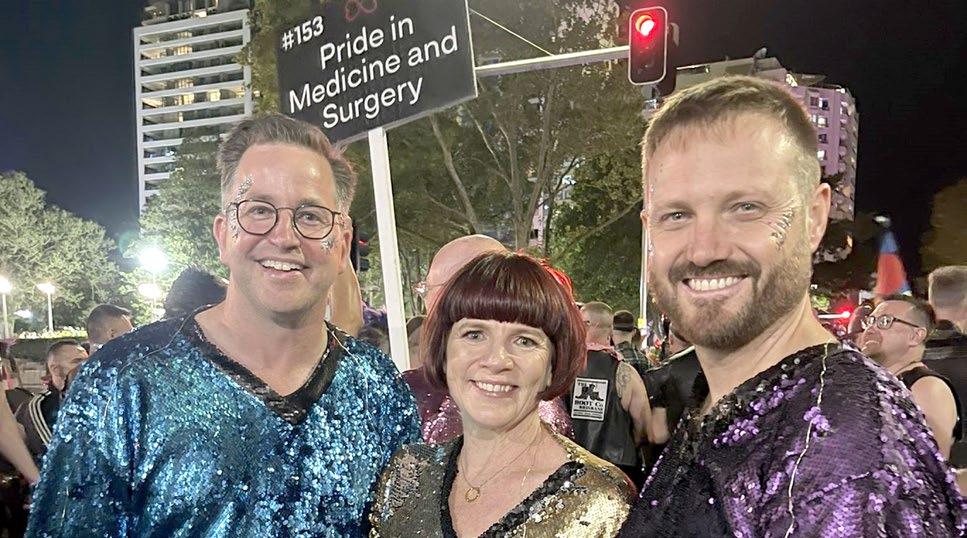
After attending a pre-parade pride in medicine breakfast hosted by the Royal Australasian College of Surgeons’ (RACS) NSW office, participants began their preparations for the parade later that day, ensuring they were well-hydrated and had emergency blister band-aids on hand.
The chair of the Council of Presidents of Medical Colleges Dr Vijay Roach said the Pride in Medicine Group expressed their deep appreciation to the colleges for their support with trainees, members and also patients celebrating the inclusive message.
“I want to acknowledge Sally Langley (RACS president) and RACS, who supported Pride in Medicine from its inception. I also know that each of you connected with Pride in Medicine and GLAAD (Gay & Lesbian Alliance Against Defamation) in your own way. I also acknowledge the extraordinary organisers, participants, and our many fans!”
50 ANZCA Bulletin | Autumn 2023
ANZCA fellows Associate Professor Nicole Phillips and Dr Scott Douglas put on their dancing shoes and donned sequinned scrubs as college representatives for the inaugural Pride in Medicine and Surgery float at the 2023 Mardi Gras parade in Sydney.
Associate Professor Phillips and Dr Douglas were among the 60 representatives from 14 medical colleges who escorted the float on its four-kilometre parade route as part of Sydney World Pride 2023 in March.
“Looking at this through a CPMC lens, this is the power of our council of presidents. When we speak, when we lead, when we walk the walk, we inspire, we validate and support our trainees and members. ”
Above: Fellows Dr Chris Duffy (left) with Associate Professor Nicole Phillips and Dr Scott Douglas ready to march.
How to introduce washable cloth theatre hats
Replacing disposable theatre hats with a washable cloth variety has been shown as a sustainable and economically viable alternative in many hospitals.
Following a comprehensive literature search, and with input from several fellows, ANZCA has developed a LibGuide to support this. See https://libguides.anzca.edu.au/enviro/caps.
Some useful tips that might be useful in approaching your hospital to make the change:
• Find out if a policy exists at your hospital that governs theatre attire during surgery. If you have an online policy repository, review this. The next best alternative is your theatre nurse unit manager (NUM) or in-charge; they’re frequently intimately aware of policies and protocols.
• Gather an interested and diverse team to support you. It’s best to include anaesthetists, surgeons, theatre nurses, infection control to ensure all appropriate aspects of the problem are considered. Consider involving your hospital’s sustainability team, if one exists.
• Write an evidence-based proposal, present it to your hospital executive alongside an evidence-based guideline. Include some versions that have been successful.
Helping hospitals transition to cloth theatre hats is part of ANZCA’s commitment to minimising the health impact of climate change and promoting environmental sustainability.

Environmental sustainability is a key theme of this year’s ANZCA Annual Scientific Meeting (ASM) (see https:// asm.anzca.edu.au/asm-sustainability/) which has had cloth theatre caps specially designed using the ASM theme.
Are you interested in becoming an Australian airway lead?
The Airway Special Interest Group (SIG) is looking to grow its Australian Airway Leads Network to more public and private hospitals.
New Zealand has maintained a robust network of airway leads since 2018. The SIG would like to strengthen the network in Australia with greater engagement and collaboration from nominated airway leads.
While the role is not a formal requirement in the ANZCA accreditation process or part of the curriculum, if your hospital is currently without an airway lead and you have a keen interest in the role, we encourage you to nominate.
For more information go to the college website.
51
Self matters
This regular column explores doctors’ health by highlighting practical ways to support anaesthetists’ and pain specialists’ wellbeing and how it impacts private lives. This edition’s piece by fellows and friends Dr Shirley and Dr Cruice focuses on the value of a wellness retreat.
Last year, anaesthetists Dr Anna Shirley and Dr Stephanie Cruice approached me about their plans to attend a doctors-only wellness retreat and I’m delighted to present this column on their experiences there.


When I read it, I immediately related to their description of a friendship initiated and consolidated by the comradery of tackling training requirements together. There is nothing else quite like the shared experiences we go through professionally.
Their slowly developing recognition that all was not well is also familiar to many of us. And they’ve come away from the retreat with some really thoughtful ways to look after ourselves through compassionate boundary setting and meditation practice. I trust you enjoy this piece as I did. If you have a wellbeing story you’d like to share, please email me at lroberts@anzca.edu.au.
Dr Lindy Roberts AM ANZCA Director of Professional Affairs, Education

THE WHOLEHEARTED DOCTOR: HOW TO FIND A BETTER LIFE BALANCE BIGGER TO MAKE IS STAND OUT
We have been friends since we started our anaesthesia training together at Ipswich Hospital – braving the onslaught of exams, endless changing hospital rotations, long challenging night shifts and, finally, the step into consultant land, arms linked.
Over the years of friendship, our careers have taken different paths – Anna took six months off before sitting her fellowship exam to recapture the meaning of life (baking her way into a successful cupcake business), while Steph gently waded into consultant life, working two days a week after a hectic fellowship.
Both of us feeling, at different points in our careers, that things were amiss and perhaps a bit “too much”, but neither of us understanding entirely how or why.
As consultants, we started to reflect on our training experiences and notice our trainees’ mental health more, which prompted us to think more about what we could change in our workplaces. Was “burnout’” (box 1) what both we and our trainees were experiencing, or was it a lack of focus on our own personal health and wellbeing – or both?
BOX 1
WHAT IS BURNOUT? 1
• WHO ICD-11 definition of burnout:
- Feelings of energy depletion or exhaustion.
- Increased mental distance, or feelings of negativism or cynicism related to one's job.
- Reduced professional efficacy.
• A “syndrome" that results from chronic workplace stress that has not been successfully managed. It is an occupational phenomenon, and not a medical condition (different to mood or adjustment disorders). Burnout is fundamentally rooted in systems, not individuals.
WHAT BURNOUT ISN’T:
• Learning to be more “resilient”.
• An individual’s “fault” or “issue”.
• Not wanting to help patients or colleagues.
• Only because of the pandemic.
52
ANZCA Bulletin | Autumn 2023
“Service from abundance” – you can’t learn to swim when you’re drowning
Photos of authors, above right: Dr Anna Shirley (left) FANZCA, Toowoomba Hospital and Dr Stephanie Cruice FANZCA, Royal Hobart Hospital.
Systemic issues contribute to reduced health and wellbeing in healthcare workers. Chronic workforce shortages, escalating workloads and stress (including the effects of the COVID-19 pandemic), underinvestment in public health infrastructure and inadequate access to leave have all played their part in creating this feeling of burnout2,3. Also, our healthcare system is not built for health professionals – it’s built for our patients. And while the health of our patients and caring for others is always our priority, it should not be our only one2. As we care for our patients, it can often mean neglecting our own health and welfare.
Health professional wellness should be seen as a shared responsibility between individuals, healthcare organisations and governing bodies to create a cultural shift in medicine that values and supports our wellbeing1. Our own college and the Wellbeing Special Interest Group have made founding steps towards this goal, and through their acknowledgement of the importance of doctors’ wellbeing are supporting us in finding better balance. When we stumbled across the Whole Hearted Medicine Doctors’ Self Care Retreat on the college website, including approved continuing professional development points (now hours), we felt supported to take a step in the right direction to figure out why we might be feeling a sense of decreased wellbeing.
The Whole Hearted Medicine retreat4 took place over a fourday period in the peaceful town of Daylesford, Victoria. It is run by a fellow doctor (general practitioner Dr Emily Amos) who found herself in a place of burnout and now teaches others the warning signs and how to avoid and manage them. When we arrived, we immediately felt supported and accepted, as we were surrounded by 11 other doctors who all felt the same as we did. Much to our surprise, there were four other anaesthetists there, as well as colleagues from other specialities including radiology, infectious diseases, nephrology, obstetrics and gynaecology, and general practice. During the retreat we were made aware of the concept of the “wholehearted doctor” – one who has self-awareness, self-compassion, engages in self-care and, as a result, can give more to others (also known as “service from abundance”). We also explored the themes of mindfulness and meditation, and setting “compassionate boundaries”. Importantly, we also became aware of what we are saying “no” to in our personal lives when we agree to more “yes” in our working lives. The retreat created a supportive and safe space for sharing the trials and tribulations of the work-life balancing act. It gave us a renewed sense of enthusiasm for supporting ourselves, our colleagues and trainees.

MEDITATION PRACTICES
One valuable tool we took from the retreat was becoming aware of the variety of meditation practices (box 2). Meditation had previously existed in our minds as a silent room, eyes closed, uncomfortable attempts at “relaxing”, but there’s nothing less relaxing than being told to relax. The retreat unpacked different types of meditation, as well as key concepts on how to meditate. Whether you only have five minutes in your busy schedule or fall asleep during meditation – the good news is, you can’t meditate incorrectly! Starting somewhere and allowing yourself to find the right type for you is fine, and means making your health a priority.
BOX
MEDITATION: THERE IS NO “WRONG” WAY
• Sleep will find you → falling asleep is not a failure in meditation – if your body needs it, then it needs it.
• Wandering thoughts → that’s what minds do. Just come back to the next breath.
• Time is not your enemy → start with five minutes.
• Meditation isn’t the same as sleep or relaxing → meditation can help you relax, but it’s an active process.
• “I tried it once, and it didn’t work” → there are many different types (maybe you didn’t find the right one for you):
- Types include breath focused, moving/walking, mantra, nature focused, mindfulness, sleep focused (Yoga Nidra)
DOCTORS’ HEALTH AND WELLBEING 53
Back row, from left, Dr Nikki Dyson, Dr Pip Lane, Dr Marion Bray and front row from left, Dr Sian Sutherland, Dr Stephanie Cruice, Dr Anna Shirley (all FANZCAs).
2
COMPASSIONATE BOUNDARIES
The other key concept that stood out from this retreat was setting “compassionate boundaries” and the shared experience of feeling uncomfortable in saying “no” to others, mostly due to guilt. A “compassionate boundary” is one that helps protect you and your values and priorities, while preventing resentment forming, as you only engage in or devote energy to positive activities (box 3). This also acknowledges that you are a human being with the same basic human needs and the same 24 hours in each day as everyone else. You cannot be everything to everyone all the time.
HOW DO YOU SET A COMPASSIONATE BOUNDARY?
• Define your priorities, values and passions:
- What do you want for your life/career/family?
- What is most important to you? Review your current work and life commitments.
• Use your list of priorities and values to guide your response to opportunities and offers:
- Say “no” when it’s not a “hell yes”.
- Say “hell yes” when it’s an opportunity that aligns with your values and you have the capacity to participate.
• What does it sound like to set a compassionate boundary?
- “Thanks for thinking of me for this opportunity, however I currently don’t have the capacity to take on more work tasks.”
- “I’ll get back to your email/request in work hours at the soonest convenient time”.
USEFUL RESOURCES
Mindfulness for Wellbeing and Peak Performance Course. Monash University (CPD points, online, free!) www.futurelearn.com/courses/mindfulness-wellbeingperformance
In shock: how nearly dying made me a better doctor. Random House, UK, 2019. Book.
Dr Rana Awdish, an Intensivist who became a patient herself reflects on (and is appalled by) “our carefully-cultivated, yet often misguided, standard of care…which we have built to try to protect ourselves.”
Mindfulness for life, Exisle publishing, 2021. Craig Hassed and Stephen McKenzie, a book that translates the scientific principles behind mindfulness into a simple, practical and accessible manual to applying mindfulness in your own life.
While we know that some of our colleagues have been fortunate enough not to experience burnout or have been able to successfully juggle the work-life balancing act, it’s important to acknowledge that this isn’t how all health professionals feel. The retreat helped us to realign our values by placing ourselves first to give the best care to our patients. This supports the wave of cultural change in the healthcare system to focus on the wellbeing and welfare of both patients and healthcare workers alike.
References
1. Berg S. Physician Health: WHO adds burnout to ICD-11. What it means for physicians. 2019. https://www.ama-assn.org/practicemanagement/physician-health/who-adds-burnout-icd-11-what-itmeans-physicians
2. Balgent M, Balgent R. Burnout in the medical profession: not a rite of passage. MJA 2018;208:471.
3. Mendelsohn D. Self in medicine: determinants of physician wellbeing and future directions in improving wellness. Med Educ 2022;56:48. DOI: 10.1111/medu.14671
4. Whole Hearted Medicine Retreats Website. Mindfulness & wellbeing retreats for doctors. Information on future retreats and venues at https://www.wholeheartedmedicine.com.au/
My year of living mindfully, book Hachette Australia, 2020; documentary, Elemental Media, 2020.
Shannon Harvey, an Australian health journalist, is poked, prodded, scanned and screened as she travels the world to interview 18 of the world’s leading mindfulness scientists and pioneers.
Insight Timer app and Smiling Mind app (both available from Apple and Google Play)
54 ANZCA Bulletin | Autumn 2023
Dr Anna Shirley FANZCA and Dr Stephanie Cruice FANZCA
Free ANZCA Doctors’ Support Program
• Email eap@convergeintl.com.au.
• Identify yourself as an ANZCA/FPM fellow, trainee or SIMG (or a family member).
• Appointments are available from 8am to 6pm Monday-Friday (excluding public holidays).
• 24/7 emergency telephone counselling is available.
Make sure you’re not missing out on important information!
Keep your details up to date on the MyANZCA portal. We use the information on your MyANZCA profile for all of our official communications, including:
Exam updates · Events and courses · Committee vacancies
Safety alerts · Hospital rotations · Research opportunities
So please take a few minutes to check your personal details. It’s easy to do, and ensures you won’t miss out on important information.
1. Log into anzca.edu.au/portal
2. Click “Update my contact details”
3. Ensure your details are up-to-date and click “save”.
If you have multiple addresses you can select a preferred mailing address. You may also choose to let us know if you identify as Aboriginal Australian, Torres
Strait Islander, Māori or Pacific Islander; and alert us to any dietary requirements.
If you’re worried that you’re not receiving our emails, please check your junk and spam filters and, if necessary, add @anzca.edu.au or @anzca.org.nz to your address book.
And don’t forget to follow us on your favourite social media channels for all the latest news, events, and insights into college life.
DOCTORS’ HEALTH AND WELLBEING 55 HELP IS ALSO AVAILABLE VIA THE Doctors’ Health Advisory Services: NSW and ACT 02 9437 6552 NT and SA 08 8366 0250 Queensland 07 3833 4352 Tasmania and Victoria 03 9280 8712 WA 08 9321 3098 Aotearoa New Zealand 0800 471 2654 Lifeline 13 11 14 beyondblue 1300 224 636
to make an appointment:
How
To speak with a counsellor over the phone or make an appointment to see a consultant for a face-to-face session: • Telephone 1300 687 327 in Australia or 0800 666 367 in New Zealand.
Be connected

‘We’re very fortunate to have been allowed this opportunity to showcase the breadth of talent and skill of our experts in anaesthesia, pain medicine and other disciplines. We’re proud to present this diverse and stimulating program that has something for everyone no matter stage of practice, geography, or specialty interest. Please join us and #BeConnected in Sydney.’
Dr Shanel Cameron and Dr Tanya Selak, ASM Co-convenors
56 ANZCA Bulletin | Autumn 2023
asm.anzca.edu.au AN ZCA ASM 2023 5-9 May,
#ASM23SYD
Sydney
• Access to EVERY. SINGLE. SESSION of the ASM scientific program!
• 70+ hours of program content, no more choosing between sessions… watch live in-person to engage and catch up via onDemand, in your own time.
• The in-person delegate gets 24 knowledge and learning CPD hours/credits and virtual delegates get 9.5 hours/credits, auto-populated to your CPD profile (with opportunities to earn/add further hours/credits).



• Plenty of opportunities to engage and interact with your colleagues from near and far. Social highlight: Dust off your dancing shoes and get your glow on in black tie, shimmer and sparkle at the ANZCA ASM Gala Dinner!
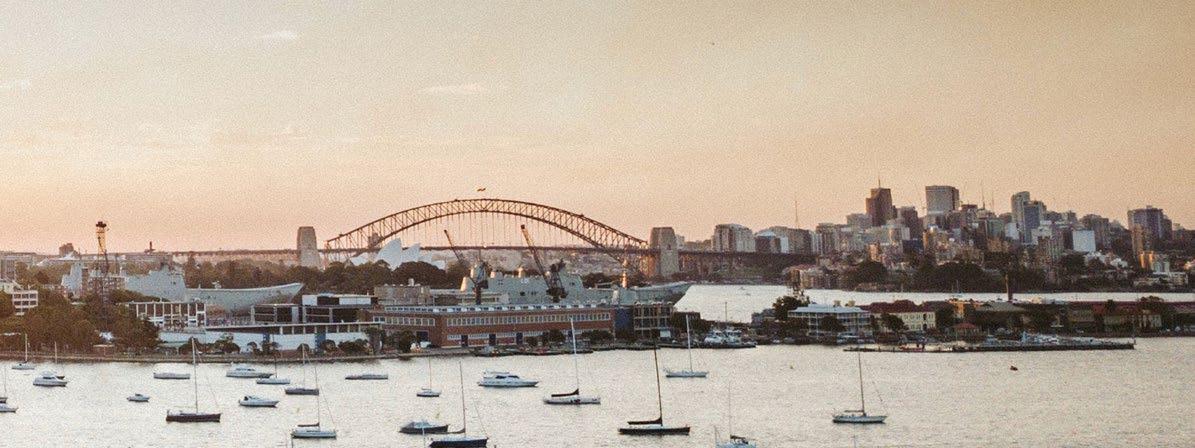
• Feed your appetite for reconnection in the healthcare industry exhibition.
SUPPORTED
BY GOLD SPONSORS
57
Whether you are in-person or a virtual delegate your 2023 ANZCA ASM registration gives you:
The importance of tackling leaks in nitrous oxide pipes

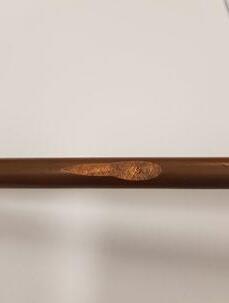
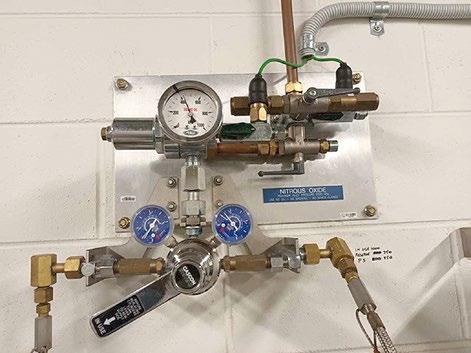
Nitrous oxide (N2O) is a gas that has been in use as long as anaesthesia has been a specialty.1 While many other anaesthetic agents have come and gone, N2O withstood the test of time due to its unrivalled rapid offset and analgesic effect.2. However, the development of newer anaesthetic agents and better understanding of climate science has an increasing number of anaesthetists questioning the role of N2O in modern anaesthesia.
The introduction of rapid offset volatile agents and short acting opioids has removed the clinical need for N2O. There is also growing awareness of the negative environmental impacts of this gas.3 N2O is a potent greenhouse gas with a global warming potential 273 times greater than carbon dioxide (CO2).4
Due to its prolonged atmospheric lifetime of 110 years N2O released today will have warming effects into next century, long after the time the world must have reached zero net emissions. The long lifetime also allows N2O to move up into the stratosphere where it depletes the ozone layer.3, 5
A recent Intergovernmental Panel on Climate Change report states that net zero CO2 emissions are required by the early 2050s to limit global warming to a somewhat manageable 1.5 degrees.4
This means that reducing our carbon emissions has never been more important. The healthcare sector in Australia accounts for 7 per cent of the total national carbon footprint.6 N2O is estimated to be roughly 2-3 per cent of the National Health Service (NHS) emissions in the UK.7,8 Therefore assuming similar N2O use in Australia it is a significant single agent contributor to climate change.
The UK Nitrous Oxide Project, led by pharmacist Alifia Chakera, has found that a significant portion of NHS N2O is wasted due to leaks in the manifold and ageing piped gas systems in the NHS hospitals. An audit of 16 hospitals showed that wastage via leaks accounted for over 95 per cent of N2O use.9,10 Data from other hospitals in Ireland, NZ and Australia show that the issue of wastage due to leak is likely to be a common problem.11,12
The authors’ facility of Sir Charles Gairdner Hospital (SCGH) in Perth provides a great case study for the issues faced by those looking to reduce their N2O footprint. SCGH is an adult only, non-maternity hospital. An audit of the consultant group suggested limited usage, but the hospital was incongruently purchasing over 900kg of N2O each year. The anaesthesia-led journey to discover the source of the leak exposed some unsettling truths regarding the poor stewardship of N2O.
At SCGH there was no service contract in place to regularly assess the N2O infrastructure and it was unclear when this had last happened. Additionally, the hospital’s map of the N2O pipeline was over a decade out of date and contained many errors. Updating the map revealed active outlets in non-clinical areas, including a library, and limbs to the
intensive care unit and emergency department where N2O was no longer used. This made the system vulnerable to leaks and abuse. With the start of a service contract a major leak was found at a manifold regulator (figure 1) and the department was reassured that the problem was solved.
After six months of decreased N2O purchasing, an uptick in procurement suggested a new leak. Following the maintenance guidelines of the Australian standards the search for the leak involved visual inspection and soapy water testing of key parts of the system. This failed to identify the problem.
Further examination of the system by pressure testing confirmed the presence of a leak. When focused pressure testing of individual limbs and theatre piping occurred, not one but five leaks were found. There was a large new leak in a worn copper pipe (figure 2 and 3) and there were leaks in four theatre pendant systems. These pendant leaks were likely to have been long term and missed with previous visual testing strategies.
58 ANZCA Bulletin | Autumn 2023
Figure 1: Main regulator at SCGH where original leak was found.
Figure 2 and 3: Vibrating waste pipe rubbing against N2O pipe (arrow) causing second large leak.
The SCGH anaesthesia department has now disconnected all anaesthesia machines from the piped N2O, and we are working towards decommissioning the N2O manifold and pipeline. Selected anaesthesia machines have attached N2O cylinders and portable Entonox to be used as required. The overall lack of stewardship of N2O is a problem that all hospitals will need to address. Most anaesthesia departments do not know how much N2O they use or how much the hospital purchases. The engineering team assume there is widespread use and simply order new bottles when one side of the manifold is empty. The N2O suppliers’ goal is to sell N2O, they do not monitor for unusual purchasing and hospital finance pay the bill without any understanding of volume supplied. Despite it being an S4 drug, pharmacy is typically not involved. This results in a dysfunctional system without monitoring in which leaks can easily go undetected. We believe the collective issues at SCGH are likely to be widespread across hospitals in Australia. To open discussion around the environmental impacts of N2O and to help others navigate the obstacles identified we have created the Kn2oW Nitrous campaign. This campaign hopes to empower people to examine their N2O consumption in their own hospital with the aim of reducing N2O emissions. To make things easier we have provided some simple steps to follow for anyone interested in tackling these issues at their own institution.
ENGINEERING
• Ensure the map of N2O infrastructure is up to date and decommission any unused outlets or limbs.
• Ensure that your hospital has a service contract to regularly assess piping infrastructure. Clarify how they are checking the hoses in the pendant system for leaks. In addition to following the Australian Standard, the system should be pressure tested.
• Ascertain the size of the N2O manifold. Aim to downsize the manifold so regular purchasing is needed. This decreases the cost of cylinder hire and enhances the detection of new leaks.
FINANCE OR GAS PROVIDER
• Determine the timing and amount of N2O procured by your hospital over the last five years.
ANAESTHESIA DEPARTMENT
• Audit the clinical use of N2O in the department by consultant survey and interrogation of the anaesthesia machines. Determine if clinical use matches purchasing.
• Educate the department on the environmental impacts of N2O and potential strategies to reduce N2O use.
• Consider decommissioning the piped N2O system in adult-only hospitals.
Climate change is a problem for us all to tackle. As the guardians of inhaled anaesthetics, anaesthetists have a major role to play in reducing health system emissions due to these greenhouse gases.
Less obvious, but maybe more important, is the need to tackle leaks in the N2O piping infrastructure. We hope the KN2OW Nitrous campaign will help make this process easier as we transition to a more sustainable health care system.
Dr Elliot Smith, trainee anaesthetist
Sir Charles Gairdner Hospital, Perth
Dr Christopher Mitchell FANZCA
Sir Charles Gairdner Hospital, Perth
References
1. Haridas. Horace Wells’ demonstration of Nitrous oxide in Boston. Anesthesiology. 2013; 119: 1014-1022.
2. Buhre et al. European Society of Anaesthesiology Task Force on Nitrous Oxide: a narrative review of its role in clinical practice. BJA. 2019; 122(5): 587-604.
3. Mcgain F et al. Environmental sustainability in anaesthesia and critical care. BJA. 2020; 125(5): 680-692.
4. Climate change 2021: The physical science basis. [internet]. New York (USA): Intergovernmental Panel on Climate Change; 2021 [cited 2023 Feb 14]. Available from: https://www.ipcc.ch/report/ ar6/wg1/
5. Campbell M, Pierce T. Atmospheric science, anaesthesia and the environment. BJA Education. 2015; 15(4): 173-179.
6. Malik et al. The carbon footprint of Australia health care. Lancet Planet Health. 2018; 2: 27-35.
7. Baddley J. Is green the new blue? 2019 [cited 11 July 2022]. Available from: https://www.youtube.com/watch?v1⁄4x5yl7nZsApQ.
8. Faculty of Public Health Special Interest Group: Sustainable Development. The NHS carbon footprint [internet] 2018 [cited 11 July 2022]. Available from: https://www.fph.org.uk/media/3126/ k9-fph-sig-nhs-carbon-footprint-final.pdf
9. Spencer N et al. NHS Lothian nitrous mitigation project: assessing nitrous oxide usage at a district general hospital. Anaesthesia. 2021; 76(6): 24.
10. Wise J. Creating more sustainable practice: the NHS clinical teams innovating for a greener future. BMJ. 2021; 375: 1-3.
11. Seglenieks R et al. Discrepancy between procurement and clinical use of nitrous oxide: waste not, want not. BJA. 2022; 128(1): 3234.
12. Keady T et al. Annual greenhouse gas emissions from inhaled anaesthetic agents in the Republic of Ireland. BJA. 2023; 130(1): 13-16.
ENVIRONMENTAL SUSTAINABILITY 59
"Updating the map revealed active (N2O) outlets in non-clinical areas, including a library"
A view from net zero
Does anaesthesia need an emissions reduction target? It’s worth considering.1

The NSW net zero leads program has been running since late 2022, with the focus on emissions reductions (ER). I am one of two anaesthesia leads. The Net Zero Program was established through the climate risk and net zero unit, in the NSW Ministry of Health.
Healthcare in Australia and globally is a major contributor to greenhouse gas emissions (GHG) 2 3 and anaesthesia is a carbon hotspot.4
Anaesthetic gases have been estimated at five per cent of all UK National Health Service (NHS) acute facility emissions, and two per cent from NHS healthcare overall.
FIGURE 1
Immediate “strong, rapid, and sustained” ER across all sectors is the minimum requirement to limit global warming to the crucial 1.5°Celsius and avert millions of deaths worldwide according to the Intergovernmental Panel on Climate Change. 5 6 Climate change is having an increasing impact on our physical and mental health. 7 This is more of an emergency than the COVID-19 pandemic - but without a vaccine.8 It threatens the very ability of our healthcare services to continue providing acceptable care.9 10
The primary emissions in anaesthesia are our invisible agents, nitrous oxide (N2O)11, desflurane, and sevoflurane.12 We are guardians of fluorinated gases - a group of the most potent and damaging type of anthropogenic greenhouse gases (GHGs.)13
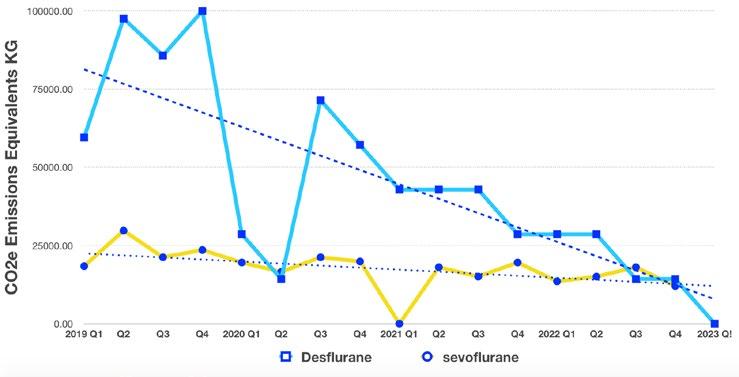
60 ANZCA Bulletin | Autumn 2023
One bottle of desflurane is equivalent to emissions from 16,000km in a motor vehicle (*GWP20 Des).14 15 Indeed, the NHS (UK) is to decommission desflurane by early 2024.16 N2O is our "legacy" anaesthetic adjunct, our oldest (~160 years). Every use in anaesthetics today continues warming the atmosphere (GWP100 290) and depleting ozone for ~ four generations − not the legacy we wish to leave behind.
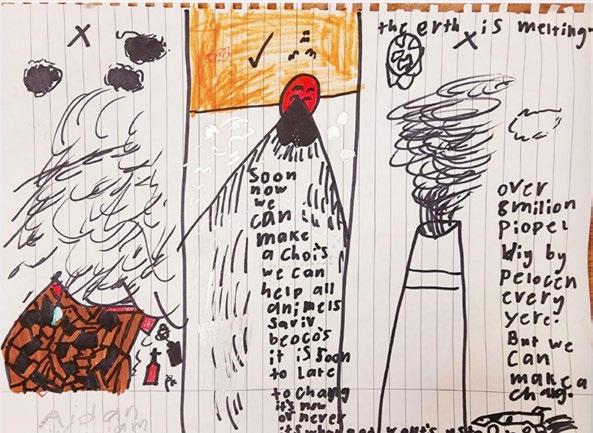
The number of anaesthetics administered is increasing. So, ambition, rapidity, scale, and resilience of our reduction strategies are crucial.17 Our volatile emissions are not included in national or state GHG inventories. N2O (the third largest contributor to climate change) is only estimated using old supplier data (up to 2008), with no medical delineation. Our emissions unaccounted for, we are in a privileged and responsible position to bring about change.
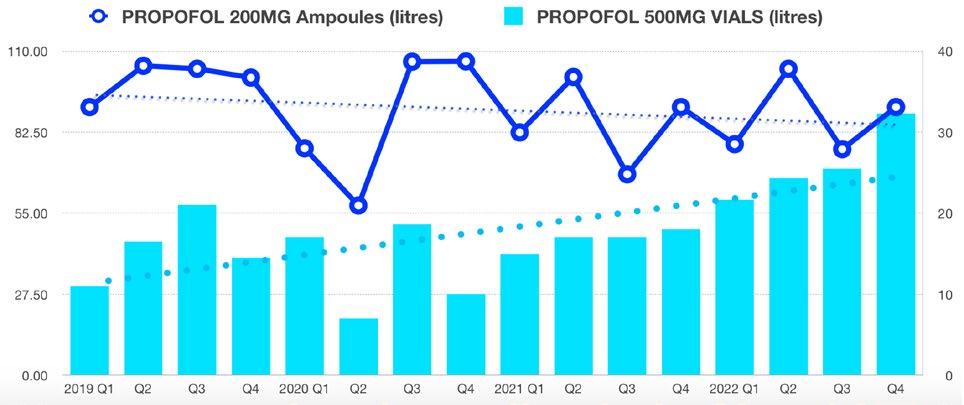
ENVIRONMENTAL SUSTAINABILITY 61
FIGURE 2 (Left axis 20ml amps, right axis 50ml vials)
Dr Hull’s motivation for taking on a net zero lead role: musings of his son in kindergarten − climate change, waste, smoke cars and GHGs.
A NSW EXAMPLE OF PROGRESS
At Bankstown-Lidcombe Hospital (BLH) in Sydney, we have made substantial gains in anaesthesia emissions reduction (fig 1,2). Over four years our per patient (pp) volatile GHG emissions are down by 57 per cent. Desflurane eCO2 emissions for 2022 vs 2019, have dropped 257,000 Kg eCO2 (~ 1,728,000 km tailpipe eCO2 emissions!). The trend is continuing.
Sevoflurane consumption has dropped 18.5 per cent pp. Propofol, 50ml vial consumption pp has doubled - largely reflecting total intravenous anaesthesia (TIVA) as a general anaesthesia technique. This is supported by observations of increasing TIVA use in BLH theatres while 200mg propofol ampoule consumption pp is up 16 per cent.
Combined overall costs are down 44.5 per cent, 28 per cent pp, based on today’s pricing.
With respect to N2O our hospital (and other comparable institutions) consumption is now quantified, though not differentiated (that is, maternity/theatre/emergency). Efforts are being made to establish sensitive monitoring for pipeline leaks. This requires teamwork with in-house engineers and contractors.
At BLH we are on course to achieve similar results to anaesthesia emissions reductions in the NHS.18 And of course, there are many anaesthetic departments around Australia that have made great efforts and advances in ER. It's notable that the NHS is a world leader in healthcare ER, with an 80 per cent target by 2028-2032. The UK anaesthesia community has owned and acted on their emissions.19
Australian anaesthetists have the capability to equal or better the NHS, but it requires sharing and multiplication of all our efforts. The American Society of Anesthesiologists is also taking strides in leadership on ER. Their inhaled anaesthetic 2022 challenge20 is worth highlighting.
While we need to focus on desflurane, N2O, sevoflurane (low flows**)12, and encouraging TIVA,21 some related priorities for anaesthetic emissions reductions are:
• Measuring our emissions and trends, sharing data 22
• Involving both the private and public systems.
• Removing barriers to TIVA23 including appropriate propofol disposal systems. Increased trainee exposure, confidence and competence in TIVA.
• Advocating for 100 per cent renewable energy to power our equipment.
• Saving energy from heating ventilation and cooling in theatres24, and turning things off after-hours (sounds simple).25
• Reducing our disposable consumption and waste2 (including more reusables, longer life disposables.)
• Ensuring strictly defined waste streaming especially for high emission/cost26 streams such as clinical/sharps.
• Recycling is a distant second best to ‘refusing’ and ‘reducing’, but when used should follow principles of the circular economy27 and emissions reductions.
• N2O stewardship. There is extensive evidence that up to 95 per cent of hospital N2O is lost as wasted fugitive emissions.28 29 Anaesthetists are the N2O experts, anaesthetic departments can take on N2O stewardship and coordination, auditing procurement and use, and implementing systematic leak monitoring. Our ‘leaky’ N2O hospital pipeline systems need reconsideration to minimise harm.30 Part of the hospital-wide solution would probably include targeted change from pipelines to location specific cylinders (easily assessable, can be closed between uses). Checking our own nitrous connections in theatre each morning and ensuring regular biomedical checks/maintenance of outlets and associated equipment are important. A Bristol (UK) hospital realised an 80 per cent reduction in N2O ‘consumption’ by disconnecting anaesthetic machines from outlets until needed. The conclusion, that previously these connections had been a source of major leakage
• Finally, nominating net zero anaesthetic consultant leads in anaesthetic departments can turbo charge ER! 31
Our patients are aware of climate related threats to their health.32 We can show them we are being proactive, and giving them clean air in more ways than one.
Our profession can reduce direct and related anaesthetic emissions quickly, and significantly. In a climate related public health emergency this puts us in the driver’s seat. There’s no better time than today, to start targeting net zero anaesthesia.
Dr Anthony Hull FANZCA
Anaesthetics Net Zero Lead, NSW
South Western Sydney Local Health District
*GWP20 - Global Warming Potential over 20 years.
**Low Flows ~ 0.5 lpm.
62 ANZCA Bulletin | Autumn 2023
References:
1. https://www.bmj.com/company/newsroom/set-targets-to-cut-inhaled-anaesthesia-greenhouse-gas-emissions-urge-doctors-2/
2. Environmental impacts of Australia's largest health system sciencedirect.com/science/article/abs/pii/S0921344921001634? msclkid=9cec8547cf6211ec92f3bc71cfc8ea29
3. THE CARBON FOOTPRINT OF AUSTRALIAN HEALTHCARE https://www.thelancet.com/action/ showPdf?pii=S2542-5196%2817%2930180-8
4. https://www.thelancet.com/journals/lanplh/article/PIIS2542-5196(17)30040-2/fulltext
5. PCC: "Now or Never" on 1.5°C warming limit.. https://public.wmo.int/en/media/press-release/ipcc-now-or-never-15%C2%B0c-warminglimit#:~:text=%E2%80%9CIt's%20now%20or%20never%2C%20if,dioxide%20emissions%20reach%20net%20zero
6. https://www.anzca.edu.au/resources/environmental-sustainability/anzca-statement-on-climate-change_2020_version-2_p.pdf
7. https://www.lancetcountdown.org/2019-report/
8. https://www.stockholmresilience.org/research/research-news/2022-09-08-world-at-risk-of-passing-multiple-climate-tipping-pointsabove-1.5c-global-warming.html
9. https://acem.org.au/News/December-2021/Medical-Colleges-declare-climate-change-to-be-the
10. https://dea.org.au/doctors-for-the-environment-australia-net-zero-report/
11. https://www.bmj.com/content/377/bmj.o1301
12. https://codachange.org/anaesthetic-gases-info/
13. United States EPA. https://www.epa.gov/ghgemissions/overview-greenhouse-gases#:~:text=Nitrous%20oxide%20molecules%20 stay%20in,1%20pound%20of%20carbon%20dioxide
14. The future is now—it’s time to rethink the application of the Global Warming Potential to Anaesthesia. https://link.springer.com/ article/10.1007/s12630-019-01385-w
15. To the Editor’ https://link.springer.com/article/10.1007/s12630-017-1006-x#:~:text=Volatile%20anesthetic%20drugs%20are%20 halogenated,similar%20mass%20of%20CO2
16. Joint statement on NHSE’s plan to decommission Desflurane by early 2024. UK. https://anaesthetists.org/Home/News-opinion/News/ Joint-statement-on-NHSEs-plan-to-decommission-desflurane-by-early-2024
17. https://www.ipcc.ch/2022/04/04/ipcc-ar6-wgiii-pressrelease/
18. https://www.england.nhs.uk/greenernhs/whats-already-happening/nhs-organisations-cut-desflurane-in-drive-for-greener-surgery/
19. https://pharmaceutical-journal.com/article/opinion/climate-leadership-demands-weighing-and-owning-risk-lessons-from-anaesthesia
20. https://www.asahq.org/about-asa/governance-and-committees/asa-committees/environmental-sustainability/inhaled-anestheticchallenge
21. Sherman, Jodi MD*; Le, Cathy†; Lamers, Vanessa†,‡; Eckelman, Matthew PhD§. Life Cycle Greenhouse Gas Emissions of Anesthetic Drugs. Anesthesia & Analgesia 114(5):p 1086-1090, May 2012. | DOI: 10.1213/ANE.0b013e31824f6940
22. ANZCA Bulletin Autumn 2022. Page 44. Dr Chris Mitchell.
23. An International Survey Evaluating Factors Influencing the Use of Total Intravenous Anaesthesia May 2018 Anaesthesia and Intensive Care 46(3): https://journals.sagepub.com/doi/pdf/10.1177/0310057X1804600312
24. Environmental sustainability within anaesthesia and critical care. https://www.ncbi.nlm.nih.gov/pmc/articles/PMC7421303/
25. Reducing the Carbon Footprint of Anaesthetics https://healthmanagement.org/c/icu/news/ea22-reducing-the-carbon-footprint-ofanaesthetics
26. The carbon footprint of waste streams in a UK hospital http://wrap.warwick.ac.uk/146279/
27. https://ellenmacarthurfoundation.org/articles/recycling-and-the-circular-economy-whats-the-difference
28. https://associationofanaesthetists-publications.onlinelibrary.wiley.com/doi/10.1111/anae.15785
29. https://www.bjanaesthesia.org/article/S0007-0912(21)00691-7/fulltext
30. Chakera A. Driving down embedded emissions from medical nitrous oxide. British Medical Journal 2021; 375: 2922. https://www.bmj.com/ content/375/bmj.n2922
31. https://www.nslhd.health.nsw.gov.au/News/Pages/NSLHD-commences-Australian-first-net-zero-program.aspx
32. What Australia’s Health Panel said about the impact of climate change on health- Jan 2020 chf.org.au/ahpclimatesurvey
ENVIRONMENTAL SUSTAINABILITY 63
The faculty turns 25!
This year marks the 25th anniversary of the Faculty of Pain Medicine, ANZCA. As we reflect on the many achievements over the years and in honour of the hard work and dedication of the entire fellowship, many celebratory initiatives will be undertaken throughout the year.
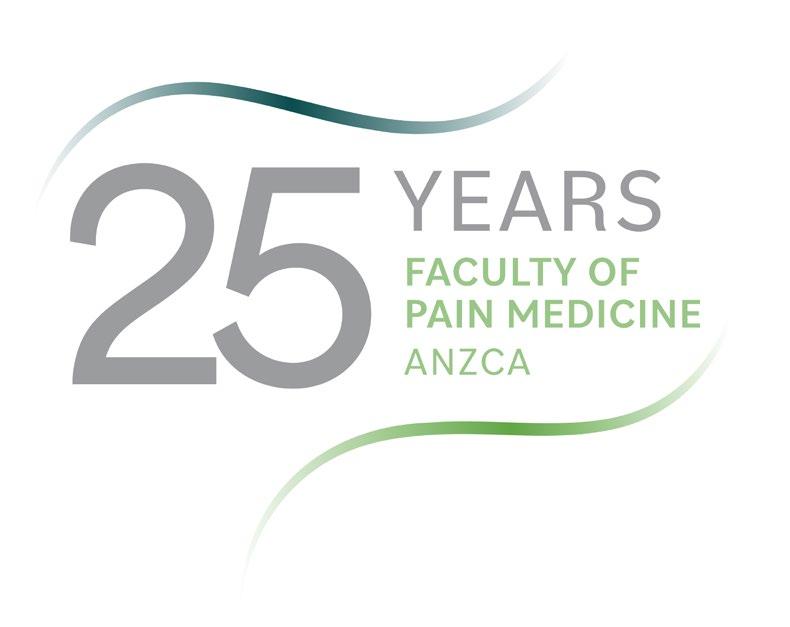
You’ll find:
• A new logo for use on email signatures and letterhead, available on the website via the fellows' toolkit.
• A specially themed Spring Meeting and celebratory dinner in Adelaide.
• Memorabilia for purchase.
• A Geoffrey Kaye museum online exhibition.
We’d love to hear your personal reflections and defining moments of the past 25 years for inclusion in the exhibition including photos (jpeg format). These can be sent to fpm@anzca.edu.au.
The Geoffrey Kaye Museum of Anaesthetic History has secured the services of “Matilda”, a mobile sound recording studio, for the Sydney ANZCA Annual Scientific Meeting. We’re asking FPM fellows to record their thoughts on the future of pain medicine and why they chose pain medicine as a career.
Further updates on our anniversary will be provided throughout the year.
Please keep an eye out for opportunities to join in as we celebrate 25 years of leading the world in pain medicine education, advocacy, training and research.
64 ANZCA Bulletin | Autumn 2023
We want to hear from you, our fellows, as we continue our advocacy
of course the core part of recommendation 27 from the pain taskforce. The proposals in the specialist physician report were to abolish long consult fees and move to a "time tiered" fee structure for all medical specialists − an approach we have supported although we have had no indication when or if it will be implemented.
Subsequent to the 2022 Australian federal election the new Minister for Health Mr Mark Butler initiated a new ministerial taskforce and we were informed that recommendations 26 and 27 would be reviewed by this group. The taskforce reported in December 2022 and in what is a very highlevel report there is no mention of pain or the two recommendations. We don’t believe these recommendations were even discussed. We are now submitting a response to this report to include the outcomes we want into the language of the report − particularly around timely access to multidisciplinary teams and "blended funding models".
The changes to the Medical Benefits Schedule (MBS) in Australia over the last few years have affected many of our fellows. In this dean’s message I am going to focus on what has happened over the last few years and how we are advocating for change.
The report of the Pain Management Clinical Committee of the MBS Review Taskforce initiated when Associate Professor Meredith Craigie was dean and was led by her predecessor Dr Chris Hayes. The taskforce’s final report was released in June 2021. After the report’s release a review process followed which in some ways was relatively opaque and it was at this stage that recommendations 26 and 27 were omitted from implementation and $A40 million effectively cut from pain services across Australia.
To recap, recommendation 26 called for access to multidisciplinary pain management planning with the introduction of a multidisciplinary Chronic Pain Management Plan and an evidence-based number of allied health visits. Recommendation 27 called for expanded access to group therapy for pain management. Our advocacy has been for these to be implemented along with access to long consult fees for specialist pain medicine physicians.
At the same time as the taskforce reported there were also reviews from the primary care taskforce, the allied health taskforce and the specialist physicians’ taskforce. The justification for the failure to implement recommendations 26 and 27 was that the four taskforce reviews made different recommendations around the same issues and so the MBS were unable to implement without further consultation. This of course was slightly disingenuous as the allied health/ primary care reviews also recommended investigating the potential for multidisciplinary group programs which was
We are working to keep our agenda in front of the people who make decisions and we are working closely with our colleagues in the Australian Pain Society and Painaustralia as well as creating new relationships with Allied Health Professions Australia and medical colleges. Unfortunately, advocacy is a long game with no guarantees.
On a positive note, we now have regular quarterly meetings with senior people in the MBS. At first these meetings discussed the reviews, but we have agreed that these meetings should be a forum for the faculty to bring the concerns of our fellows to the MBS. These concerns could be around the use of certain item numbers, submitting applications to the Medical Services Advisory Committee (MSAC) for new item numbers for evolving practice, requesting a review of current item numbers or simply asking for wording changes in item numbers to reflect best practice.
I am happy for fellows to contact me at FPMDean@anzca.edu. au or the faculty’s professional affairs unit at fpm@anzca.edu. au. We will then submit their comments to our Procedures in Pain Medicine Committee for review before we lodge them with the MBS. This is a new process but it is an opportunity to hold the MBS to account. We have also advised the MBS that while pain practice has evolved over time the costing structure has not changed to reflect this.
Our hope is for a comprehensive review. We may not achieve this but we will keep it on the agenda. This is a long game and one I have inherited from my predecessors where the faculty is looking outwards to improve healthcare at all levels.
We need you, the fellows, to tell us what your concerns are and to highlight opportunities for us to engage with government.
Dr Kieran Davis FPM Dean

FACULTY OF PAIN MEDICINE 65
2022 FPM Fellowship Examination
Twenty-nine candidates were invited to the oral section of the fellowship examination, following the written exam on 21 September 2022. The viva voce examination was held at the AMC National Test Centre on Saturday 3 December.

The faculty acknowledges the examiners’ tremendous contribution in delivering the examination and the support offered by supervisors and fellows in preparing candidates.
The Barbara Walker Prize of Excellence was awarded to:
• Dr Thomas Chalk (Queensland).
Merit Awards were achieved by:
• Dr Vivian Cheung (HK).
• Dr Darragh Fitzgerald (WA).
The candidates who successfully completed the fellowship examination are listed right:
AUSTRALIA
New South Wales
Dr Karen Ka Hang Chan
Dr Arina Dan
Dr Seyed Ahmad
Hosseini
Dr Thea Morris
Dr Ashkan K Saebi
Queensland
Dr Benjamin Adeyemi
Dr Priyadarshini Arvind
Dr Thomas Chalk
Dr Heshini S De Silva
Dr Parul Bansal Sareen
Tasmania
Dr Renu Aggarwal
Victoria
Dr Paul Emery
Dr Luxmana (Sean)
Jeganathan
Dr Sophie Mcgilvray
Dr Yang Hwa Ng
Dr Slava Poel
Dr Amrita Prasad
Dr Emily Rickman
Dr Akilan Velayudhan
Western Australia
Dr Darragh Fitzgerald

Dr Nathan Clifford James
Dr Kamran Malick
Dr Christopher Martin
NEW ZEALAND
Dr Michael James Carpenter
HONG KONG
Dr Chi Wai Chan
Dr Vivian (Yeun Ting) Cheung
Dr Eric Ng Chi Wai

66 ANZCA Bulletin | Autumn 2023
Images clockwise from top: Barbara Walker Prize of Excellence recipient Dr Thomas Chalk with Associate Professor Charles Brooker, chair Examination Committee; Merit award recipient Dr Darragh Fitzgerald; Merit award recipient Dr Vivian Cheung.
NEW FELLOWS
We congratulate the following doctors on their admission to FPM fellowship through completion of the training program:
• Dr Renu Aggarwal, ENT, FFPMANZCA (Tas).
• Dr Steven Bruce, FANZCA, FFPMANZCA (NSW).
• Dr Yi-an Chou, FAFRM(RACP), FFPMANZCA (Qld).
• Dr Paul Emery, FANZCA, FFPMANZCA (Vic).
• Dr Amit Ganguly, FANZCA, FFPMANZCA (Vic).
• Dr Seyed Ahmad Mirmohammad Hosseini, FRACGP, FFPMANZCA (NSW).
• Dr Nathan James, FANZCA, FFPMANZCA (WA).
• Dr Christopher Martin, FAFRM(RACP), FFPMANZCA (WA).
• Dr Robin Park, FRACGP, FFPMANZCA (Qld).
• Dr Amrita Prasad, FAFRM (RACP), FFPMANZCA (Vic).
We congratulate the following doctor on their admission to FPM fellowship through completion of the Specialist International Medical Graduate (SIMG) pathway:
Dr Annie (Suk Yi) Chu, FANZCA, FHKCA (Pain Medicine), FFPMANZCA (Vic).
BECOME AN ACCREDITED PROCEDURAL SUPERVISOR
We encourage fellows looking to become an accredited procedural supervisor to start the application process which includes endorsement through the Practice Assessment Pathway. For further information please see the website or contact the faculty office.
TRAINING UNIT ACCREDITATION
The following units have been accredited for pain medicine training:
• Frankston Pain Management Centre (Vic) –Practice Development Stage unit.
• Inner Pain West Centre (NSW) –Practice Development Stage unit.
• Perth Children’s Hospital (WA) –Practice Development Stage unit.
• Sunshine Coast Persistent Pain Management Service (Qld) – Level 1 unit.
• Royal Children’s Hospital (Vic) –Practice Development Stage unit.
SEEKING FPM TRAINEES TO CONTRIBUTE TO COMMITTEES
The FPM board are keen to expand opportunities for FPM trainees to participate in and have a voice on committees. We are therefore seeking expressions of interest from current FPM trainees who would be interested in joining a committee. Please contact the faculty via fpm@anzca.edu. au to submit an expression of interest or to find out more. We ask that you submit a CV as part of your application and submit your expression of interest by the end of April.
Procedures Endorsement Program

FPM fellows who practise pain medicine procedures can apply to have their practice endorsed through the Practice Assessment Pathway. This pathway will remain open until 2026.
See anzca.edu.au for more information.
FACULTY OF PAIN MEDICINE 67
PNG exam success for anaesthesia candidates
Dr Cooper said all five candidates for the Diploma of Anaesthesia (DA) passed – Dr Masina Masin, Dr Jenny Sigoto (from the Solomon Islands), Dr Naomi Philip, Dr Janice Buleka and Dr Maryanne Posenu. Dr Sigoto was awarded the ANZCA prize for the best DA candidate to proceed to MMed I training which she will undertake back in the Solomons and then potentially return to PMGH for two years of MMed II training.
“This is the largest enrolment of candidates for both the Masters of Medicine and the Diploma of Anaesthesia since 1992,” Dr Cooper said.
In 2021, at the height of the global COVID-19 wave, the PNG assessments were conducted remotely by examiners in Victoria, NSW and South Australia but patchy internet connections and a power outage in Adelaide meant the process did not go as smoothly as planned.
With PNG having such a small pool of anaesthetists and with the country’s provinces relying largely on anaesthetic scientific officers the addition of three new physician anaesthetists will help strengthen the specialty in the country.
Papua New Guinea will soon have three more anaesthetists following the successful completion of exams at the University of Papua New Guinea in Port Moresby. For the first time in three years, candidates for the Masters of Medicine II (MMed) (Anaesthesiology) were assessed in faceto-face examinations in late 2022 and all three candidates passed. Dr Dan Aisi and Dr Joyce Lawrence will soon start practising as anaesthetists while Dr Clementine Goimba will spend another six months at Port Moresby General Hospital (PMGH) before returning to practice at Mendi Hospital. Dr Lawrence will be awarded the ANZCA Garry Phillips prize for the best MMed II (Anaesthesiology) pass for 2022.
External examiners, FANZCA Dr Michael Cooper and Dr Mark Nicholls, a Sydney intensivist, spent three days in Port Moresby assessing candidates with a team of local examiners led by Dr Michelle Masta, a lecturer at the university’s School of Medicine and Health Sciences.

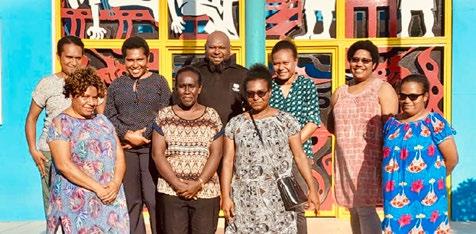
Dr Cooper, a former chair of ANZCA’s Global Development Committee and Adjunct Professor of Anaesthesiology at the University of PNG, said it was heartening to be able to return to the country for the 2022 exams after spending the past three years assessing candidates remotely from Australia through Zoom sessions.
“You get so much more from talking to someone in person than sitting in front of a screen and obviously with some of the clinical assessments it helps to be able to watch what they’re doing in the same room."
“These are the best results in 30 years but importantly it means there will be more anaesthetists coming through to add to the 20 or so anaesthetists now working in PNG.”
Dr Cooper said the PNG anaesthesia education program was now recognised as a leader in the Pacific region along with the Fiji program. Medical graduates from the Solomon Islands, Vanuatu, Timor Leste and Tuvalu were now seeking out specialty education opportunities in PNG and Fiji for anaesthesia training.
Dr Cooper’s recent return to Port Moresby for the exam assessments meant he was able to reconnect in person with many of his PNG anaesthesia colleagues including anaesthetist Dr Arvin Karu, who is the country’s sole higher post graduate diplomate in specialty anaesthesia (cardiothoracic anaesthesia).
ANZCA and other medical colleges are working with the University of PNG to further develop opportunities for more anaesthetists and specialists to complete two-year higher post graduate specialty diplomas to help strengthen the country’s specialist medical workforce.
Dr Cooper said the College of Intensive Care Medicine was also providing significant support for the development of intensive care as a specialty in PNG.
Carolyn
Media Manager,
Above images, from top:
Candidates
68 ANZCA Bulletin | Autumn 2023
Jones
ANZCA
from left: (back row) Naomi Philip, Masina Masin, Dan Aisi, Janice Buleka, Joyce Lawrence; (front row) Clementine Goimba, Jennifer Sigoto, Maryanne Posenu, and Michelle Masta (Lecturer SMHS UPNG); Examiners, from left: Pauline Wake, Mark Nicholls, Michael Cooper, Harry Aigeeleng, Arvin Karu. (Missing examiners are: Michelle Masta, Magea Pole, Lisa Akelisi-Yockopua, Keno Temo, Maria Moguna.)
Pacific PAINTS: A new approach to paediatric anaesthesia
The last time Sydney-based fellow Dr Nilru Vitharana flew over the tops of the coconut trees at Nausori Airport, Fiji was when she left the country following a placement as the Australian Society of Anaesthetists (ASA) Pacific fellow in March 2020.
The impact of COVID-19 was already noticeable in Fiji with disruption to global supply chains affecting the availability of equipment and medication, and the fear of what this would mean to a health system that was already strained. It had been an uncomfortable feeling leaving the family of anaesthetists at Colonial War Memorial Hospital in Suva not knowing what lay ahead.
In the following two disrupted pandemic years, ANZCA and the ASA transitioned to remote teaching and support via the Pacific Online Learning and Education (POLE) program and Zoom exam tutorials for registrars. However, nothing could replace the benefits of in-person teaching.
But as the COVID wave passed through the Pacific and travel in the region normalised, it was time to return.
In July 2022, Nilru and FANZCA Dr Meg Walmsley created and facilitated the first “Pacific Paediatric Anaesthesia InSitu Teams” (Pacific PAINTS) course in Suva. The half-day simulation course covers the principles of management of the critically unwell child and common anaesthetic emergencies in low-resource settings.
Paediatric anaesthesia is a subspecialist area of need and a huge component of the clinical workload in the Pacific, with many complex cases being managed by general anaesthetists in a resource-limited setting. The course was conducted over two weeks with strong attendance from local consultants and trainees. The goal of Pacific PAINTS is to improve paediatric patient safety and improve the delivery of quality paediatric healthcare in a resource-limited environment while improving the confidence of anaesthesia providers in managing these situations.
Course participant Dr Ieli Fakraufon, head of the department of anaesthesia at Colonial War Memorial Hospital said:
“We were certainly grateful to you for taking the time out and running the course with us here in Fiji. The format of the training was really good with minimal disruption to the service. The best part of the training for me, was that it was a good paediatric refresher, the course was on point and did not waste any time and most importantly addressed common issues we encounter on a regular basis”.
The course had very positive feedback with requests from many participants for it to be repeated and expanded. With the support of ANZCA, the course will return to Fiji in 2023 with additional sites across the country to be added to the program including the regional Fijian centres of Lautoka and Labasa. This will minimise barriers to accessing teaching for those practicing anaesthesia in regional areas. Senior paediatric anaesthetist Dr Sally Wharton and recent ASA Pacific fellow Dr Alice Goldsmith will also join as additional facilitators.
Meg and Nilru would like to acknowledge the significant contribution of Dr Wharton, medical simulation co-lead at the Sydney Children’s Hospital Network, for her guidance and input with this project.
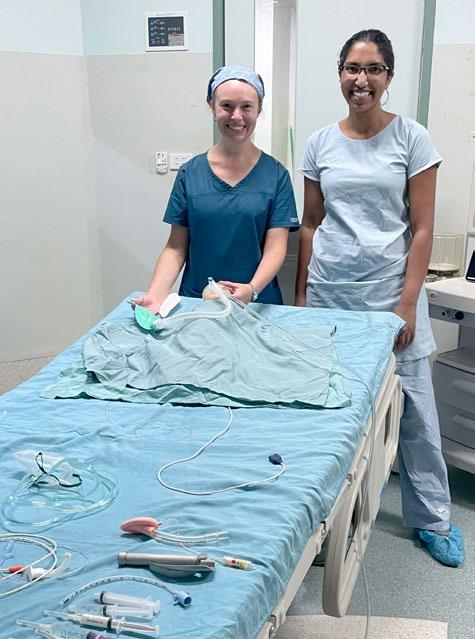
In 2023 this activity will be supported in full by a grant from the ANZCA Research Foundation, as part of the ANZCA Health Equity Projects Fund.
Dr Nilru Vitharana, FANZCA Staff specialist anaesthetist, The Children’s Hospital at Westmead
Dr Meg Walmsley, FANZCA Assistant Professor of Anaesthesia Fiji National University
GLOBAL DEVELOPMENT 69
Above: Dr Meg Walmsley (left) and Dr Nilru Vitharana
Training & Education
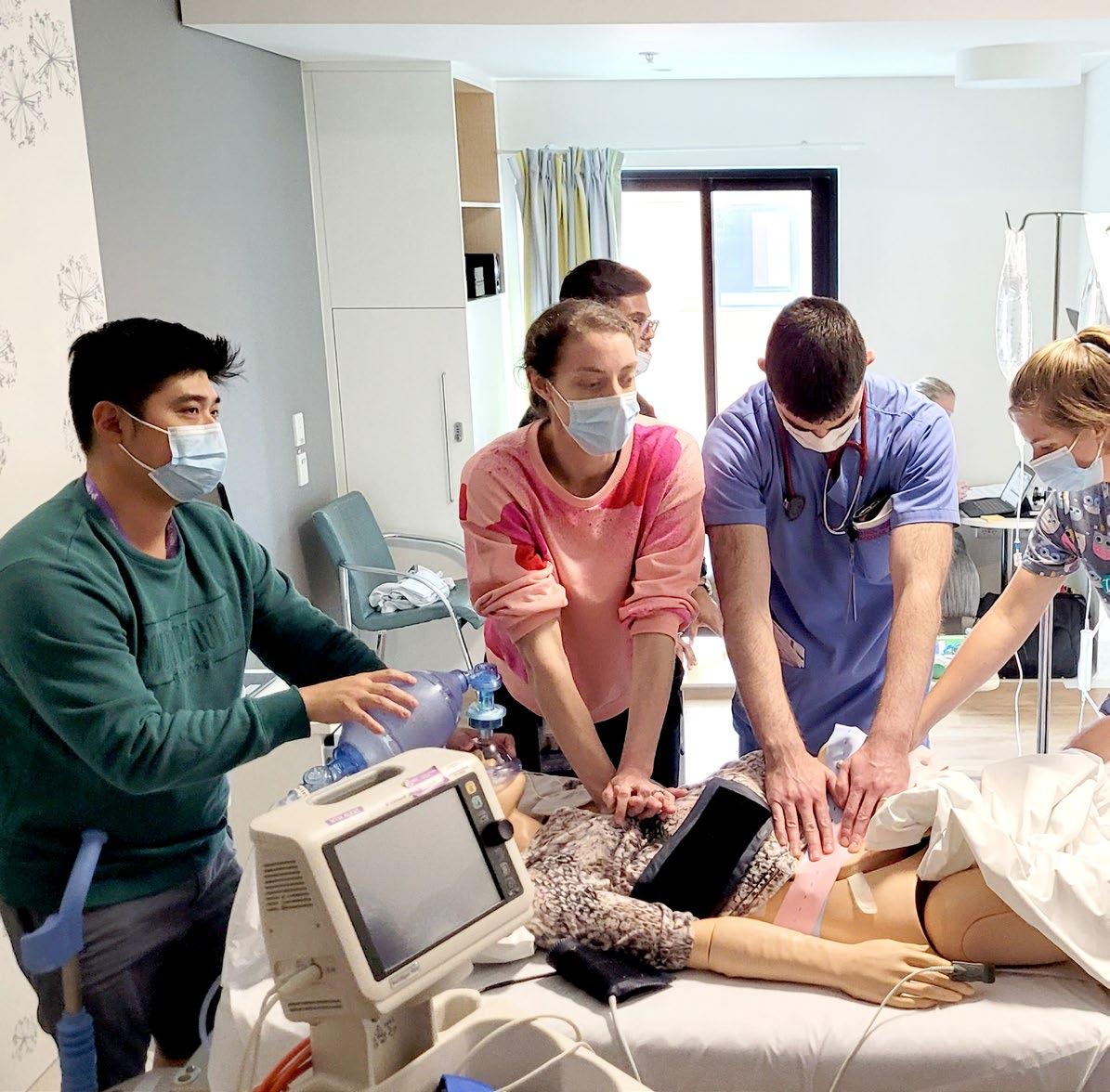
Training starts for new diploma of rural generalist anaesthesia
More than 40 candidates for the new Diploma of Rural Generalist Anaesthesia (DipRGA) are now training. The diploma is a 12-month qualification developed by the college in collaboration with the Australian College of Rural and Remote Medicine (ACRRM) and the Royal Australian College of General Practitioners (RACGP).
Rural generalists with advanced training in anaesthesia play vital roles in providing life-saving services to patients in many rural and remote communities across Australia. The DipRGA provides training to produce rural generalist anaesthesia graduates who can deliver safe anaesthesia and perioperative care in rural and remote settings for patients classed as ASA 1, 2 and stable 3 undergoing elective surgery, and patients requiring emergent surgery.
This includes obstetric and paediatric patients (within scope of practice) and the resuscitation and stabilisation of patients for transfer when required.
The diploma is available to rural generalist registrars seeking formal training and certification in anaesthesia who are enrolled in the fellowship of the ACRRM training program and/or the fellowship of the RACGP rural generalist training program. It may also be applicable to those who have gained fellowship with ACRRM or RACGP in the rural pathway and wish to gain an additional qualification in anaesthesia in the rural setting.

DipRGA
Rural generalists who have completed training and certification before 2023 will continue to be recognised after the introduction of the diploma. Existing rural generalist anaesthetists will be able to practice with in-scope anaesthesia procedures subject to their usual local clinical privileging arrangements.
The diploma curriculum is based on the ANZCA anaesthesia training curriculum and includes three key components:
1. Rural generalist anaesthesia roles in practice – these emphasise a comprehensive orientation to practice utilising the CanMEDS framework originally developed by the Royal College of Physicians and Surgeons of Canada as a basis.
2. Rural generalist anaesthesia clinical fundamentals – these define the fundamental specialty knowledge and skills of rural generalist anaesthetists applicable across all areas of practice.
3. Specialised study units – these define the further specialised knowledge and skills required for the anaesthetic management of patients in specific contexts.
The college thanks the hard-working members of the Tripartite Committee of Rural Generalist Anaesthesia, particularly Dr Pete Gilchrist from RACGP and Dr Neil Beaton from ACRRM, and the members of the many working groups and staff from the three colleges.
Further information about the diploma is available on the college website.
Associate Professor Deborah Wilson Chair, Tripartite Committee of Rural Generalist Anaesthesia

DIPLOMA OF RURAL GENERALIST ANAESTHESIA
TRAINING & EDUCATION 71
Trainees off to a fresh start at Canberra Hospital
February saw another round of fresh and eager faces join the department of anaesthesia at Canberra Hospital for orientation before starting clinical work.
The five-day program aims to improve the speed of technical skill acquisition using simulation and task trainers, and ensure trainees are aware of important patient safety issues and “red flags”.

The orientation for new trainees began at the hospital in 2019 and was inspired by a competency-based training system pioneered by an orthopaedic training program in Toronto, Canada. That program immersed trainees in handson teaching and simulation early in their training, allowing doctors to quickly acquire technical skills without the risk of harming patients. When these doctors started clinical work their supervisors gave them more scope, enabling them to proceed more rapidly through the training program.
Hands-on sessions are prioritised – for example, the teaching of lumbar epidural insertion with mannequins, ultrasound guided vascular access and regional anaesthetic techniques with phantoms. A trainee familiar with an ultrasound who is taught a proven technique for ultrasound guided vascular access is far more likely to use it in first year training rather than waiting until later to learn and perfect this important skill.
The anaesthesia department at Canberra Hospital has sought to standardise the teaching of several procedures to decrease practice variability and increase patient safety with, for example, lumbar epidural insertion and central venous catheterisation. To facilitate this, we made videos for the department outlining the expected techniques, and the orientation provides an opportunity to teach these skills. An added benefit has been that supervisors of a procedure being performed by a new trainee are more comfortable as there is a shared mental model of how the procedure will be performed.
Similarly, the registrar’s role in other quality improvement initiatives in the hospital is also taught, for example the response to a patient with a chest injury pathway activation, or the response to a call about a patient with a thoracic epidural and leg weakness.
A focus is also placed on providing new trainees with skills for the initial management of situations of consequence they may be exposed to early in their training, for example, managing a labour epidural complication such as inadvertent dural puncture, maternal bradycardia, or maternal collapse. Feedback is sought for each session of each day, and modifications have been made to the program based on previous years. Airway management was not included during the first years of the program as trainees do not manage an airway unsupervised early in their training. Trainees told us they would find this useful so a simple, hands-on introduction to basic airway management has now been included and this has been positively received.
We have seen unexpected benefits of the orientation. Trainees who are new to Canberra say it is a great way to ease into a new role, get advice from other registrars who live in Canberra on practical issues such as parking and study groups, and meet senior staff before starting their clinical roles. They also appreciate the department's investment of both time and energy in them.
The registrar cohort seems to be more collegial with new registrars having five days to form friendships before starting on different rotations and rosters. There is also the added benefit of providing introductory trainees with sessions that satisfy the ANZCA curriculum.
Preparing a five-day orientation program such as ours has taken a considerable amount of effort from many staff in our department, and it could not happen without them.
The support of our department director, deputies and administration team is also critical to ensure senior staff are relieved from clinical duties to prepare and teach. With this support and investment, we hope to create the next generation of awesome anaesthetists.
Dr Andrew Deacon,
Canberra Hospital
72 ANZCA Bulletin | Autumn 2023
FANZCA
Dr Freya Aaskov, FANZCA Canberra Hospital
Trainees enjoying the five-day orientation program at Canberra Hospital.
ANZCA Clinical Trials Network
NEW MULTI-MILLION DOLLAR CARDIAC SURGERY TRIAL UNDER WAY
This year promises to be the year we rebuild our network from the downturn of clinical trial activity during the pandemic. CTN investigators have continued to build on the brilliant track record for the CTN by securing a multi-million dollar Medical Research Future Fund (MRFF) grant to run a new ANZCA Clinical Trials Network-endorsed trial. The first cardiac surgery patients have been recruited to CALIPSO trial at Alfred Health and the brand new Victorian Heart Hospital. The trial team is engaging with interested fellows and research teams to take part including St George’s Hospital, which is new to CTN research.
We have a number of trials underway which are open to new hospital sites taking part.

Visit www. anzca.edu.au/ctn for more information about these studies and how you can be involved.
CALIPSO TRIAL: THE DURATION OF CARDIAC ANTIMICROBIAL PROPHYLAXIS OUTCOMES STUDY
A team led by Professor Trisha Peel, an infectious diseases physician at Alfred Health and Monash University, secured a record $A8 million grant from the Medical Research Future Fund to perform the CALIPSO trial. The five year CALIPSO trial is a large (n=9180), multicentre, adaptive, pragmatic, double-blind, three-arm, placebo-controlled, randomised, non-inferiority clinical trial examining the optimal duration of antibiotic therapy to prevent infections in patients undergoing cardiac surgery. The trial aims to compare the incidence of surgical site infection (and other healthcare associated infections), health economic and microbiological impact after intraoperative only (Arm A), to 24 hours (Arm B) and, to 48 hours (Arm C) of IV cefazolin and placebo postoperative surgical antimicrobial prophylaxis.
Cardiac surgery is the highest volume major surgery performed in Australia, and healthcare associated infections (HCAI), including surgical site infections (SSIs), complicate up to 15 per cent of these operations. In patients undergoing cardiac surgery, the administration of antimicrobial
prophylaxis in the intraoperative period is associated with a five-fold reduction in the risk of SSI when compared with placebo. Current debate has now centred on whether there is an additional benefit with the administration of antimicrobials in the postoperative period.
While the World Health Organization currently recommends against continuation of antimicrobial prophylaxis postoperatively, the decision is based on the low quality of evidence available and potential harms associated with prolongation of antimicrobial prophylaxis. This differs from guidelines published by the Society of Thoracic Surgeons in the United States, which recommended postoperative antimicrobial prophylaxis should be administered for 48 hours or less, and with the Australian Therapeutic Guidelines: Antibiotic, which suggests administration of antimicrobial prophylaxis up to 24 hours postoperatively.
A systematic review and meta-analysis by the study team identified that when comparing placebo to active antimicrobial prophylaxis, the pooled absolute risk difference for SSI was 15.8 per cent (placebo 20.2 per cent versus active prophylaxis 3.8 per cent: 95 per cent CI 8.1 – 23.5). Additionally, a national survey including more than 19,000 procedures conducted by CALIPSO Principal Investigator Trisha Peel to audit current practice for Surgical Antimicrobial Prescribing also demonstrated 78 per cent of patients undergoing cardiac surgery received postoperative doses of antimicrobial prophylaxis and 35 per cent of these prescriptions extended up to 48 hours postoperatively.
These findings in addition to the results of the meta analysis confirm there is equipoise about the optimal duration of antimicrobial prophylaxis. Engagement with our cardiac surgeon collaborators has identified that, for practice change and uptake of guidelines recommendations, further evidence is required to demonstrate that shorter durations of antimicrobial prophylaxis are not associated with an increased risk of postoperative infections. The CALIPSO trial is uniquely placed to weigh the benefits and risks associated with prolongation of antimicrobial prophylaxis, and change global practice around antibiotic therapy for heart surgery.
TRAINING & EDUCATION 73
Above: The St George Hospital and CALIPSO project teams preparing to get CALIPSO underway at St George Hospital, NSW: Dr Jing Wang, Ms Rachel Morland, Ms Vicki Nettle, Honorary Associate Clinical Professor Natalie Smith, Ms Paige Druce, Ms Sarah Astbury.
ANZCA Foundation update
2024 RESEARCH GRANT APPLICATIONS
Thank you to all those ANZCA researchers who have submitted applications for ANZCA Foundation research grants for projects to commence from January 2024. The grant round has now closed. The research committee and foundation strongly encouraged funding applications, particularly from Aboriginal, Torres Strait Island, Māori, novice or emerging investigators, women investigators, and our researchers in regional centres.
Previously unsuccessful applicants were also strongly encouraged, as subsequent applications, revised to address issues raised by reviewers in constructive feedback on previous applications, are very often successful.
CONSIDERATION OF OPPORTUNITY
This round’s revised application forms allowed applicants to document the effects of career disruptions from events such as pregnancy and childbirth on their opportunities to develop research track records, for consideration in the review process. The committee looks forward to now being able to take these factors into consideration.
NEW ANZCA PROFESSIONAL PRACTICE RESEARCH GRANTS
Potential applicants were also reminded that the two most highly ranked applications for the new “ANZCA Professional Practice Research Grants” being offered for the first time in 2024, will be guaranteed of 100 per cent funding, provided they are deemed to be of fundable quality.
To encourage research in this important field, these will also be assured of funding regardless of whether there are more highly ranked project grant applications.
A new Professional Practice Research Guide was made available in 2022 in the ANZCA Library website pages, providing a range of resources to assist in designing, conducting and funding such research.
PLEASE SUPPORT THE ENVIRONMENT AND SUSTAINABILITY GRANT
Many fellows and trainees are deeply concerned about the environmental footprint of perioperative medicine, and the need for more sustainable practices with equivalent or better patient outcomes. High-quality research is needed, so the foundation increased funding for its new Environment and Sustainability Research Grant from $A15,000 to $A25,000 in 2024.
We are still urgently seeking donations to support this exciting award for it to succeed. Please consider being part of the solution by donating. Contact the foundation, or donate via our online giving portal (search “ANZCA gift options”).
SUPPORTED COVID-19 STUDY AMONG MOST CITED
The study “Prevalence of SARS-CoV-2 Infection in Elective Surgical Patients in Victoria: A Prospective Cohort Study (COVID Prevalence)”, led by Professor Paul Myles, was among the top cited papers in the ANZ Journal of Surgery during 2021-22. Authors also included ANZCA investigators Professor David Story, Professor Andrew Davidson, Dr Niki Tan, Dr Andrew Jeffreys, and Professor David A Scott.
The ANZCA Foundation and Professor Story brokered a $A30,000 grant from the Medibank Better Health Foundation for the study, which aimed to determine the prevalence of active SARS-coronavirus-2 infection during a second wave of elective surgery patients in Victoria.
The investigators found a very low prevalence (1 in 833), and recommended re-commencement of elective surgery be considered with mandated coronavirus screening, significantly influencing renewed patient access to urgent surgery, anaesthesia, and perioperative care.
$A2.9 MILLION FROM MRFF FOR SN a PP STUDY
The foundation congratulates ANZCA fellow Professor Kate Leslie AO and her team on recently being awarded $A2.9 million from the Australian Medical Research Future Fund, for the “Sugammadex, neostigmine and postoperative pulmonary complications (SNaPP) study”.
The multicentre clinical trial will be administered by the ANZCA Clinical Trials Network and compare the reversal agents neostigmine and sugammadex. The study will look at pulmonary complications, quality of life, and costeffectiveness to provide high-quality evidence for future practice.
JOIN THE FOUNDATION AT THE ASM
We are delighted to again hold the ANZCA Foundation Cocktail Reception at the ASM. The event will be held from 6.30-8pm on Sunday 7 March at the Sydney International Convention Centre. Please join us to celebrate and recognise our inspirational researchers.
We are excited to announce our keynote speaker, Dr Emily Colvin, President of the Australian Society for Medical Research, who will speak on why it is important to support researchers at all stages of career and the research program lifecycle.
Research Committee Deputy Chair Dr Matthew Doane will chair the prestigious Foundation Research Awards ceremony. Guests can register through the ASM meeting registration page on the ANZCA website.
74 ANZCA Bulletin | Autumn 2023
ANZCA MELBOURNE AWARDS AND SCHOLARSHIP FOR 2024
These prestigious emerging investigator grants through the great philanthropy of Governor Patron, Dr Peter Lowe, commenced in 2015 and have now been awarded for 2024.
The ANZCA Melbourne Emerging Anaesthesia Researcher Award (AMEARA), has been awarded to Dr Shervin Tosif of Austin Health, for his study “Dexamethasone and Albumin in Major Abdominal surGEry to Protect the Endothelial Glycocalyx: DAMAGE Translational Trial”.

The ANZCA Melbourne Emerging Researcher Scholarship (AMERS) was awarded to Dr Jess Davies, also from Austin Health, for her study “Translating environmental sustainability evidence into clinical practice in Australian hospitals”.

The ANZCA Foundation warmly congratulates Dr Davies and Dr Shervin.
THANKS TO OUR PRESIDENT’S PATRONS AND DONORS
The foundation thanks Dr Andrew Jeffreys from Western Health, Victoria, who recently became a president’s patron, and Dr Alexander Cottle from Cairns, Queensland, who became a president’s patron in June 2020, for their ongoing generous support.
Thank you to all of our generous donors and particularly our patrons, who regularly support our efforts to assist the wonderful work of our fellows in research, and global and Indigenous health.
Rob Packer
General Manager, ANZCA Foundation
rpacker@anzca.edu.au
+61 3 (0)409 481 295
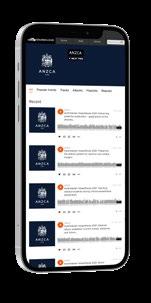
To donate, search “GiftOptions – ANZCA” in your browser or contact Rachel Kibblewhite, Fundraising Administration Officer, rkibblewhite@anzca.edu.au
For information on the research grants program contact Susan Collins, Research and Administration Co-ordinator, scollins@anzca.edu.au.
ANZCA FOUNDATION 75
We’ve
Listen to the Blue Book on the go! You can stream these on our ANZCA
and listen via
Listening to these audio recordings can be claimed under the ANZCA and
CPD Program’s knowledge and skills “learning sessions” activity. Thank you to Dr Peter Cook FANZCA from The Tweed Hospital for voicing the audio recordings.
Images from top: Melbourne Emerging Anaesthesia Researcher Award (AMEARA), recipient Dr Shervin Tosif. ANZCA Melbourne Emerging Researcher Scholarship (AMERS) recipient Dr Jess Davies.
recorded 10 chapters of the 2021 edition of Australasian Anaesthesia (commonly referred to as the Blue Book) so you can listen on the go.
SoundCloud page
Spotify Apple Podcasts and Google Podcasts.
FPM
Library news
ANZCA LIBRARY AT THE 2023 ASM
ANZCA Library will be running its first in-person workshop for several years.
Beyond Google: An introduction to the ANZCA Library
An introduction to the wide range of library resources available to fellows and trainees, with a focus on the primary and most useful tools, products, and services. After attending the session, participants will have a greater awareness and understanding of the resources and services – Including the library discovery service – and tips and tricks for using them.
The session will be held on Friday 5 May and runs for 90 minutes. Attendees can register via the ASM portal.
You can also find out more about the ANZCA Library at the ANZCA and FPM Lounge located in the healthcare industry area. Library and CPD staff will be available during all breaks from Saturday to Tuesday and will be more than happy to answer any library-related queries you may have. We’ll also be attending the FPM Symposium on Friday 5 May.
Learn on the run with the updated AudioDigest collection
AudioDigest provides instant online and mobile access to accredited audio lectures and board reviews presented by experts from leading international institutions, providing both trainees and fellows with a convenient "learning on the run experience".

The AudioDigest collection has been fully updated for 2023 and includes several hundred new and topical lectures covering such diverse subjects as managing COVID-patients in the theatre, anaesthetic complications and airway management.
Many of the new lectures have been embedded into the relevant topic-related guides available via the library. See our updated AudioDigest guide for further information including full access details: https://libguides.anzca.edu.au/ apps/audiodigest
Australian Journal of Rural Health now available

Alongside the newly launched RGA course, the library is undertaking a 12-month trial subscription to the Australian Journal of Rural Health. AJRH includes articles on anaesthesia, pain medicine, medical education and indigenous health practice in a rural/remote context. User can access
the journal via our Journals page, the Rural library guide or BrowZine.
The library has also recently purchased access to the Pediatric Anesthesia and Emergency Medicine Australasia backfiles, with both titles now available from 1991. For Pediatric Anaesthesia, this now means we have full online access from volume 1.
New RGA training library guide
As part of the rollout of the Rural Generalist Anaesthesia (RGA) course, the library – in conjunction with members of the DRGA working group – has created a new RGA-focussed training guide.
The guide provides support resources covering roles in practice, clinical fundamentals, the specialist study units, assessment/exams, rural and remote practice, as well as the numerous apps, websites and resources RGA trainees may find useful: https://libguides.anzca.edu.au/drga
The library – in conjunction with the Faculty of Pain Medicine – has also recently updated access to the FPM Essential Topic Areas reference lists. The content for the lists has been thoroughly revised to match the updated FPM curriculum.
The updated reference content has moved to online access – where available – to ensure the most current version of the resource is available to FPM trainees. The FPM Essentials tab of the Pain Medicine training guide is now the primary access point for all FPM Essential Topic Areas (ETAs) reference content: https://libguides.anzca.edu.au/paintrain
In addition, the library has recently updated several of its hubs. The Training and exams, Professional development and Research hubs have all been updated to provide quicker, more seamless access – especially on mobile devices. The hubs are specifically designed to allow top-level access to relevant resources available not only within the library, but also on the college website and within the new Learn@ANZCA portal.
AIRR update
Users of the ANZCA Institutional Research Repository (AIRR), will have noticed a number of changes to the look, feel and functionality of AIRR over the last few months.
The library is in the last stages of migrating AIRR to a new platform which offers the ability to create enhanced Researcher and Grant profiles for any ANZCA-related author/ researcher.
The enhanced functionality allows for a more integrated display of their authored publications, as well as any associated ANZCA grants.
A full overview of the updated functionality will be covered in a future Bulletin
76 ANZCA Bulletin | Autumn 2023
New books
NEW TRAINING BOOKS
A number of new training-related titles are now available online: https://libguides.anzca.edu.au/ training-hub
NEW BOOKS FOR LOAN
Books can be requested via the ANZCA Library discovery service: http://www.anzca.edu.au/resources/ library/borrowing
NEW EBOOKS
The First year: what you should know after a year of anaesthesia training (revised edition)
Rathie L. February 2023 ed. Toowoomba, Qld.:` Self-published, 2023.
Pain in residential aged care facilities: management strategies, 2e Scherer S, Twigg O, Wallace M, et al. North Sydney, NSW: Australian Pain Society, 2019.
Hagberg and Benumof's airway management, 5e

Hagberg CA, Artime CA, Aziz MF, eds. Philadelphia, PA: Elsevier, 2023.
Goodman & Gilman's the pharmacological basis of therapeutics, 14e

Brunton LL, Knollmann BC, eds. 14th ed. New York: McGraw Hill, 2023.
The adult learner: the definitive classic in adult education and human resource development, 9e
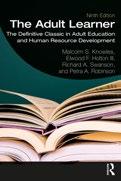
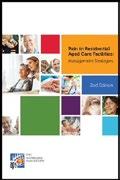

Knowles MS, Holton EF, Swanson RA, Robinson PA. Abingdon, Oxon: Routledge, 2020.
Savage & Aronson's comprehensive textbook of perioperative and critical care echocardiography, 3e

Nicoara A, Savage RM, Skubas NJ, Shernan SK, Troianos CA. Philadelphia: Lippincott Williams & Wilkins, 2023.
Morgan & Mikhail's clinical anesthesiology, 7e

Butterworth JF, Mackey DC, Wasnick JD, eds. New York: McGraw Hill, 2022.
Hadzic's peripheral nerve blocks and anatomy for ultrasound-guided regional anesthesia, 3e
Lopez A, Balocco AL, Vandepitte C, Hadzic A, eds. New York: McGraw Hill, 2022.
COME AND MEET MATILDA
Hadzic's peripheral nerve blocks and anatomy for ultrasound-guided regional anesthesia, 3e
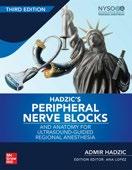

Lopez A, Balocco AL, Vandepitte C, Hadzic A, eds. New York: McGraw Hill, 2022.
Access the complete list of newly added titles on our website: https://libguides. anzca.edu.au/latest.
Anesthesia student survival guide: a case-based approach, 3e

Ehrenfeld JM, Urman RD, Segal S, eds. Cham, Switzerland: Springer, 2022.
Matilda is a 1950s Bondwood caravan that’s been refitted as a mobile sound recording booth and The Geoffrey Kaye Museum of Anaesthetic History is bringing Matilda to the ASM! We want to record your memories of Covid-19, your thoughts for the future of your specialty, or whatever else you think the futuremight want to know about the present.
Visit us at the ANZCA Lounge in the ASM healthcare industry exhibition to book in a time to record your thoughts.

ANZCA LIBRARY 77
Choice Challenge Change































































































































































International Keynote Speakers



















A/Professor Gunisha Kaur Professor Jennifer Weller Dr Vanessa Beavis
Next Generation Keynote Speakers
A/Professor Jai Darvall

A/Professor Lachlan Miles

A/Professor Julia Dubowitz
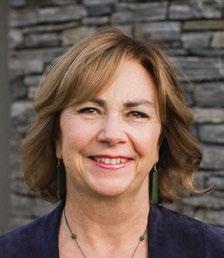

The Australian Society of Anaesthetists annual National Scientific Congress will be held in Melbourne in October 2023. This in person Congress will include a fantastic scientific program featuring distinguished international keynote speakers. Non-Scientific program includes Welcome party on 4 Oct, Gala dinner on 6 Oct, laneway tours and more. It is the perfect opportunity to meet research and prize winners and collect Practice Evaluation CPD points that will meet the new CPD program, all while networking and socialising with colleagues. International speakers in addition to Keynote Speakers include Prof. Elizabeth Malinzak, Prof. Ramani Moonesinghe and Prof. Robert Hanh.
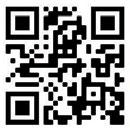


78
Bulletin | Autumn
ANZCA
2023
Melbourne Convention and Exhibition Centre www.asansc.com.au
ADVERTISEMENT
Looking for the regional news section?
Your regional news is now delivered monthly via the ANZCA E-Newsletter. The monthly digest of Australian regional news, events and courses, and committee updates can also be found on the ANZCA website in the news section – search for “regional wrap”.

ANZCA online




Wherever you go to for information, events, news, and networking, we’ve got you covered! Follow us...
@ANZCA and @ANZCA_FPM for daily updates on what’s going on in the world of anaesthesia and pain medicine. Don’t forget to tag us in tweets of interest and DM us if you have any questions or suggestions.
@ANZCA1992 for events and opportunities to get involved in your college. It’s also the perfect platform for sharing stories about your specialist interests with family and friends.
the_anzca for an intimate insight on college life; and tag us in your own ANZCA-related activities.
Australian and New Zealand College of Anaesthetists to connect and collaborate with your college community.
Australian and New Zealand College of Anaesthetists and Faculty of Pain Medicine for all our latest video content, including presentations, patient information, interviews, and oral histories.
Have you got a story you’d like us to share? We’re always looking for new content and we love sharing and celebrating what our members have been up to. Message us directly on your preferred platform, or email communications@anzca.edu.au.
79
Associate Professor Victor Ian Callanan AM
1942 – 2023
Vic Callanan passed away in Townsville on 4 February. It was perhaps fitting that around the time of his death, Townsville, his home for most of his professional life, was lashed by a spectacular tropical storm.
An accomplished and extraordinarily respected clinician, organiser and teacher, Vic made huge contributions to medicine in the fields of anaesthesia, intensive care, hyperbaric medicine, pain medicine and resuscitation, and to the North Queensland community more broadly.

Vic was born in Lismore on 22 May 1942, his mother having been moved from Brisbane at the height of the threat of Japanese invasion. They returned to Queensland two years later, and Vic essentially remained a proud Queenslander for the rest of his life.
After attending Brisbane Grammar School for his secondary education, Vic studied medicine at the University of Queensland, graduating in 1965. He worked as an intern at the Royal Brisbane hospital before becoming the medical superintendent of Home Hill hospital for four years, which was a requirement to repay his scholarship to the Queensland Government.
Vic moved back to Brisbane in 1971, spending two years as an anaesthesia registrar at the Mater hospital before moving to Sydney for another two years at St Vincent’s hospital undertaking further training in anaesthesia and intensive care.
Vic returned to the north in 1975 having been invited to take up the position as director of anaesthesia and establish the anaesthetic department. He essentially built the intensive care unit from scratch, and over the next few years founded the pain service and the hyperbaric medicine unit. He remained director of anaesthesia until 2011. His aptitude for and love of hands-on clinical work and clinical mentoring were obvious to all until he retired in 2016.
Vic was a driving force in every aspect of improving medical services in North Queensland. He was central to the expansion of the Townsville General Hospital, constantly pushing for improvements and the establishment of tertiary services − cardiac surgery and oncology being standout examples. He was a passionate advocate of the relocation of the Townsville Hospital to the Douglas campus and spent countless hours helping to make it happen. He was also part of the steering committee to establish a medical school at James Cook University.
Vic’s professional interests were varied and far reaching. He was an expert in the management of marine stings, and many of the preventive and treatment strategies seen in the north are in large part due to Vic.
He was president of the Australian Resuscitation Council and a member of the International Liaison Committee on Resuscitation, constantly advancing the role of cardiopulmonary resuscitation in the community.
80 ANZCA Bulletin | Autumn 2023
He was heavily involved in ANZCA affairs including as an examiner, regional committee member and the initial perioperative medicine committee. He was medical advisor to Surf Lifesaving Queensland, Queensland Ambulance and the Anton Breinl Centre of James Cook University.
Vic received many accolades throughout his life, including the Renton Prize for the primary examination, the Australian Resuscitation Council Roll of Honour, the ARC Medal, the ANZCA Citation and in 2005 the Member of the Order of Australia.
While undertaking his many professional achievements Vic maintained a love of music, especially Italian opera, and was a skilled wood craftsman. His deteriorating health in later life limited his ability to pursue these interests, a situation that he bore with remarkably good grace.
For many of us, Vic’s greatest legacy is the profound influence he had on generations of doctors of every level due to the wonderful example he set.
He had an amazing combination of being incredibly bright, fantastically knowledgeable, had great practical common sense and unparalleled technical skill. He was also incredibly cool under pressure and was empathic and compassionate to staff, patients and their relatives.
Vic was very approachable, ready to offer advice and support colleagues which encouraged even the most junior staff to ask for help. Many did and still remember those conversations to this day. Even after retirement he enjoyed interacting with colleagues and many insights were gained over a coffee with Vic.
Vic is survived by his wife Doreen, his loving extended family, and a legacy of clinical and personal excellence. He helped guide the professional careers of countless anaesthetists and intensivists throughout Australia. We have truly stood on the shoulders of a giant and are forever in his debt.
Vale Vic.
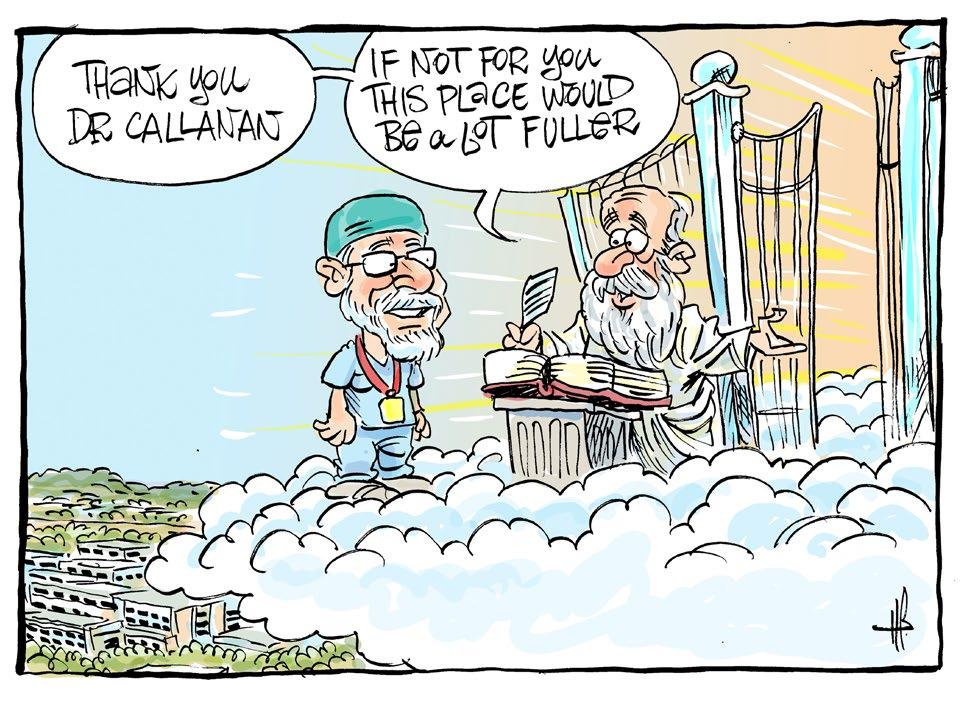 Dr Chris Butler FANZCA Senior staff specialist Department of Anaesthesia Townsville University Hospital
Dr Michael Corkeron FANZCA Senior staff specialist
Dr Chris Butler FANZCA Senior staff specialist Department of Anaesthesia Townsville University Hospital
Dr Michael Corkeron FANZCA Senior staff specialist
Departments
of Anaesthesia and Intensive Care
Townsville University Hospital
OBITUARY 81
The cartoon from the Townsville Bulletin published on 7 February has been reproduced with kind permission of the cartoonist Harry Bruce
Dr Diana Cooper

1952 – 2022
Diana was born in Ryde, Sydney on 20 June 1952, the second of three children of Colin Cooper, a career army officer and his wife Philomena.
Her early childhood was spent in Eastwood. She had a younger brother, Peter, and an older sister, Libby, who died, tragically, in 1985, at the age of 37. Diana’s mother Philomena died when Diana was three years old. Her father remarried, to Ursula, a German refugee, who brought with her two children, Robert and Heidi.
Diana grew up speaking German to her new mother and English to her father. After a stint with her sisters as weekday boarders at St Mary’s Catholic Boarding School in Liverpool, Diana completed primary school in Parramatta. The family then moved to Bathurst, where she attended the Diocesan Catholic Girls High School, now known as MacKillop College.
She started her degree in medicine at the University of New South Wales in 1970, mainly, she said, to get out of Bathurst. There she met her future husband, Peter Craig. They were married in 1976.
Both Peter and Diana completed their hospital residencies at Prince of Wales/Prince Henry and associated peripheral hospitals. Peter worked until retirement in solo general practice in Randwick.
Diana was accepted into physician training but withdrew after a year and tutored anatomy at UNSW before starting
training in anaesthesia, again in the Prince of Wales/Prince Henry hospital system. She was one of the first registrars there to be granted maternity leave, for the birth of her son, Julian. On completion of her fellowship, Diana worked in private hospitals, mostly in orthopaedics, plastic, dental, and orofacial surgery, and in endoscopy, while juggling the demands of motherhood, having had her second son, Ashley in 1984.
Julian completed degrees in physics, engineering of renewable resources and medicine. Ashley is an assistant professor of economics at the University of Michigan, soon to return to Australia to work at the Australian National University.
From the mid-1980s Diana worked exclusively in day surgery, principally in the Newland Street Specialist Centre in Bondi Junction, until August 2008, when she and Peter moved to a farm on the south coast of Western Australia. Diana then worked for Western Australia Country Health (WACH) as one of the very few specialist anaesthetists working outside Perth. When she rang WACH to offer her services, the response was “Where have you been all my life?”
She worked in Albany, Bunbury and Geraldton, where she also ran the hospital’s intensive care unit, and trained local GP anaesthetists in advanced procedures. Family circumstances dictated that Diana return to Sydney in 2010, and she returned to working in day surgery, until her retirement in 2019. Her first grandchild Sebastian was born in June 2018, which occasioned a flurry of visits to the US, coinciding also with Ashley’s PhD graduation from Harvard.
Sebby’s sister, Zoe was born in June 2022. Sadly, Diana was never able to hold her granddaughter.
In addition to German, Diana was also competent in Italian, Mandarin and, recently, Arabic. She read extensively, mostly in history and other edifying fields, but was also fond of German crime novels. She was an excellent tennis and squash player, ran second in her age group in the Honolulu marathon, competed in triathlons, and in 2019, raced in the World Masters Swimming Championships.
After retiring from anaesthesia practice, Diana volunteered as a day-care worker for the elderly, and enrolled in Early Childhood Studies at TAFE, intending to work with disadvantaged children, but this desire was not to come to fruition. Diana died at home on 30 September 2022, a year after her diagnosis of pancreatic cancer.
Diana is survived by her husband Peter Craig, sons Julian Craig and Ashley Craig, grandchildren Sebastian Craig and Zoe Craig, brother Peter Cooper and sister Heidi Cooper.
Dr Peter Craig MBBS NSW
82 ANZCA Bulletin | Autumn 2023
Dr William (Bill) Rayner Fuller
1930 – 2022
Bill Fuller was born on 24 February 1930, in Firle, South Australia. He was the third son of George and Mignon Fuller. He was educated at Norwood and Adelaide High Schools and received his Leaving Honours Certificate in 1946. In 1952 he became president of the Norwood High School Old Scholars Association.
Bill graduated in medicine in 1953 having received the Elder Prize in first year.
Bill was an enthusiastic sportsman, excelling particularly in baseball, for which, in 1951, he received the Capps Medal for best and fairest player in the South Australian League. In 1949 he had played in the grand final of the South Australian League which was won by his team at Adelaide University. During his university years he was awarded the University Blue in baseball and the University Club Letters in cricket.
Bill did his internship at the Royal Adelaide Hospital and the Adelaide Children’s Hospital. He spent the years between 1955 and 1962 in general practice and during that time developed an interest in anaesthesia, his practice becoming increasingly as a GP anaesthetist. This led him to join the staff of The Queen Elizabeth Hospital (TQEH) and to specialise in anaesthesia. In 1968 he became a fellow of the Faculty of Anaesthetists of the Royal Australasian College of Surgeons.
Feeling that he needed more experience in cardiac anaesthesia and intensive care, Bill brought his young family to London, spending most of 1969 and 1970 as a senior anaesthetic registrar at Hammersmith Hospital. During this time the family took the opportunity to purchase a campervan and explore Britain and Europe.
On their return in 1971, Bill was appointed senior registrar in anaesthesia at The Queen Elizabeth Hospital, and in 1972 became director of the intensive therapy unit. These were the earliest years of intensive care in South Australia and Bill guided the unit to become a teaching department for trainees in anaesthesia and intensive care. In 1982, Bill decided to return to anaesthesia and was appointed director of the department of anaesthesia and resuscitation at TQEH. During this time Bill developed the concept of the “Friday Scientific Session”, held within the confines of the department, when good wines were nosed, tasted and dissected for their subtle qualities.
In 1995, Bill retired from hospital practice but continued to do locums in Whyalla, Darwin and Mackay, sharing his knowledge and skills for the benefit of country GP anaesthetists. In 1999 he was awarded the ANZCA Medal “for outstanding contributions to the college”.

In retirement Bill continued his interest in good wine, golf and cycling, saying “ride with the wind behind and end up near a train station so you can catch a train home”. He travelled widely with wife Jo, visiting Alice Springs, the Kimberley, Lake Argyle and Darwin, returning on the iconic Ghan.
On a personal note, I am forever grateful for the support and direction Bill offered me when he appointed me a specialist to the intensive care unit in 1976. He was an admired colleague and mentor to many who trained in anaesthesia and intensive Care.
Bill’s was a life well lived and his contributions to medicine were numerous. Bill died on 20 October 2022, after a short illness at the age of 92. He is survived by his wife Jo, his sons Mark and Drew and daughter Penney, his grandchildren and great-grandchildren.
Dr Ron Peisach FANZCA Adelaide
This obituary has been written with the extensive assistance of a history of Bill’s life written by his brother Oliver.
OBITUARY 83
Dr Victor Yeo

1964 – 2022
My brother, Victor, passed away on 22 September 2022, having succumbed to metastatic renal cell carcinoma. He was 57.
Victor was born in Rangoon, Burma (now Myanmar) in 1964. Our family left Burma for Hong Kong when he was five years old. He studied at La Salle Primary School and La Salle College, before pursuing his education in the United Kingdom. He attended St Joseph College, Ipswich and studied medicine at Magdalene College at the University of Cambridge. He later obtained a scholarship to continue his clinical medicine years at Hughes Hall, Cambridge. He began his training in anaesthesia at Leicester Royal Infirmary and rotated among teaching hospitals in Leicester and Sheffield. He moved to neonatology and paediatrics for a year, and also ventured across the Atlantic to work in the US to challenge himself. After obtaining his fellowship in anaesthesia and membership in paediatrics in the UK, he returned to Hong Kong in 1996 and began working at the Prince of Wales Hospital. On completing his anaesthesia training under the ANZCA and Hong Kong College of Anaesthesiologists programs, he decided to pursue a career in intensive care medicine. He obtained his intensive care medicine fellowship under both colleges too and moved on to Queen Mary Hospital Hong Kong in 2000. Besides clinical duties his other passion was teaching. He was an instructor for the advanced trauma life support course and an examiner for the college exams.
Victor left the public health sector to work in private practice in 2010. During his career he treated many patients but the most memorable were the survivors from the Pak Sin Leng wildfire in 1996, and the SARS patients in 2003.
I never asked my brother why he chose anaesthesia and intensive care medicine. It was well known to all his friends that Victor loved reading and indeed enjoyed studying. It was no surprise that he would choose the most demanding field which covered all specialties in medicine, and that he would treat the sickest patients in the hospitals.
Having Victor as my brother was a special blessing. He would use the knowledge he learnt from physiology and apply this to daily life. When I was sitting for my undergraduate exams, he advised me to avoid heavy meals before an exam (to maintain cerebral blood flow), and the advantage of eating candies (the most direct substrate for the neurones). And being a fan of Star Wars and the Jedi Order, he would wish me luck saying, “May the force be with you”.
When we were both anaesthesia trainees, we could discuss our work and our “dilemmas”. And in scenarios where we had to decide whether to intubate the patients or not, he would say: “If in doubt, put the tube down”, a principle by which I still abide. We could discuss our postoperative analgesic regime or how to improve the success rate of our epidural anaesthesia. He would always give you his honest and fair view.
My father told me Victor used to draw pictures of horses all day long when he was young. However, I never saw him draw. In his teen years, his favourite pastimes were making models, playing board games and computer war-gaming. He made models of tanks, fighters, warships and battlefields which were based on real historic backgrounds and along with these activities, he became an expert in world history, especially World War II. Reading was his favourite hobby and Kindle his best gadget. And he would prefer swimming to any other sport. Regarding his musical talent, one must agree his singing of Baa baa black sheep, the only song he would sing every time on requests, was admirable.
When he was undergoing cancer treatment, Victor experienced many, many, side effects. We were distraught and devastated, but Victor was the one to comfort us. He remained his normal calm and intellectual self, balancing the benefits and side effects of the novel treatments he underwent, and analysing his progress as the disease unfolded. Finally, it was the courage he showed in his fight against the disease, the suffering he chose to endure silently, and the selfless love he showed to his family that made him such a remarkable man.
Victor is survived by his wife Alice, his two children, Victoria and Horatio, his parents and three sisters.
Dr Patricia Yeo Anaesthetist Private practice Hong Kong
84 ANZCA Bulletin | Autumn 2023
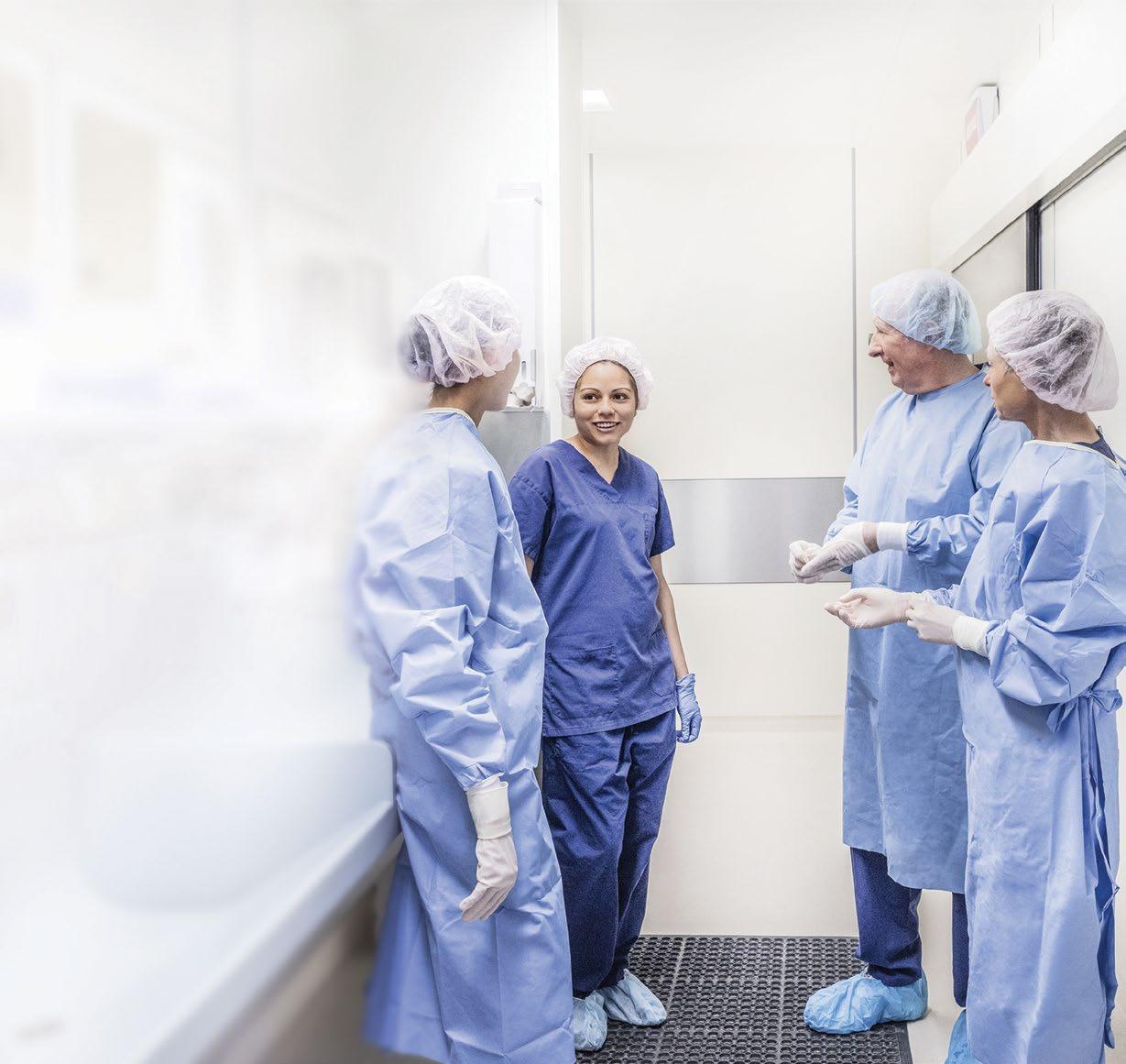


SECTION GOES HERE 85 Tego Insurance Pty Ltd (ABN 34 608 505 960; AFSL 482467) Berkshire Hathaway Specialty Insurance Company (ABN 84 600 643 034, AFS Licence No. 466713) is authorised by the Australian Prudential Regulation Authority as a general insurer in Australia. The information provided here is only a summary of the coverage available and should not be relied upon in any way. Please refer to the Product Disclosure Statement for full terms and conditions and to ensure the cover meets your needs. This information is accurate as at February 2023. Call 1300 834 683 Visit tego.com.au Medical Indemnity Insurance for Specialists Competitive pricing that reflects your actual practice. Newcustomeroff e r 2months free H2011 Security Strength Protection Market leading cover 24/7 Medico-legal support Premiums tailored to suit your specialty New to private practice discounts Protection for your reputation Scan for a quote ADVERTISEMENT
Leading support in your times of need – it’s why more doctors choose Avant


Award-winning defence
Recognised for their experience and expertise, our over 300-strong* medical defence law team provides members with on-the-ground support across Australia.
Comprehensive support
Members have access to our medico-legal experts, 24/7 in emergencies, risk advisers and a comprehensive library of online medico-legal resources.
IMPORTANT: Professional indemnity insurance products are issued by Avant Insurance Limited, ABN 82 003 707 471, AFSL 238 765. Please read the relevant Product Disclosure Statement or policy wording, available at www.avant.org.au before deciding whether to acquire, or continue to hold the product. *Accurate as at 30/06/2022. MJN-859 11/22 (DT-2826)
Dr Paul Scott Avant member
Unrivalled
Experience the Avant difference avant.org.au/practitioners 1800 128 268 ADVERTISEMENT
protection when it matters






















































































































































































 Dr Chris Butler FANZCA Senior staff specialist Department of Anaesthesia Townsville University Hospital
Dr Michael Corkeron FANZCA Senior staff specialist
Dr Chris Butler FANZCA Senior staff specialist Department of Anaesthesia Townsville University Hospital
Dr Michael Corkeron FANZCA Senior staff specialist











